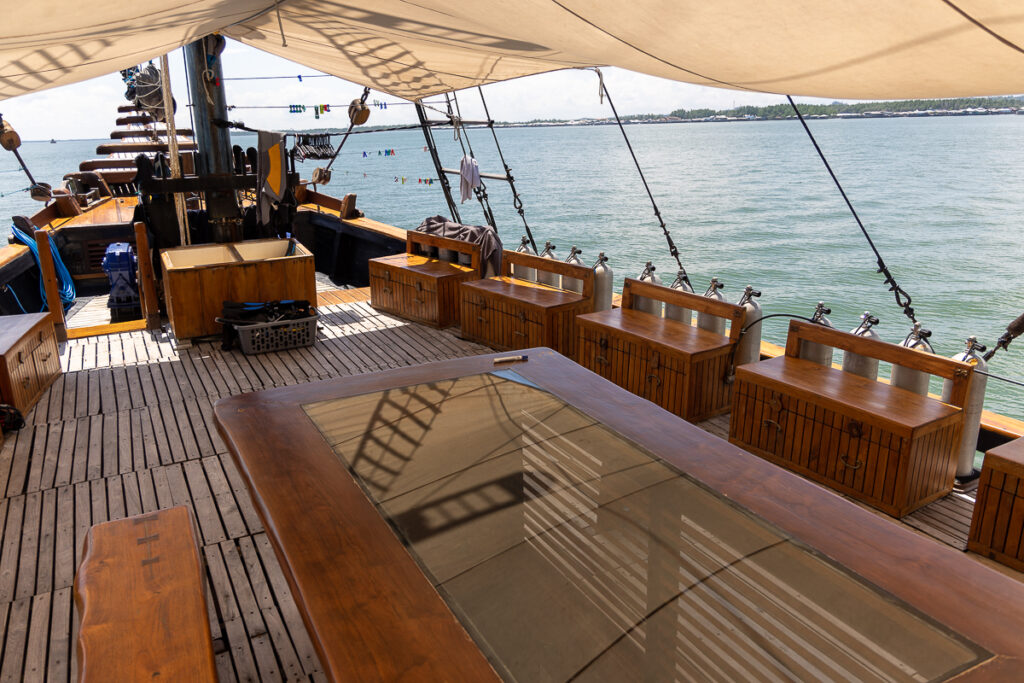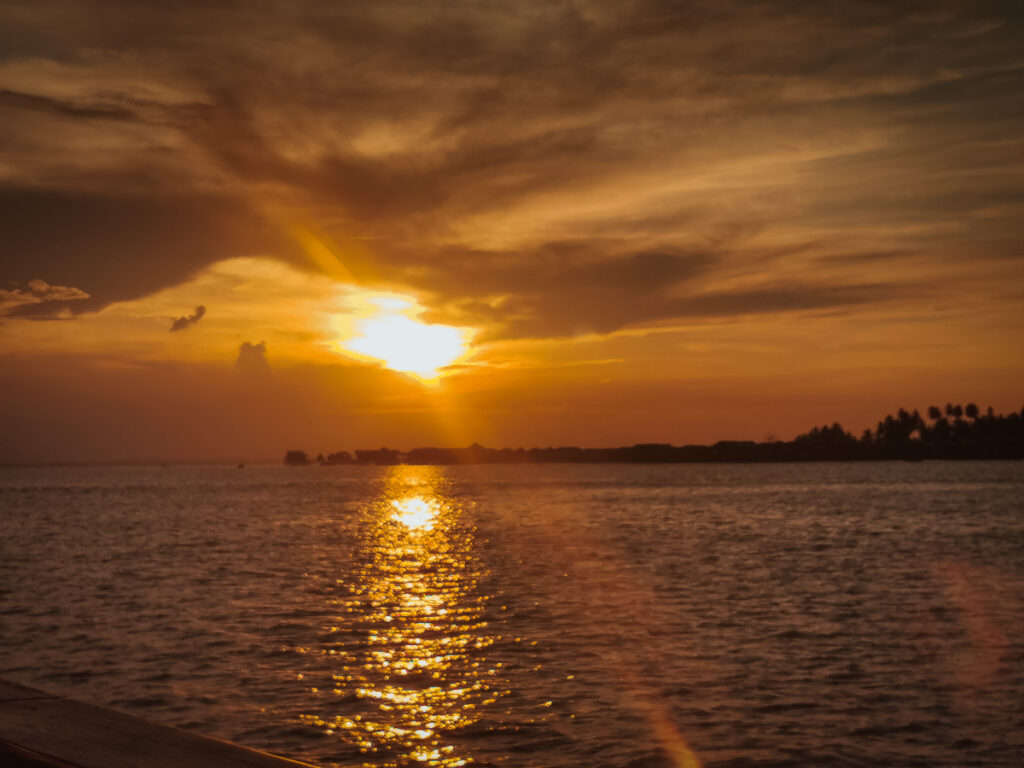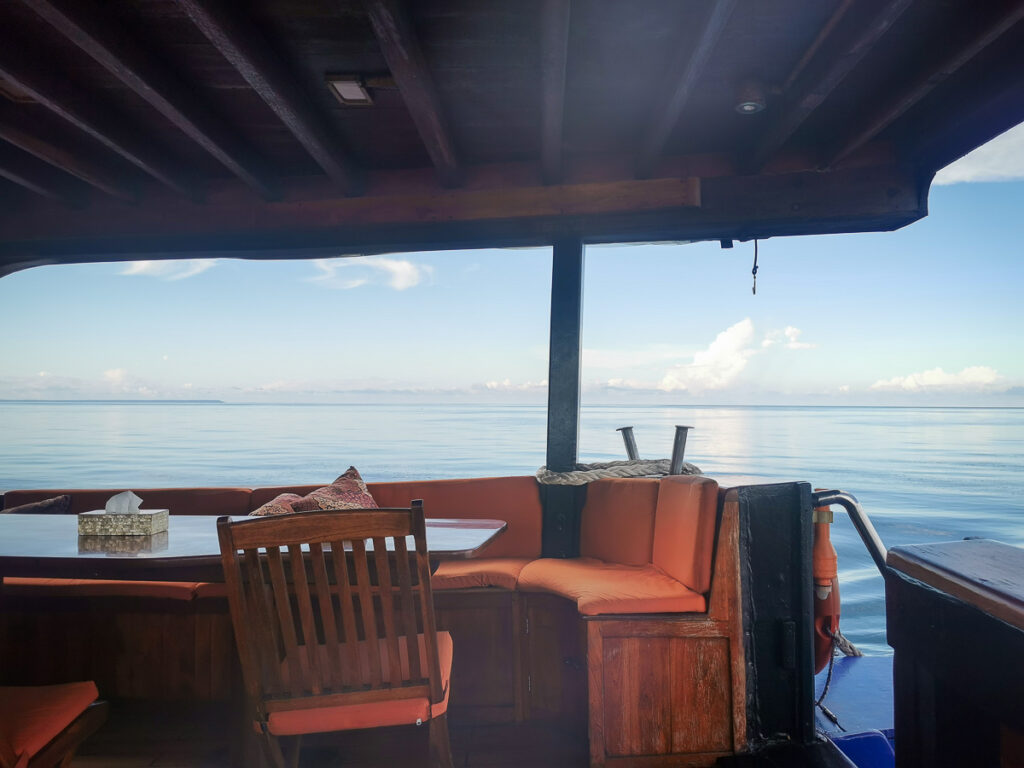This was my sixth cruise on the Ilike liveaboard and my second diving trip to Derawan. I was excited to revisit Derawan and Kalimantan for diving and very happy to be back on Ilike, a boat that almost feels like home to me. Keep reading for a detailed review of the boat, the diving experiences in Kalimantan, and practical tips.
How to get to Tarakan
Ilike Kalimantan cruises started from Tarakan, a small town in Kalimantan in the North of Indonesia.
What airline should you choose when flying in Indonesia?
There are direct flights to Jakarta, Makassar, and Surabaya. Since my flight was arriving in the afternoon, I had to spend the night in Tarakan before the trip.
Tip: Garuda currently allows 23 kg of diving equipment as free extra luggage, making it the best airline for divers in Indonesia. If the schedule doesn’t work, Air Asia or Citilink is my second favorite. Air Asia has a fare for diving luggage that comes out slightly cheaper than regular luggages so make sure to add your luggages as a diving bag.
Although Lionair flights might seem cheaper, they will be costly if you have diving gear and a lot of luggage. If you are considering booking Lionair because it looks more affordable, I recommend reading my review on why I will not fly Lion Air here.
Wing/Lionair flights are often delayed or canceled, so avoid booking an international flight with a short connection. They canceled one of my flights on this trip, which created a huge logistical nightmare and caused me to lose a day of travel.
During our trip, two passengers had their flights canceled and consequently missed the embarkation day in Tarakan. They arrived the following day. The Ilike team assisted them in renting a private speedboat to get to Derawan. However, the boat cost 500 euros, and they missed the first diving day. To avoid a similar situation, arriving in Tarakan one day earlier is advisable.
Liveaboards typically conduct two dives on the morning of the last day. Therefore, any flights after 1 pm on the day of departure should be suitable, allowing for a 24-hour safety interval between diving and flights.
Where to stay in Tarakan?
The recommended hotel is the Swiss-Belhotel. However, it was fully booked during my stay, so I stayed at the Tarakan Plaza. The hotel is okay, and the staff are friendly, but the room was very dirty and moldy. Because of that, I probably wouldn’t stay there again.
What to do in Tarakan: The mangrove and proboscis monkeys
If you spend a night in Tarakan, visit the Mangrove area (Kawasan Conservasi mangrove) on Google Maps. It’s within walking distance from the Swissbell Hotel. There are wooden paths built along the mangroves. Initially, it may seem like there is little life, but if you stop and listen, you’ll realize that the mangrove is teeming with life. It’s pretty incredible.
Tip: Every day at 8 am, they feed the proboscis monkeys, giving you the best chance to see them as they all come near the park entrance. There are about 30 monkeys in the park, and it’s incredible to see them up close. Don’t miss it!
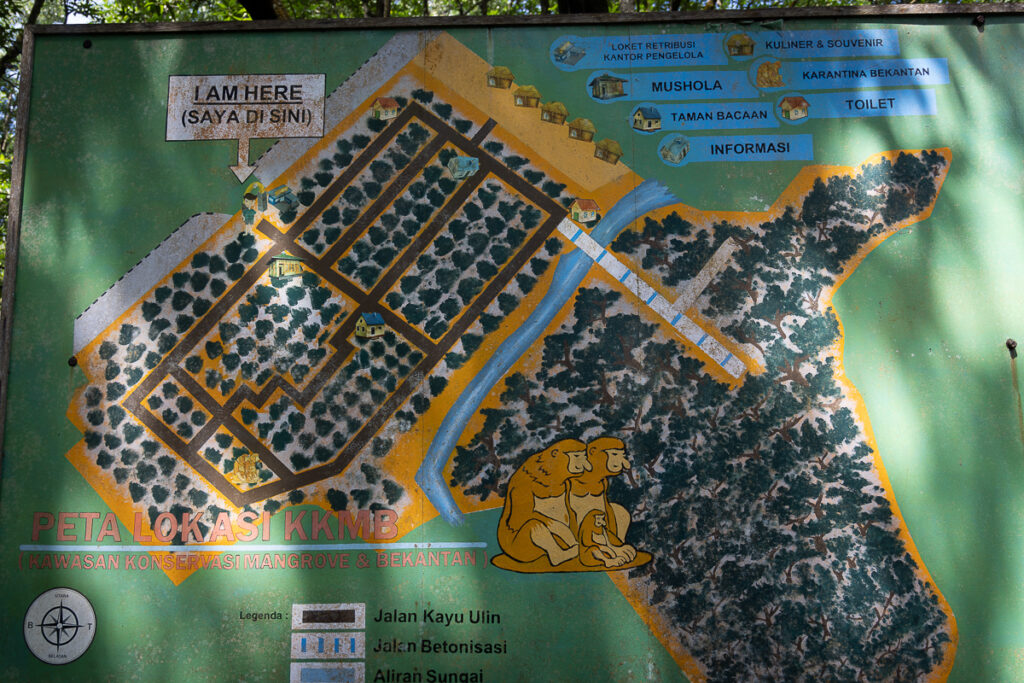
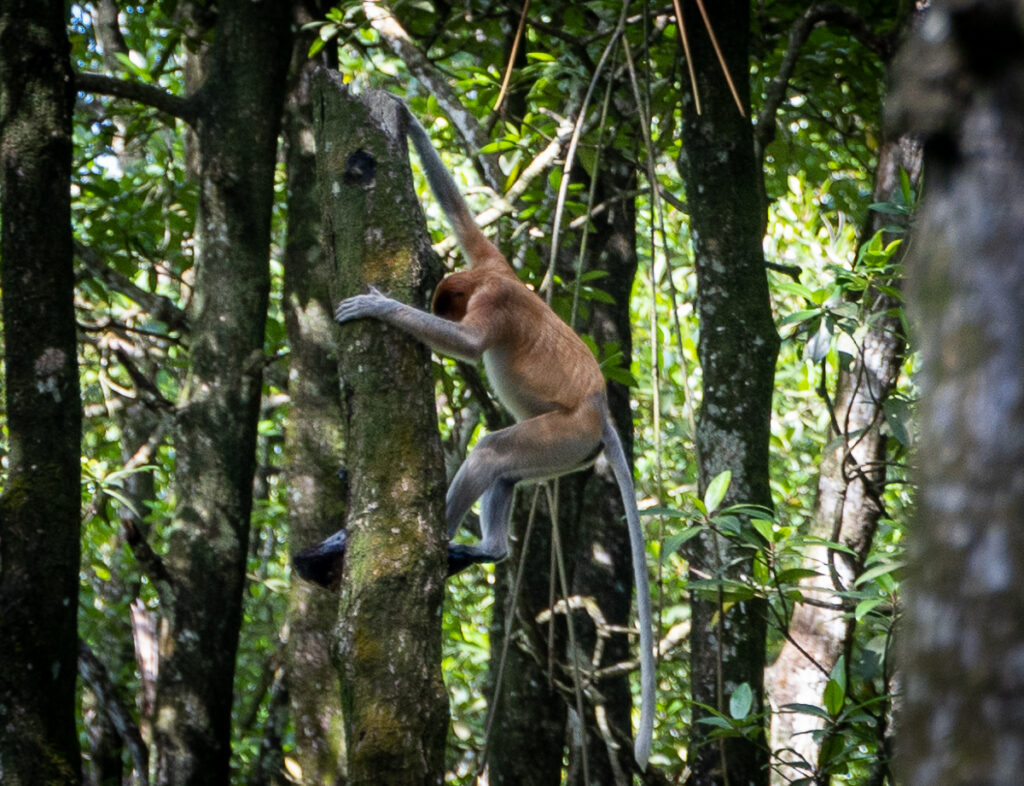
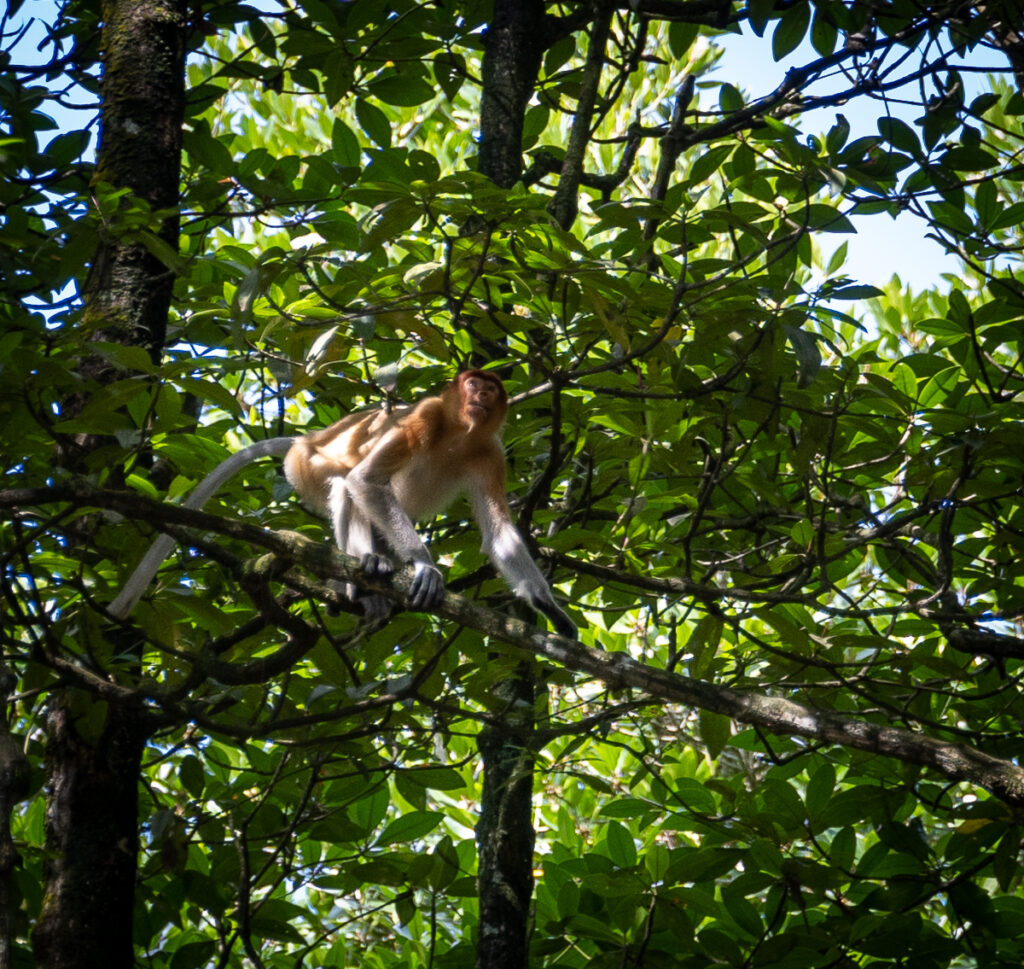
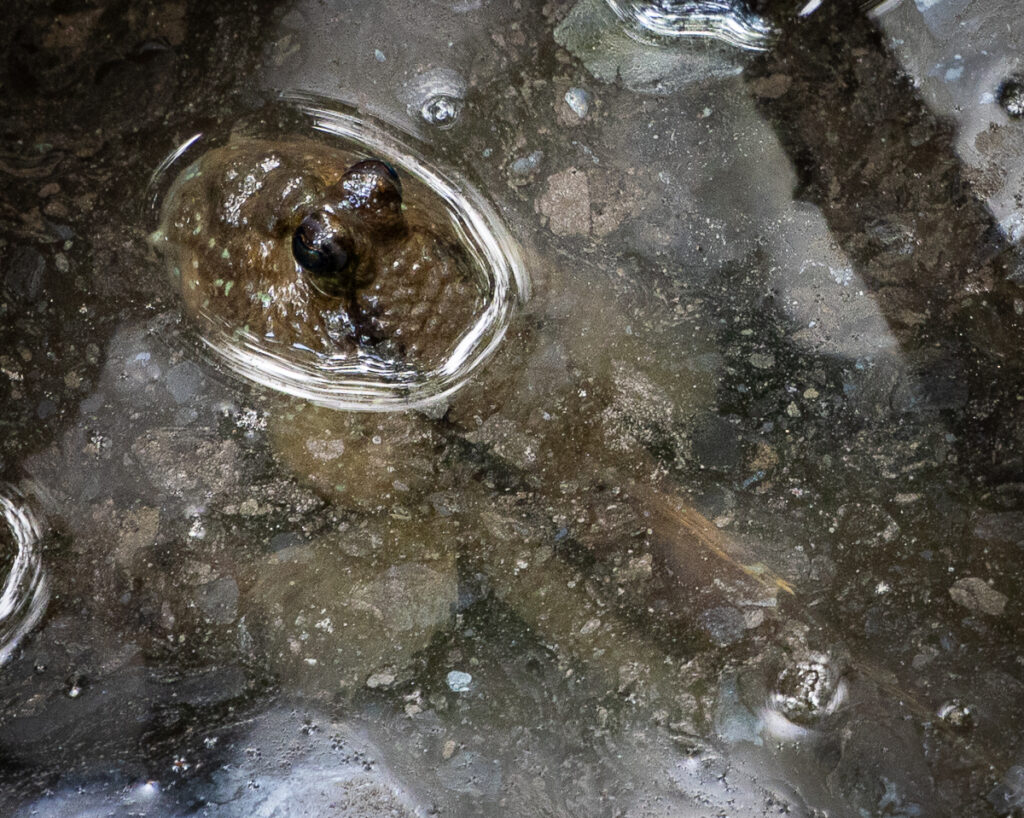
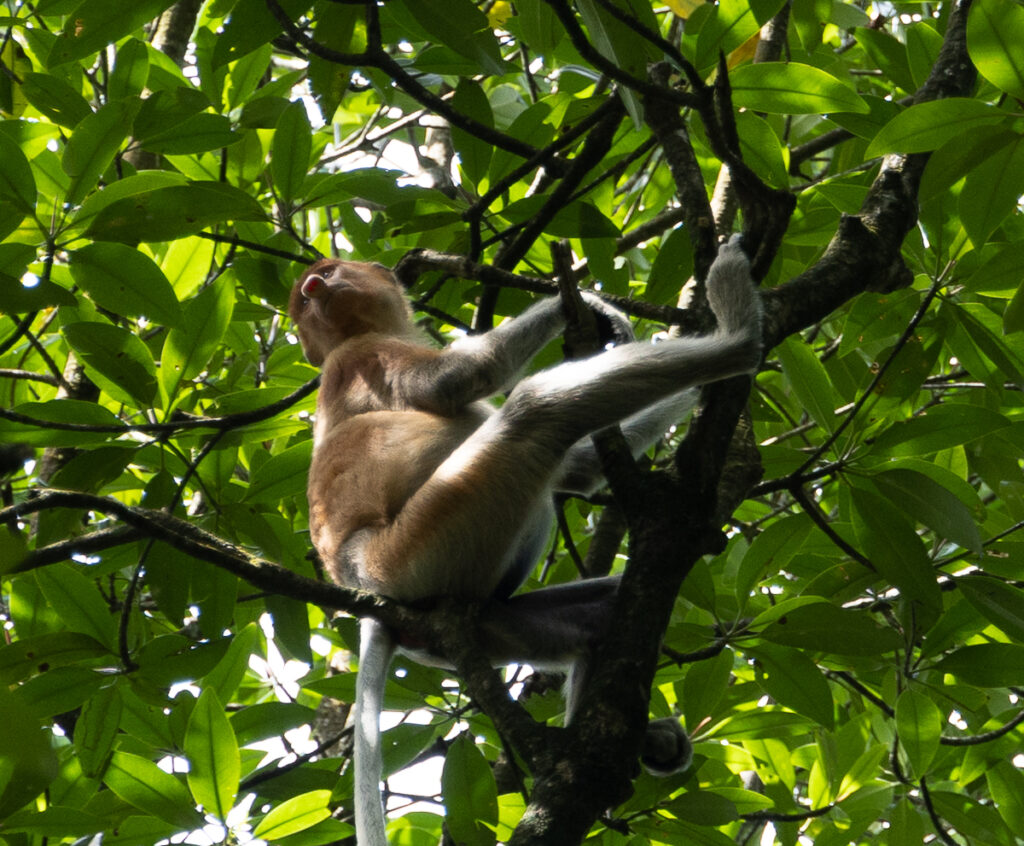
Checking in with Ilike liveaboard
From the moment Nus, one of the Ilike divemasters, picked me up at my hotel, I was treated to fantastic service. After a 10-minute drive, we arrived at the port, where a tender boat awaited us. My bags had been taken care of, and the next time I saw them was in my cabin.
Upon arriving on board, the whole crew greeted me with a juice and a cold towel. It was my sixth time on the Ilike liveaboard, and it felt like coming home.Jan, the cruise director gave me a tour of the Ilike, explaining all the essential features, and made me sign all the usual papers before showing me to my cabin.
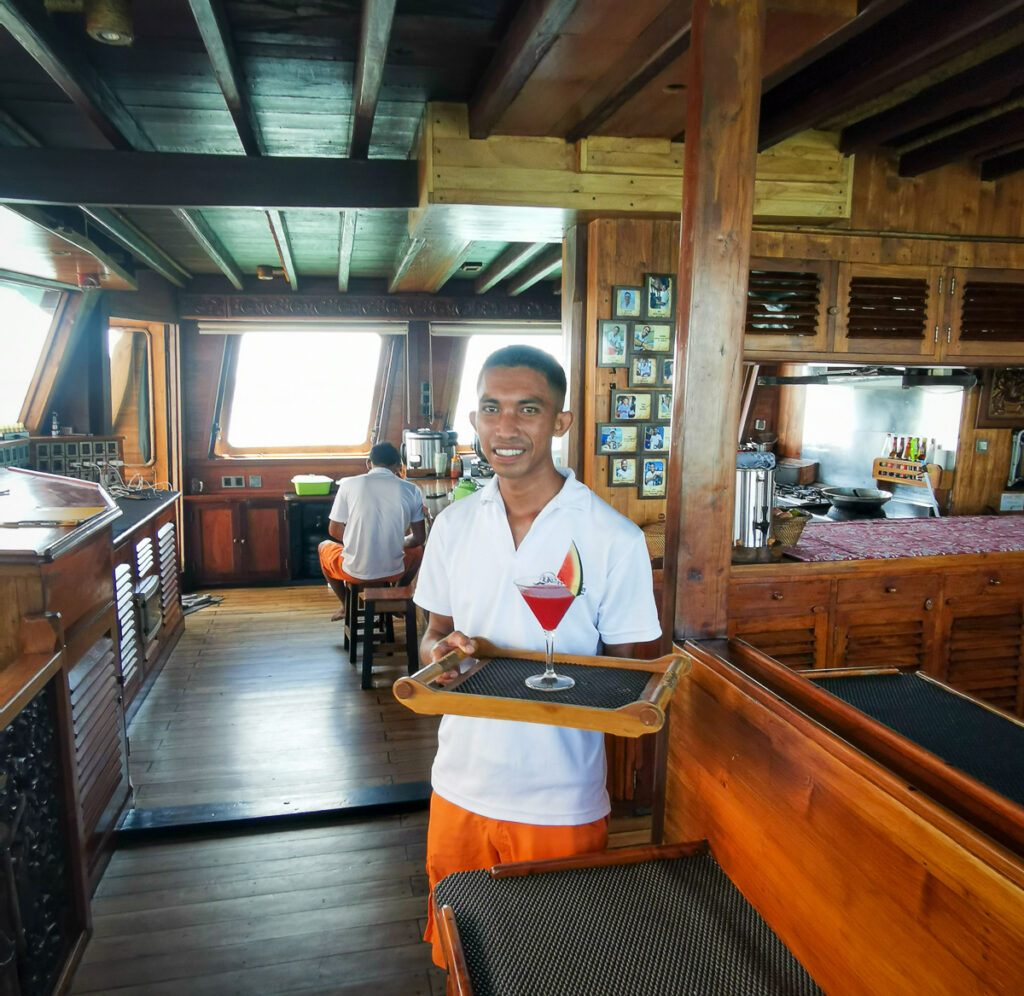
I also met the other passengers who would be my travel companions for the next ten days. Everyone was from Europe and very eager to explore Derawan.
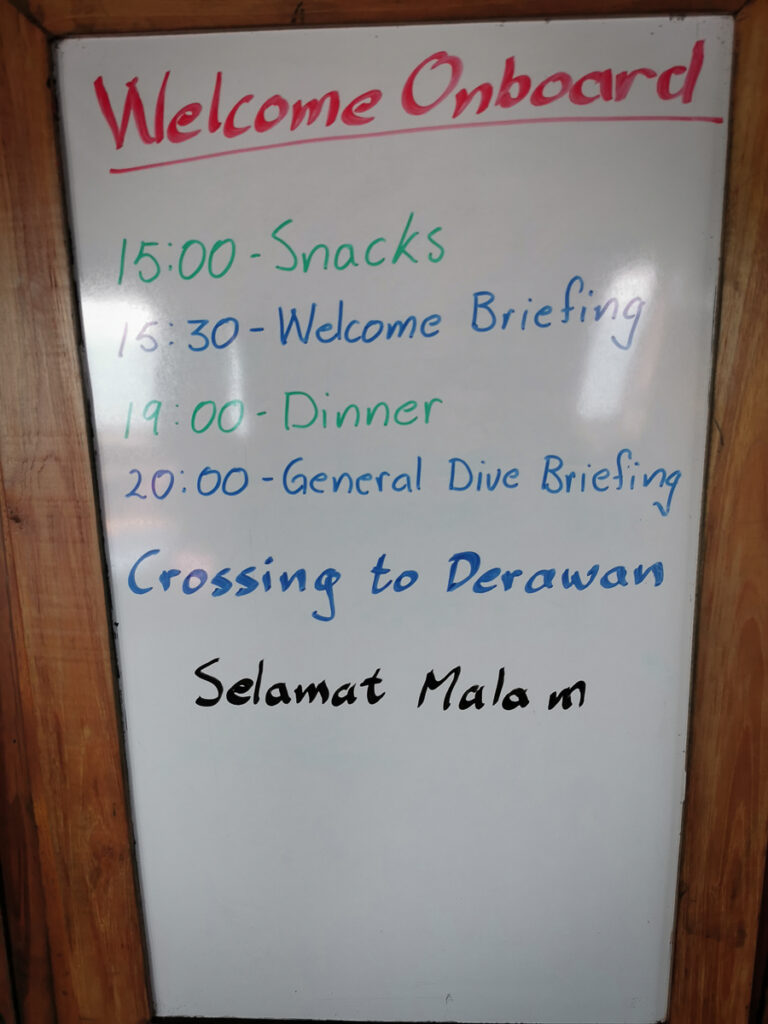
The first day was lazy, as no diving was planned for that day. We watched a nice sunset and had dinner on board in Tarakan, and the captain moved the boat after dinner for the overnight crossing towards Derawan Island.
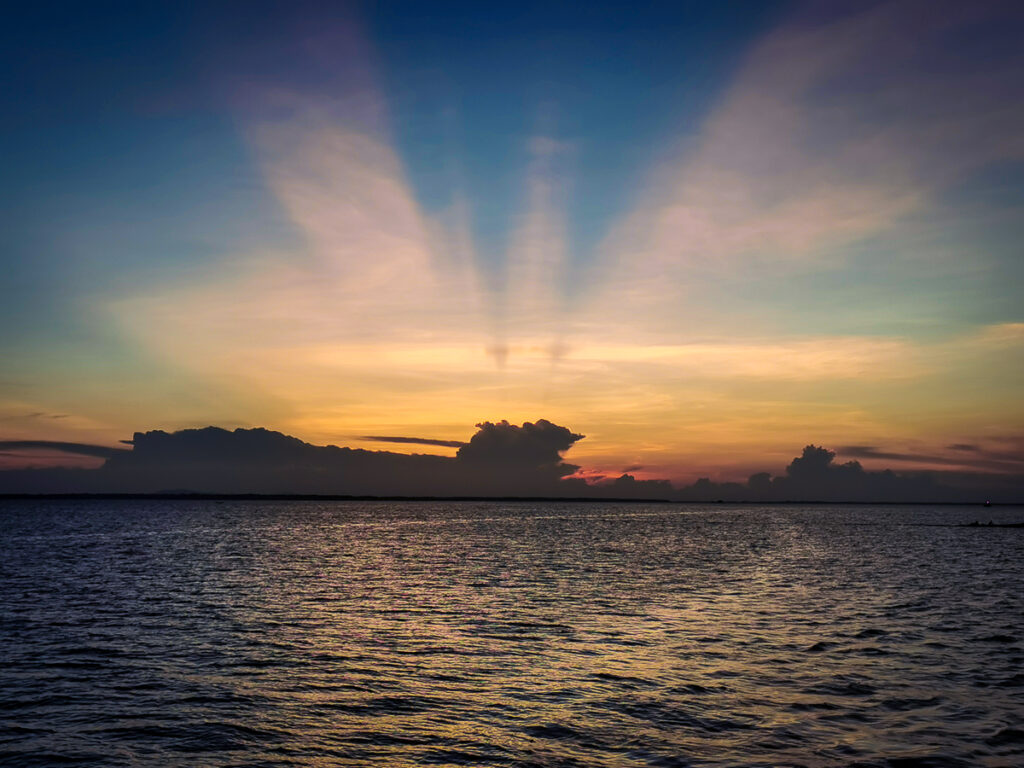
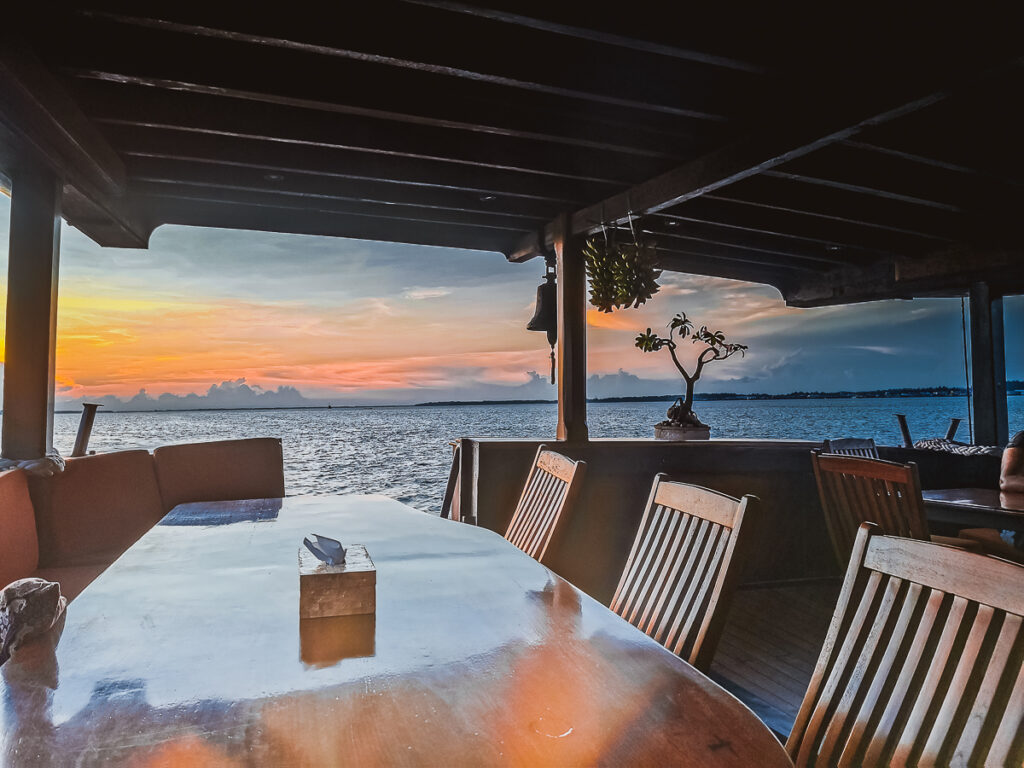
Review of the Ilike liveaboard ship
The Ilike is 30 meters long and has only eight cabins, so it never feels cramped. They have kept improving the boat since I last was on it four years ago. They have added a master bedroom on the top deck ( see below), revamped the diving deck, and added a seating area at the front of the boat.
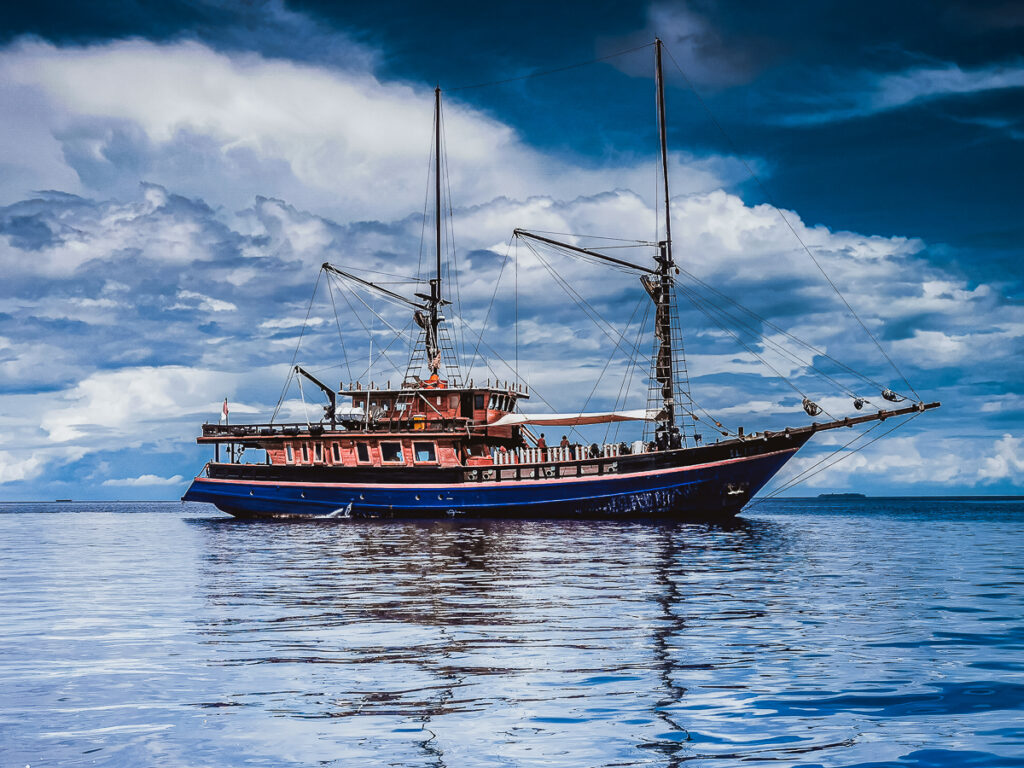
The primary material used throughout the boat and the cabins is wood. This and the pretty wood carvings make the ship feel cozy and elegant. Ilike is dedicated to conservation, and all the timber used is reclaimed wood that didn’t contribute to deforestation.
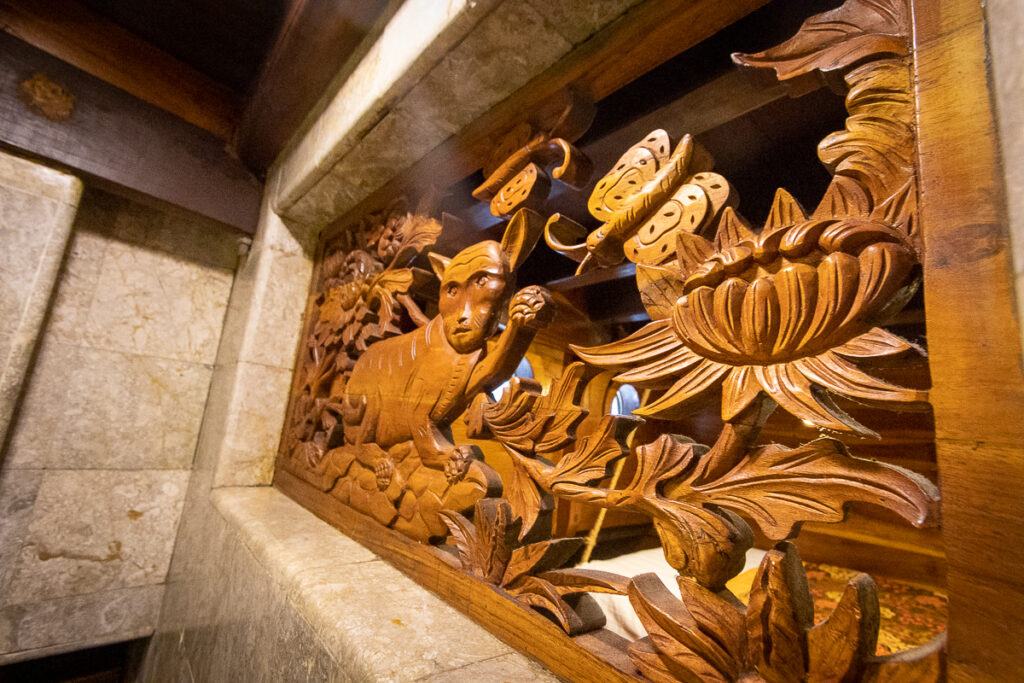
The Ilike liveaboard is equipped with sails, which are more for decoration than actual sailing. Like most liveaboards in Indonesia, it needs sails to fit into the KLM administrative category. So, expect to navigate mostly using the engines.
As one of the guests onboard mentioned: “What makes the Ilike liveaboard a superior boat is that the common space is very open on the water, so you feel closer to the sea than on most Indonesian liveaboard I have been on”
Review of the main deck
The main deck is the heart of the boat, featuring the diving deck, dining room, and living room. The front of the main deck includes the diving deck and a large table for outdoor relaxation. The section below about the dive organization provides more information about the diving deck.
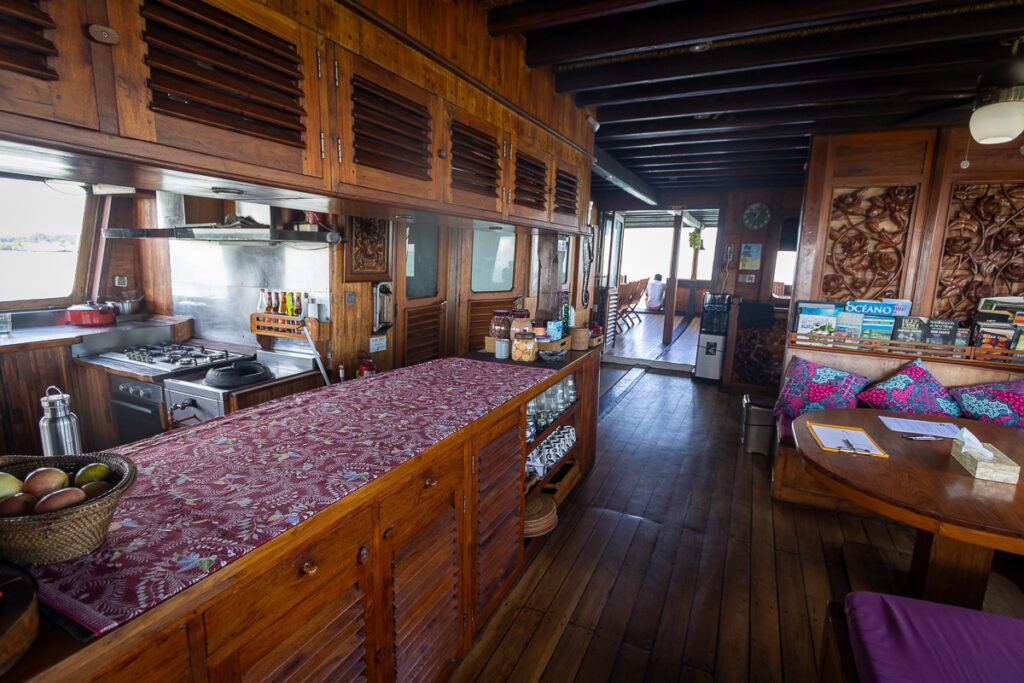
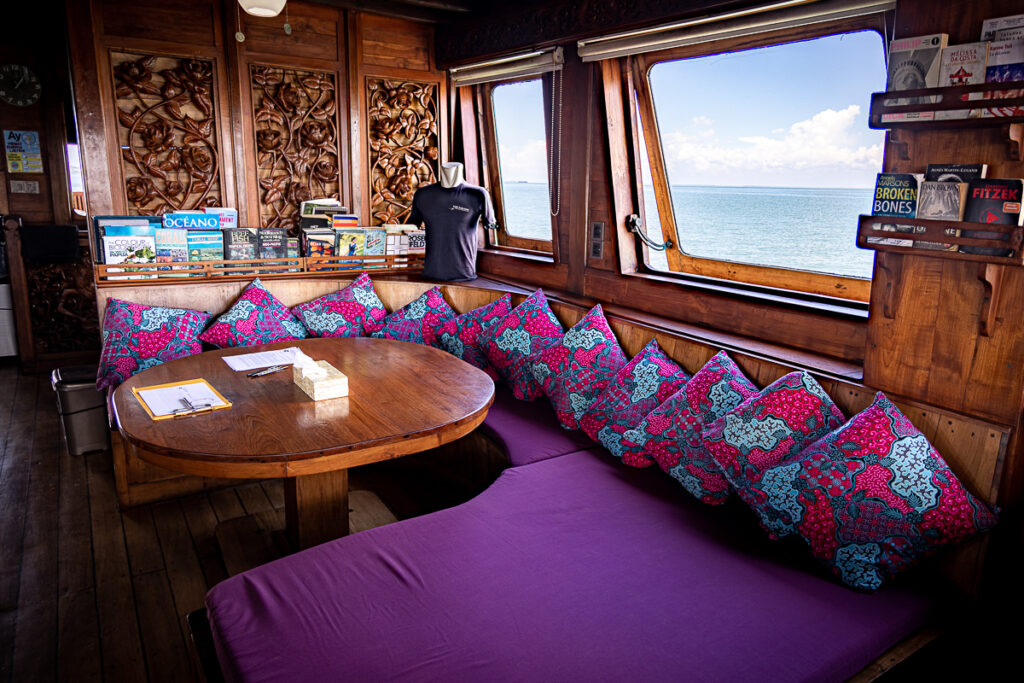
The indoor living area has another large table, a library, and a kitchen.
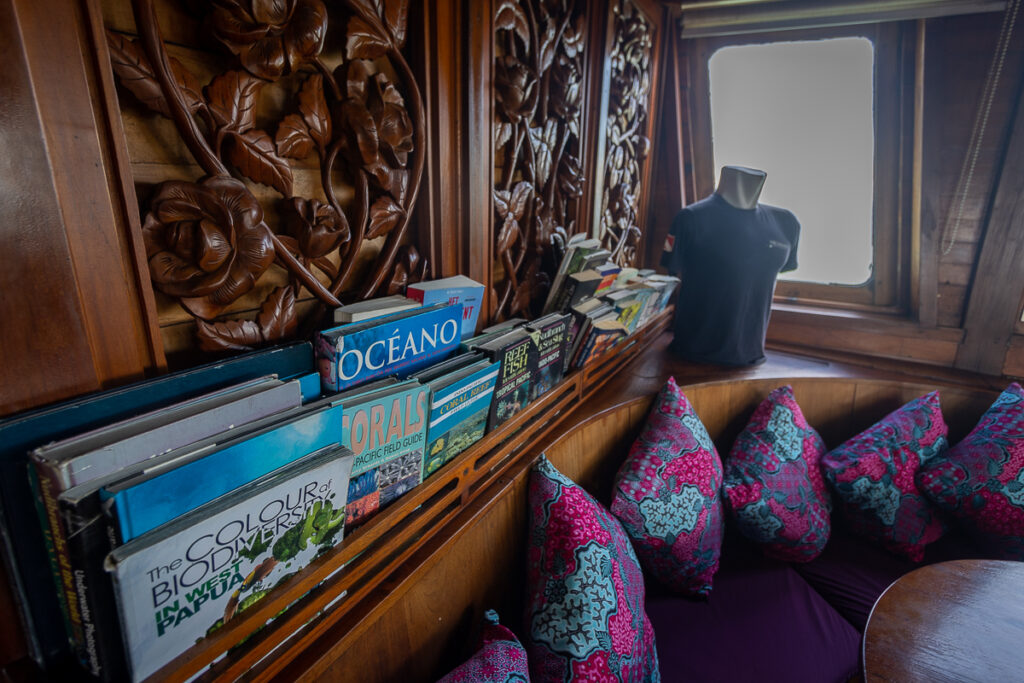
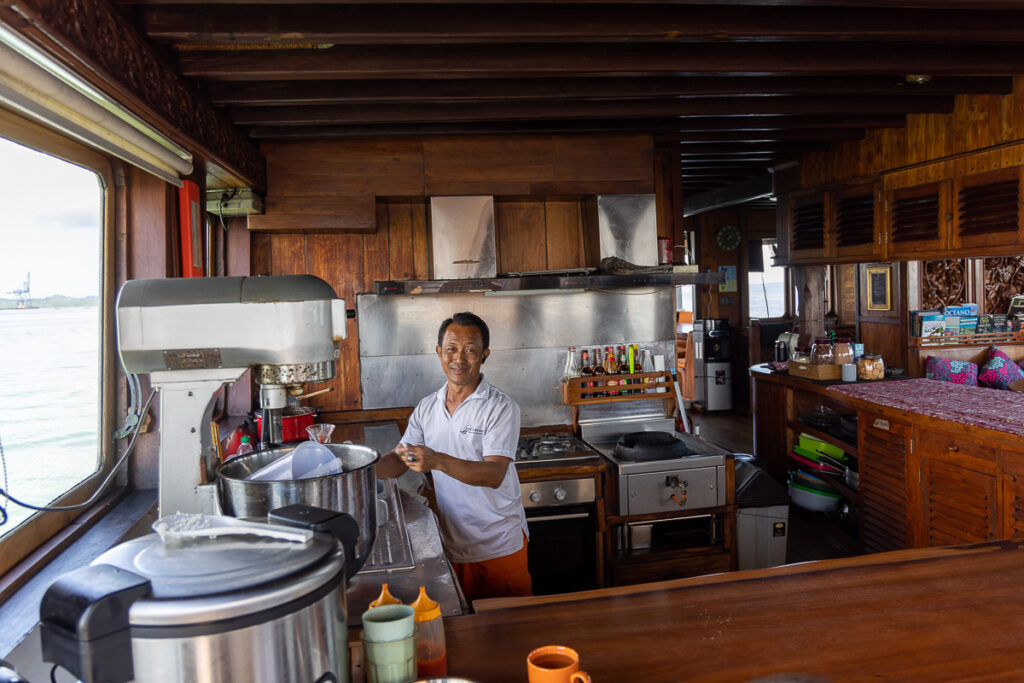
Tea, coffee, and snacks are available throughout the day.
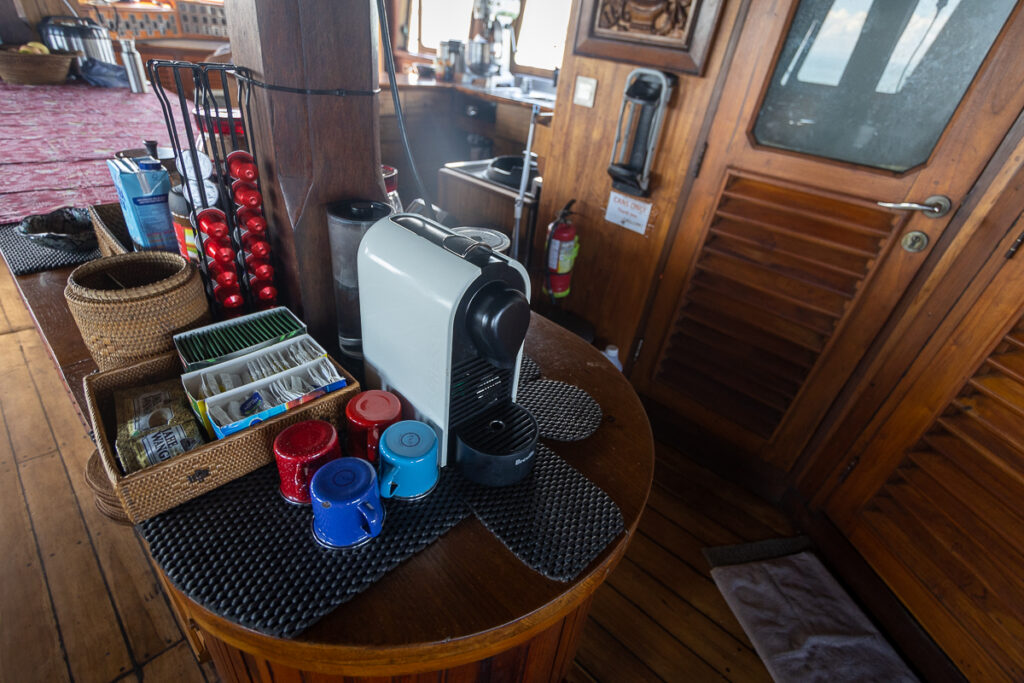
Additionally, there is a fridge offering drinks for purchase. Coke, tonic, and Sprite are priced at 2.5 euros each, while beers are 3.5 euros. Wine and cocktails are also available for sale.
I really enjoyed the outdoor dining area. It is spacious and offers an uninterrupted view of the ocean.
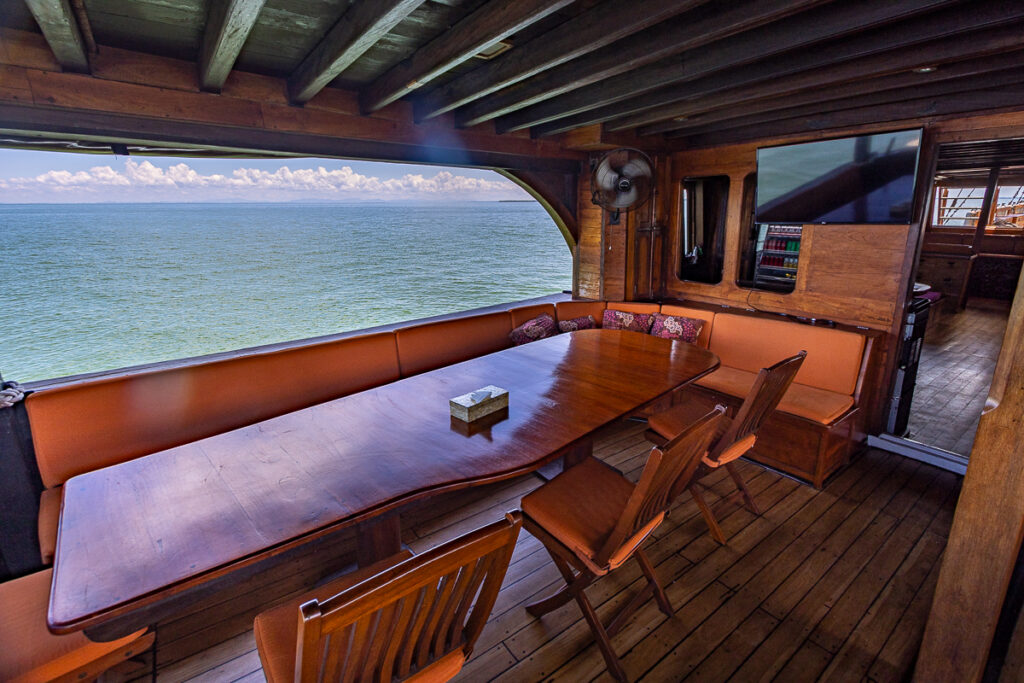
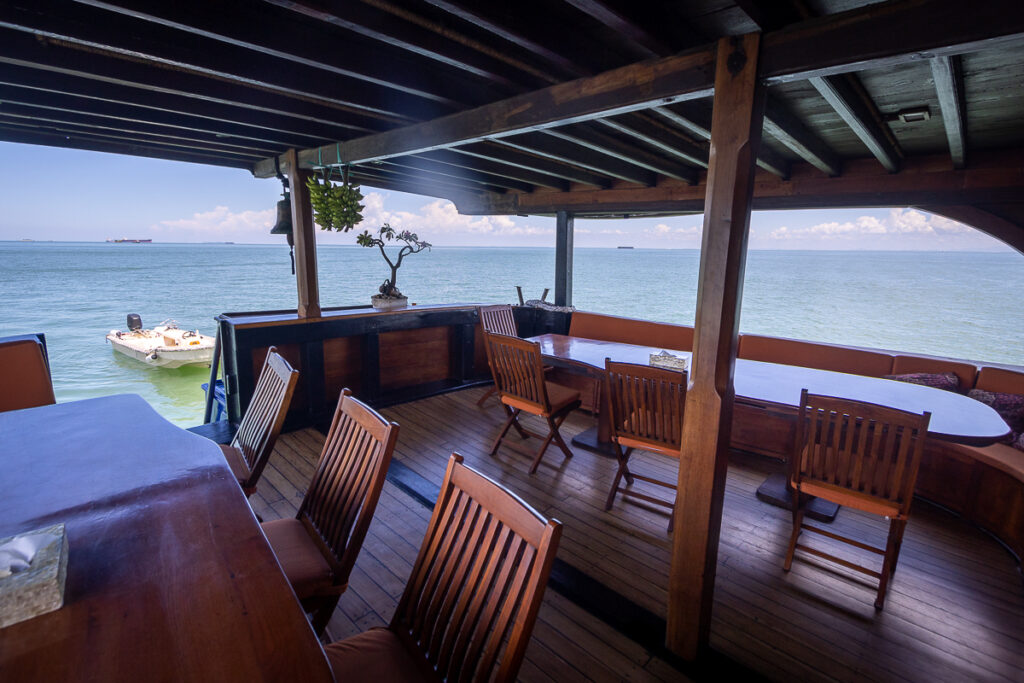
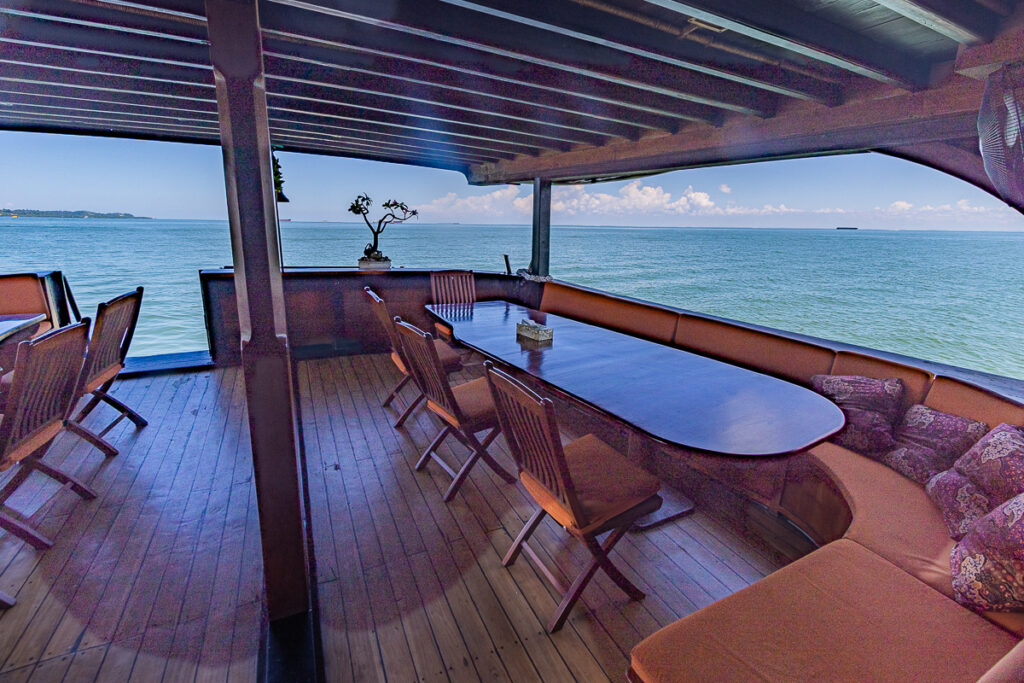
Ilike liveaboard is a dream for underwater photographers, as the camera tables and charging stations are top-notch. The camera service is also exceptional, with the crew bringing my camera on the boat for every dive. After the dive, they would rinse it in freshwater, place it back on the camera table, and dry it for me.
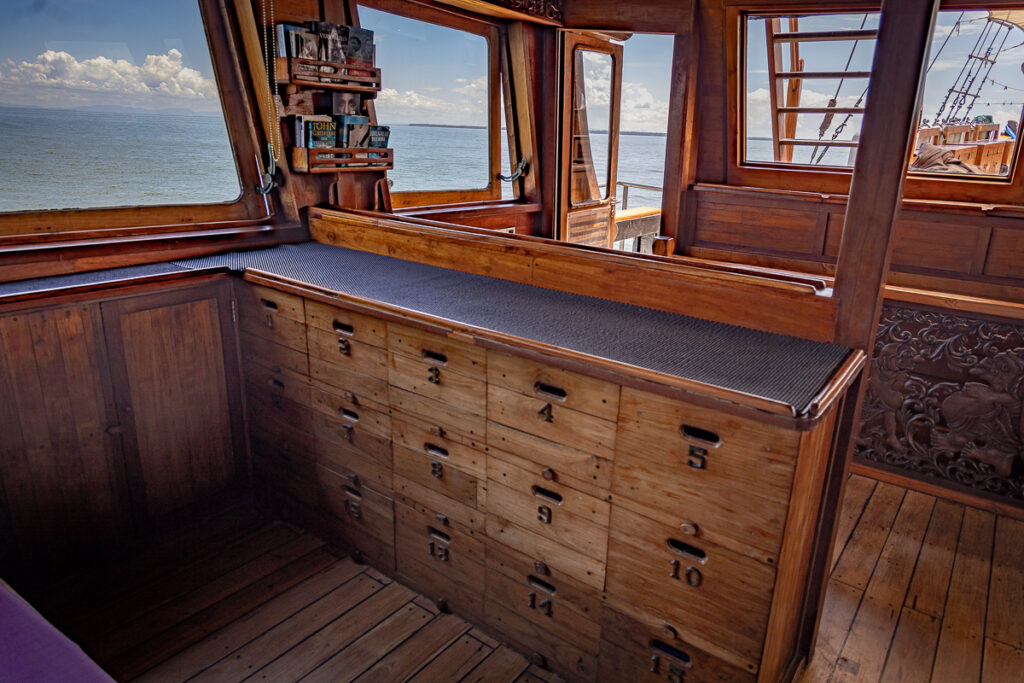
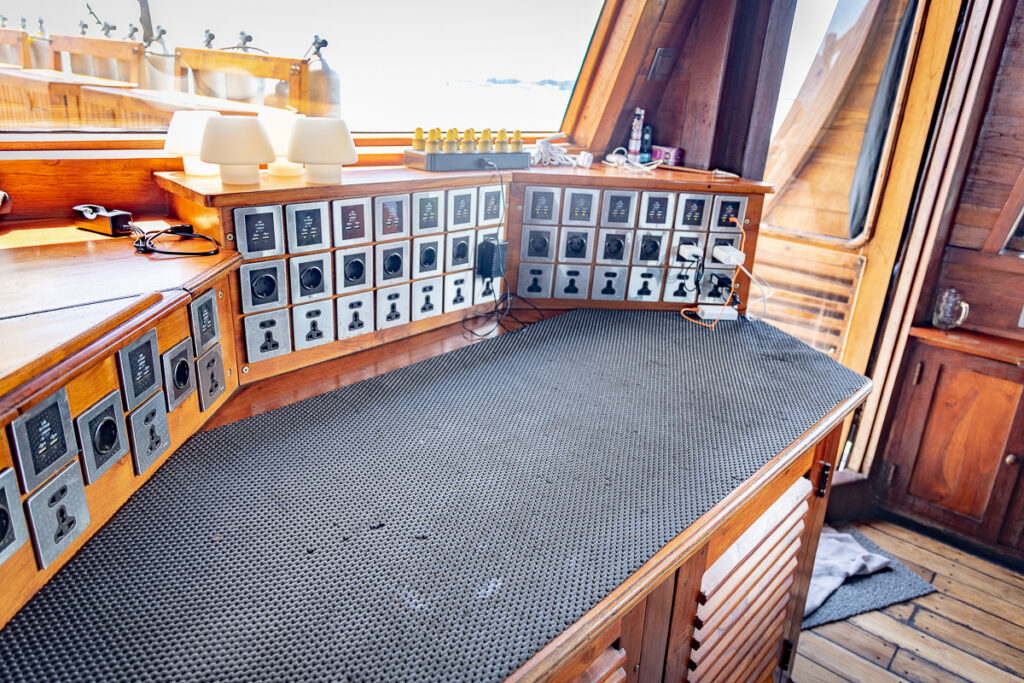
Review of the top deck
The top deck holds the bridge and the master suite. On top of that is a small but great terrace with sunbeds.
Tip: Please be aware that we are very close to the equator, so if you spend the day there, make sure you are well protected.
That top deck became my favorite area to watch the sunset, and you could find me there most evenings during our cruise in Kalimantan.
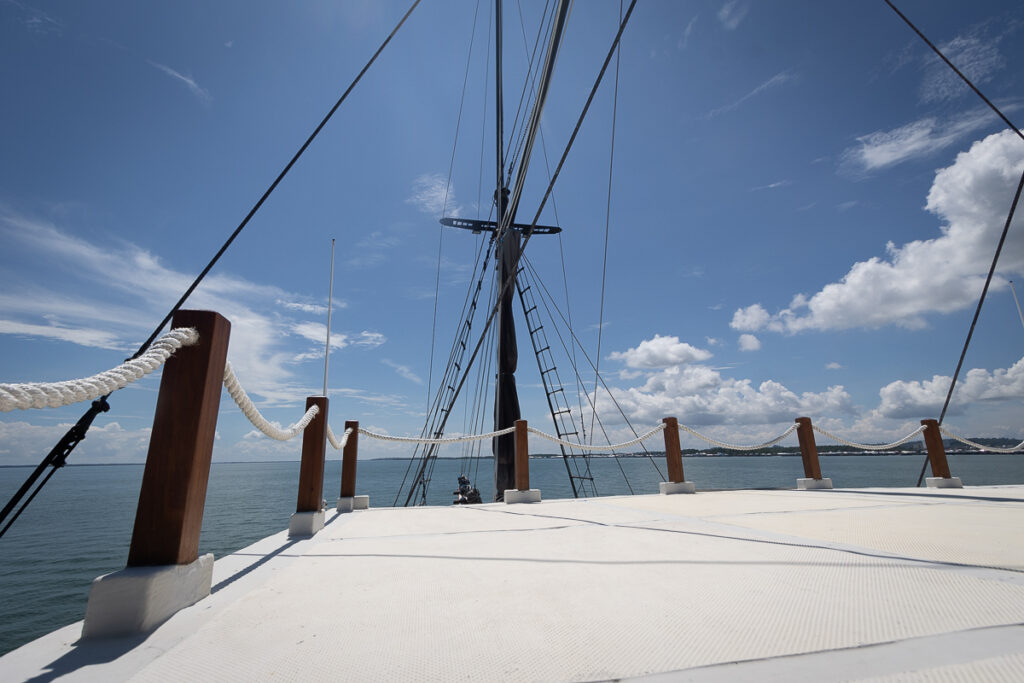
Review of the Cabins on Ilike liveaboard
The cabins on the Ilike Liveaboard may not be the largest or most luxurious at sea, but they are pretty comfortable. I have stayed on the Ilike Liveaboard five times and have experienced all the cabin categories. I stayed in the superior cabin, Number 3, during my trip to Kalimantan. All the cabins have comfortable tall mattresses, individually controlled AC, and private marble bathrooms with hot water.
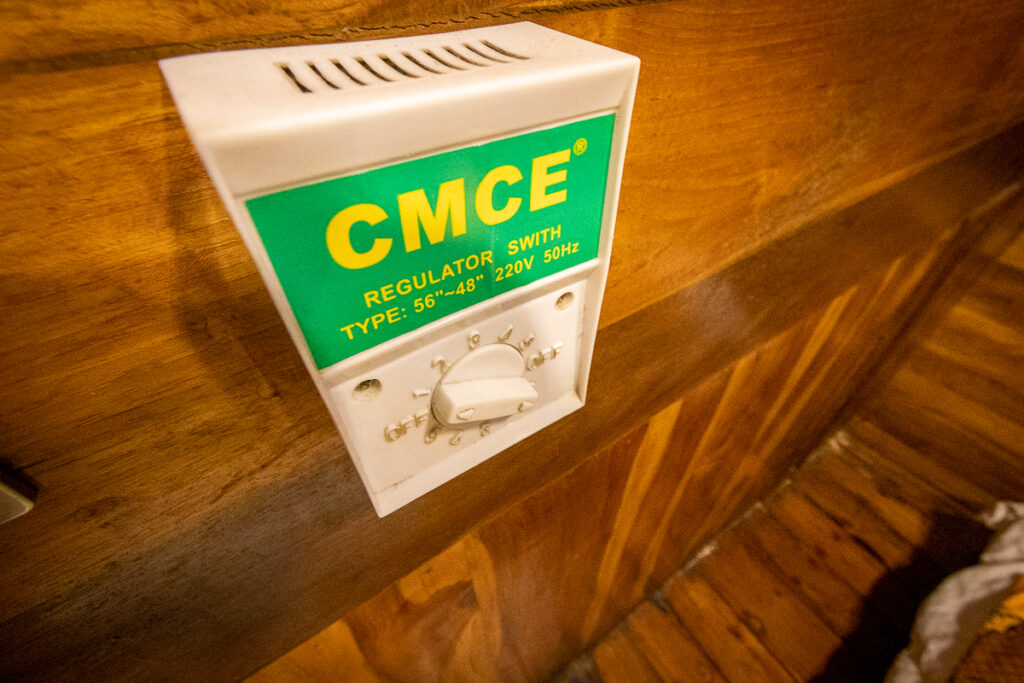
Overview of the superior Cabin on Ilike Liveaboard
My cabin had a double bed at the bottom and a single bunk bed on top. It also had two porthole windows that let in natural light, although they couldn’t be opened.
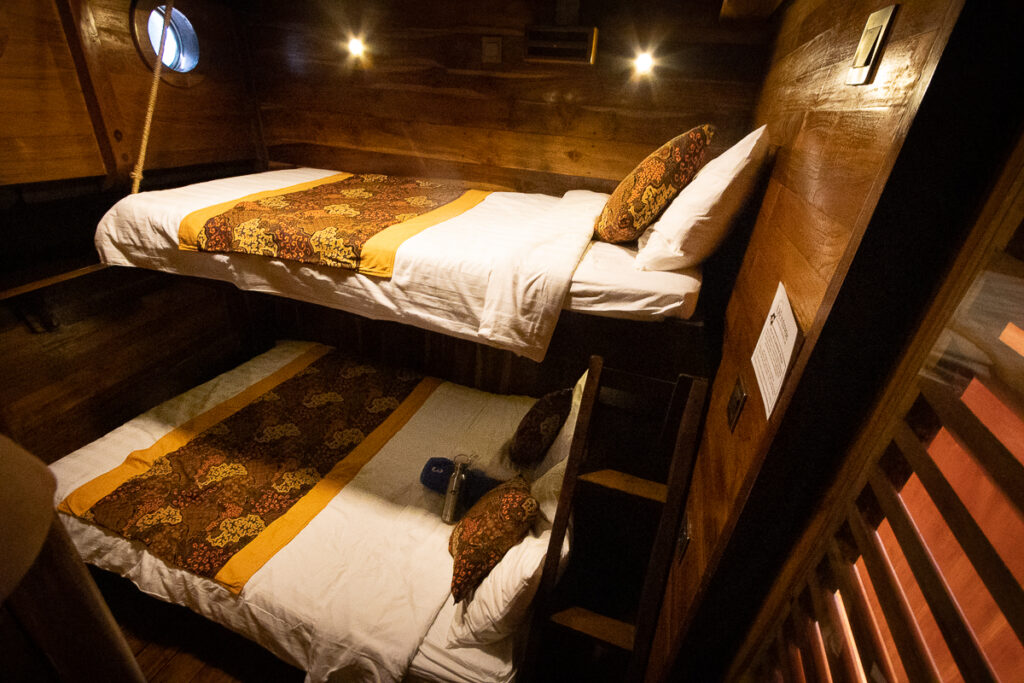
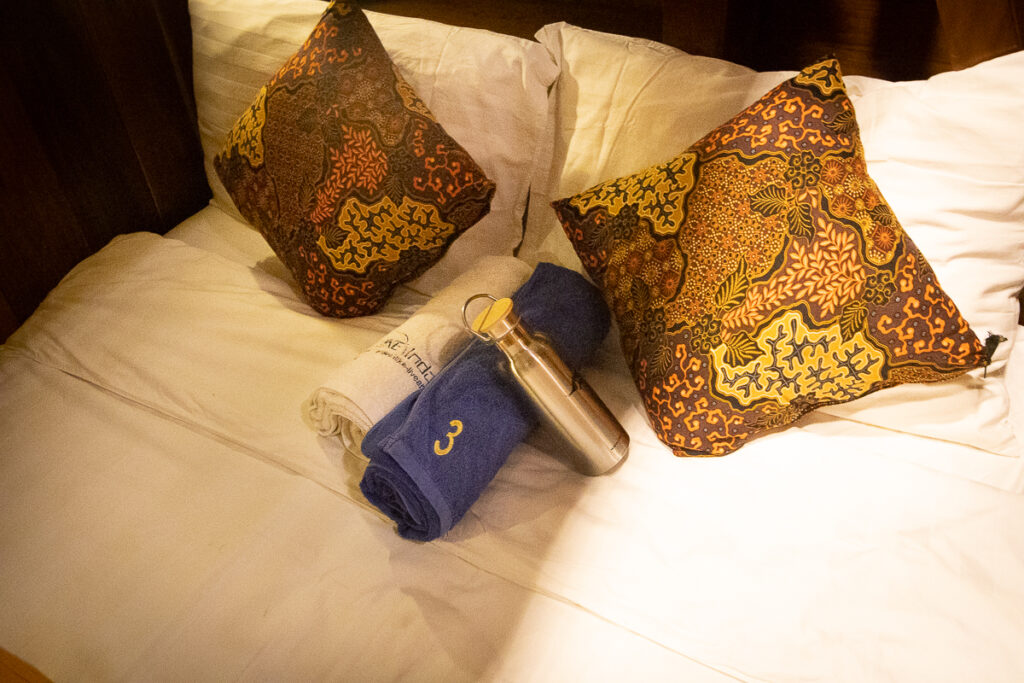
One downside of the cabins is the limited storage space. There’s no room to place suitcases, so it’s advisable to bring a foldable bag that can be stored under the bed. If two people are sharing the cabin, storage space for clothes might be limited. However, plenty of hooks are available, making it convenient to hang bags and keep small items secure during rough seas.
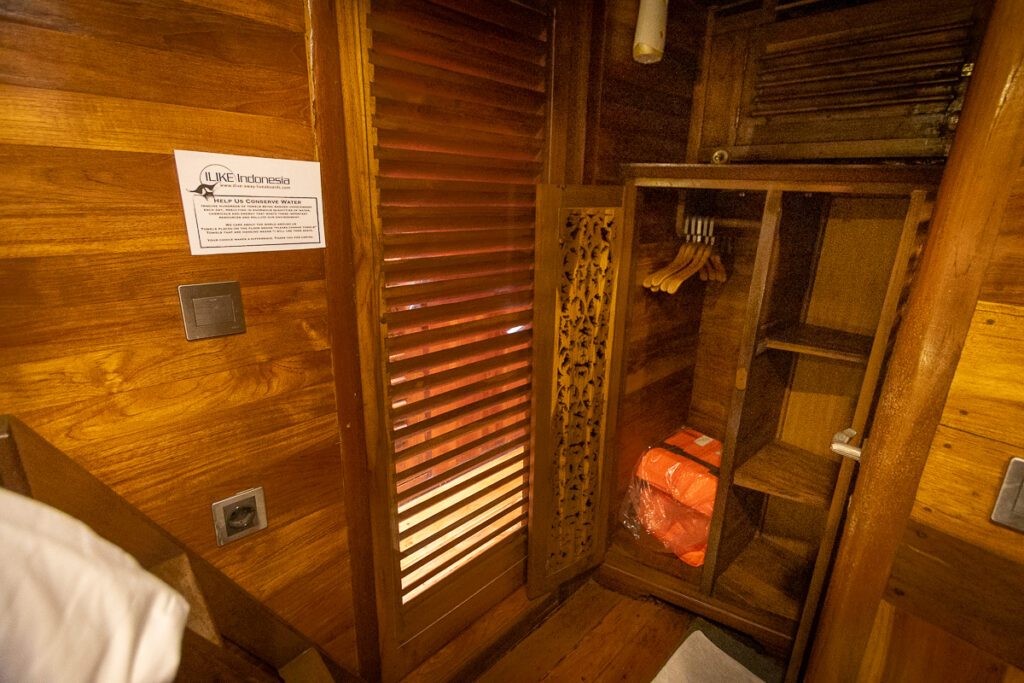
Tip: Onboard laundry service is available for 1 euro per item, so it’s best not to bring too many clothes to avoid storage issues.
Each cabin is air-conditioned with individual thermostats and is equipped with a marble bathroom providing hot and cold water.
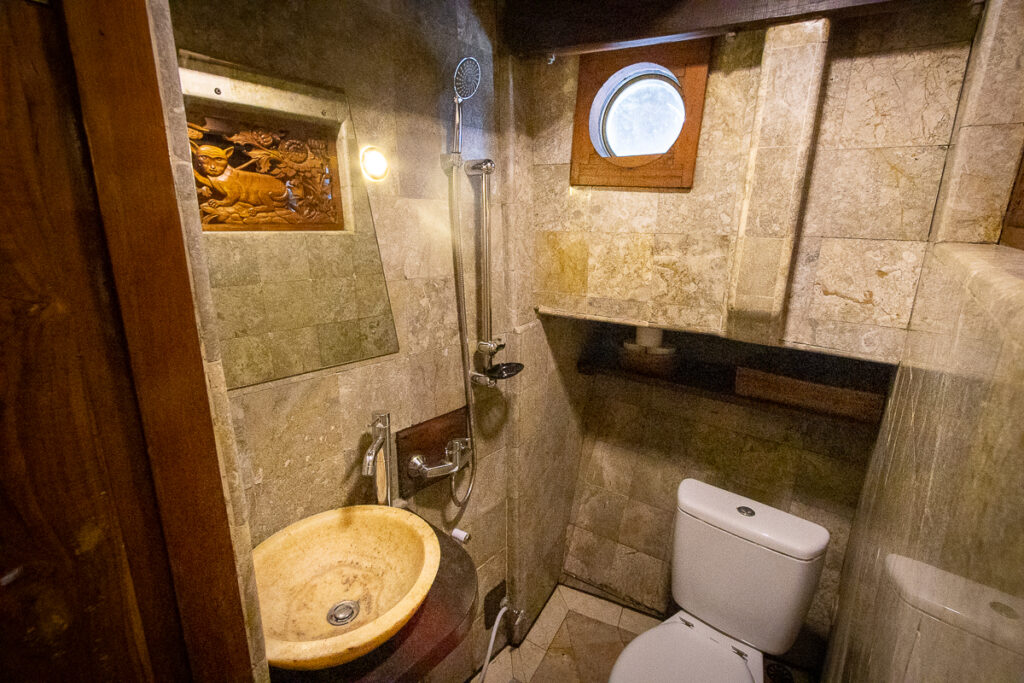
Tip: While liquid soap is provided, it’s recommended to bring your shampoo, conditioner, toothpaste, and any other toiletries you may need.
Overview of the standard cabin on Ilike liveaboard
The standard cabins are the most affordable on board but still quite comfortable. The main difference between the superior and standard cabins is that they are closer to the engines, which makes them a bit noisier during navigation. On the bright side, they are also located towards the boat’s center, making them the most stable in rough weather. The budget cabins are only slightly smaller, but they are closer to the engine and, therefore, louder. Additionally, Cabin 6 is situated beneath the stairs, so you can hear footsteps as people go up and down. However, the cabins are generally well-soundproofed, and I didn’t hear any noise from neighboring cabins.
Overview of the suites on Ilike Liveaboard.
Certainly! Here’s the revised text:
There are two types of suites on the Ilike Liveaboard. The standard suite is below deck and features a larger room with a spacious bathroom, making it well worth the slightly higher cost. Situated at the front of the boat, this suite is designed to be as quiet as possible, except when the anchor is in use, which can create loud noises.
Tip: If you are prone to seasickness, this may not be the most suitable room for you, as being at the front of the boat can make the movement more noticeable compared to the back of the boat.
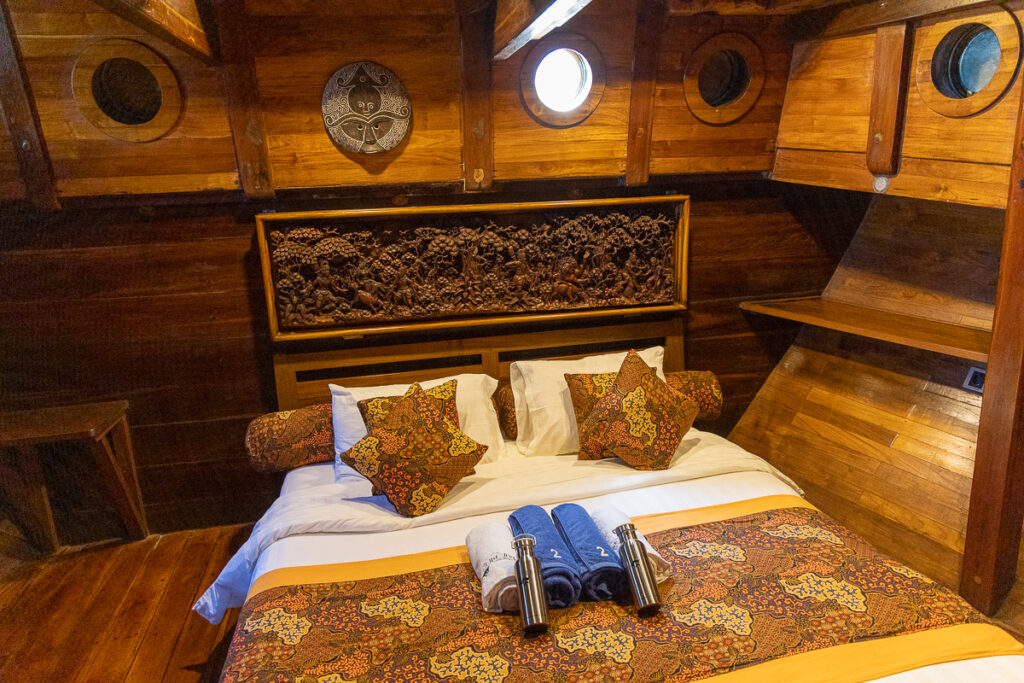
The Seaview suite is a recent addition to the Ilike Liveaboard. It is situated on the top deck, offering a larger bathroom and a panoramic ocean view. Undoubtedly the most luxurious cabin on Ilike, it is worth the extra expense if you enjoy spending time in your cabin. However, booking this suite early is essential, as only one is available and tends to be fully booked.
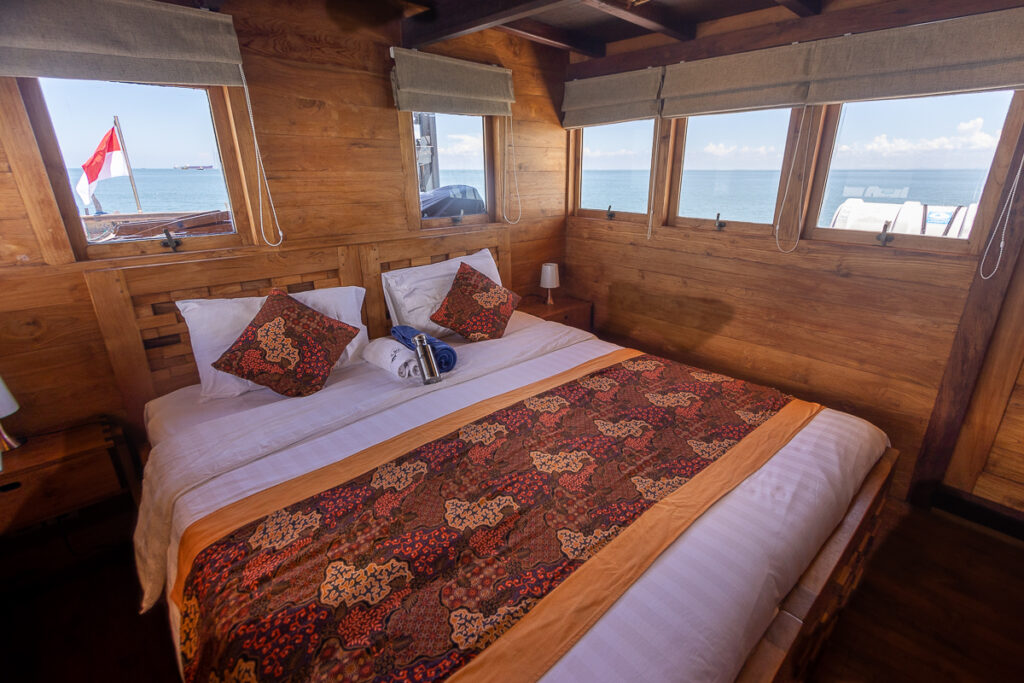
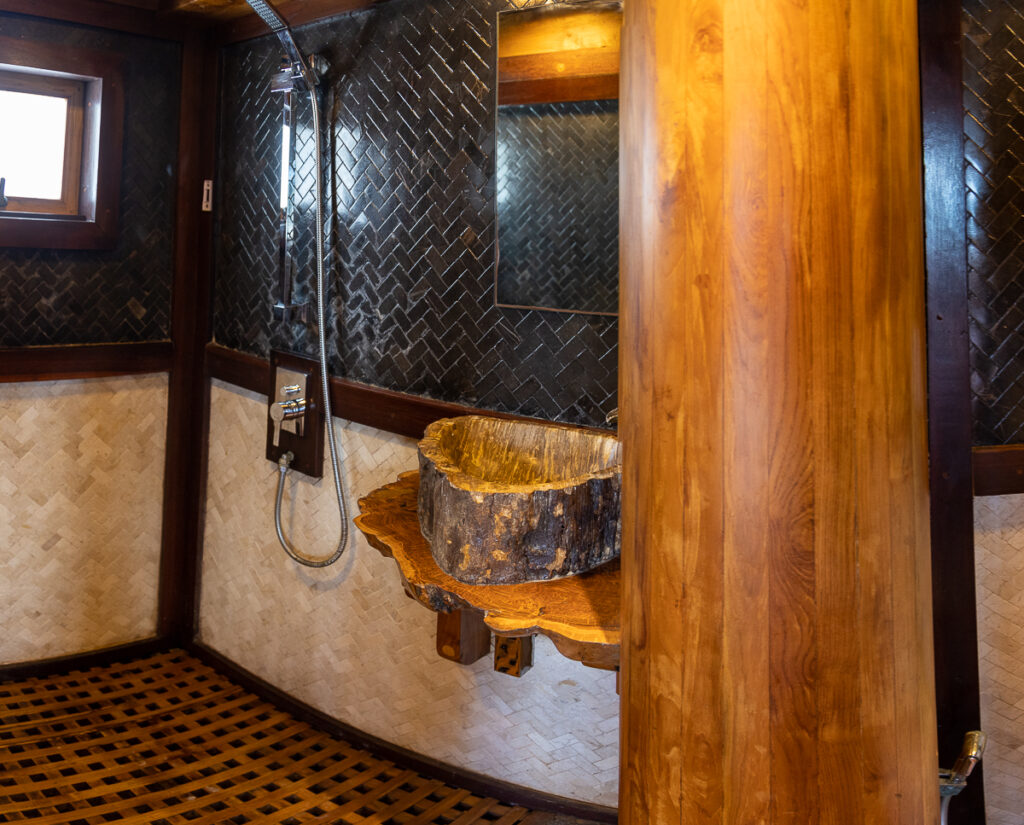
Overview of the service on the Ilike Liveaboard
This boat and trip’s standout feature is the exceptional service level. The service surpasses that of many boats I have been on, some of which cost twice as much. Ilike has been in operation for over ten years, and the crew is mostly the same, indicating a well-established and efficient team.
Having an experienced cruise staff is especially critical when navigating remote areas. I heard a story about a new boat operating in Rajat Ampat that crashed into the reef twice in two months. It’s not my idea of an ideal vacation!
What makes Ilike unique goes beyond crew efficiency; it’s the constant smiles of the crew and their attention to detail. From providing a fresh, warm towel after every dive to warm chocolate after the night dive to helping with putting on your wetsuit, the crew is always eager to assist us. It’s easy to become lazy while onboard. Remember the following text:
With 16 crew for 16 passengers, there is a one-to-one crew-to-passenger ratio, so you can expect to be pampered. The crew also assisted us in carrying all the dive gear and getting ready, making diving totally effortless.
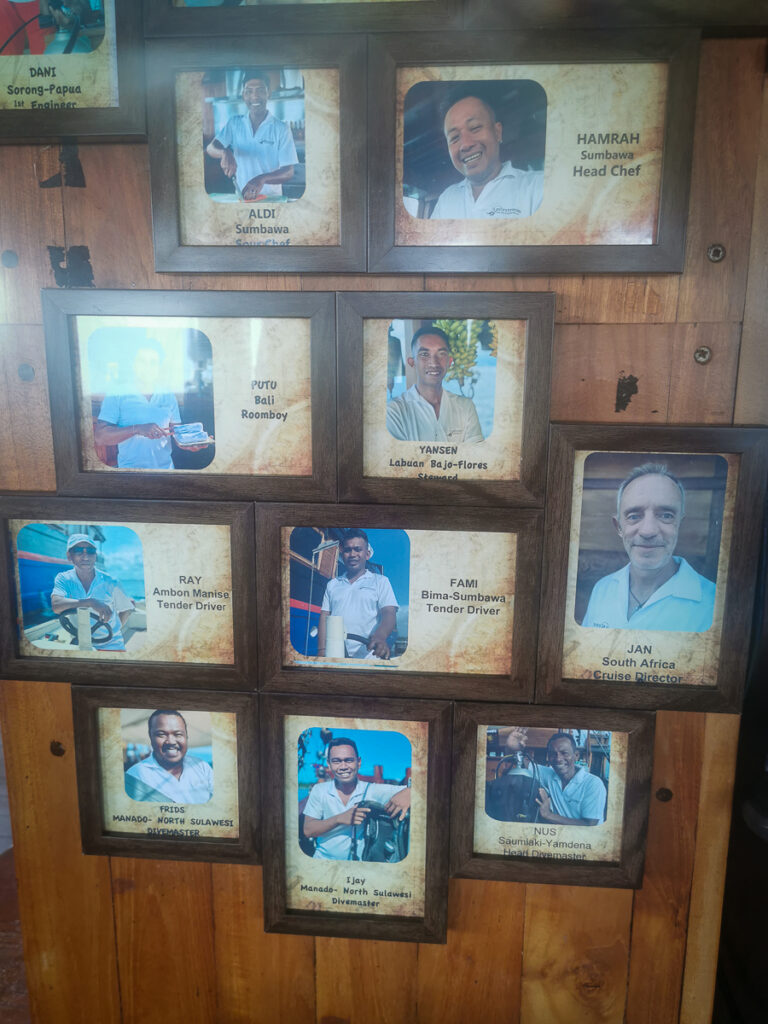
Review of the Food on Ilike liveaboard
The food on Ilike Liveaboard was good and diverse, even after an 8-day cruise. While you shouldn’t expect Michelin-star cuisine, most meals on Ilike Liveaboard are tasty and varied, making mealtimes something to look forward to.
Two chefs on board tirelessly prepare both Indonesian and Western meals. They bake their own cakes and bread!
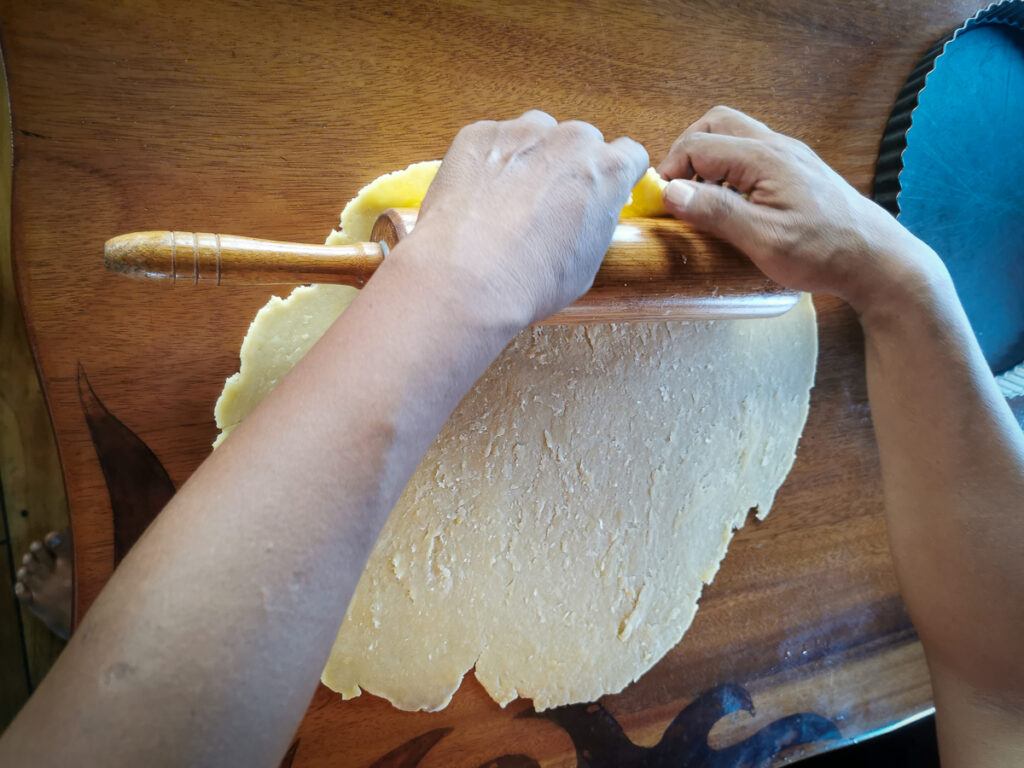
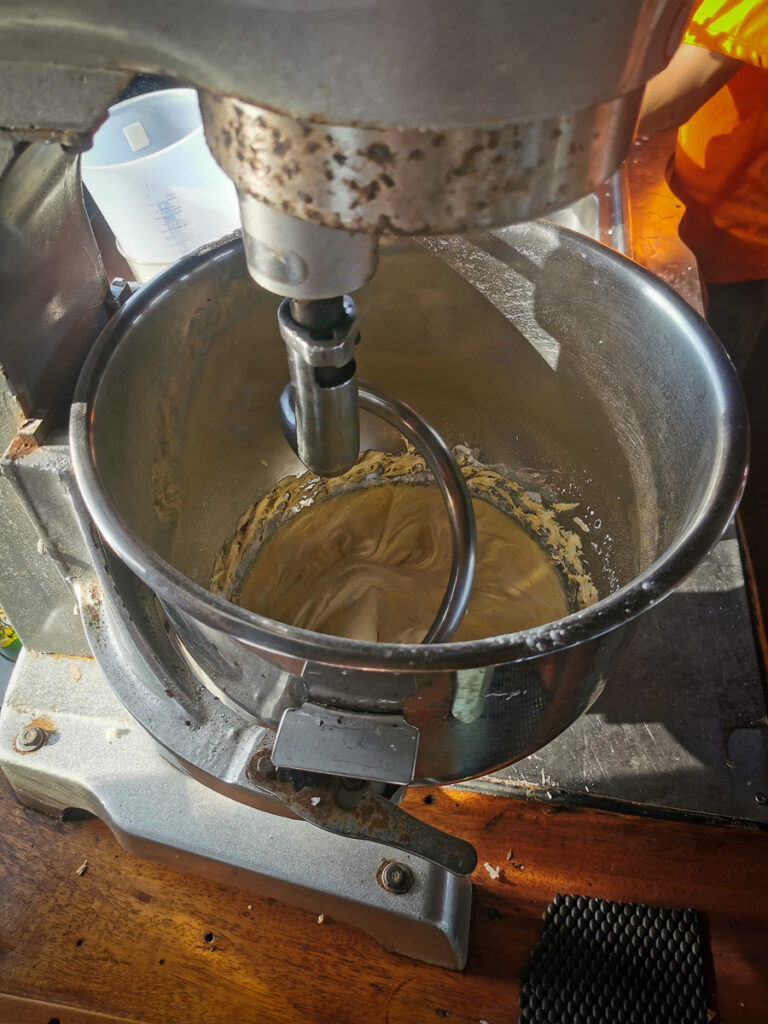
We started the day with a light breakfast before our morning dive and also placed our full breakfast order. The chefs prepared eggs, pancakes, toast, noodles, or rice dishes during our dive, and as soon as we got back on board, they served them all.
Lunch was buffet-style, with 4 or 5 dishes to choose from every day.
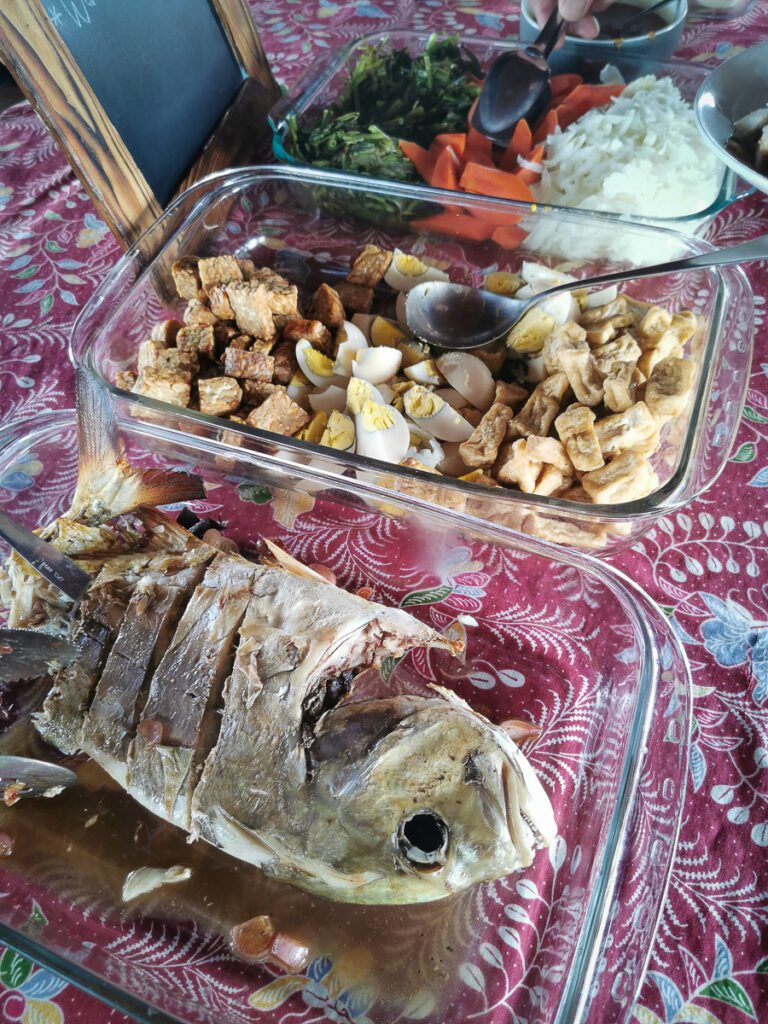
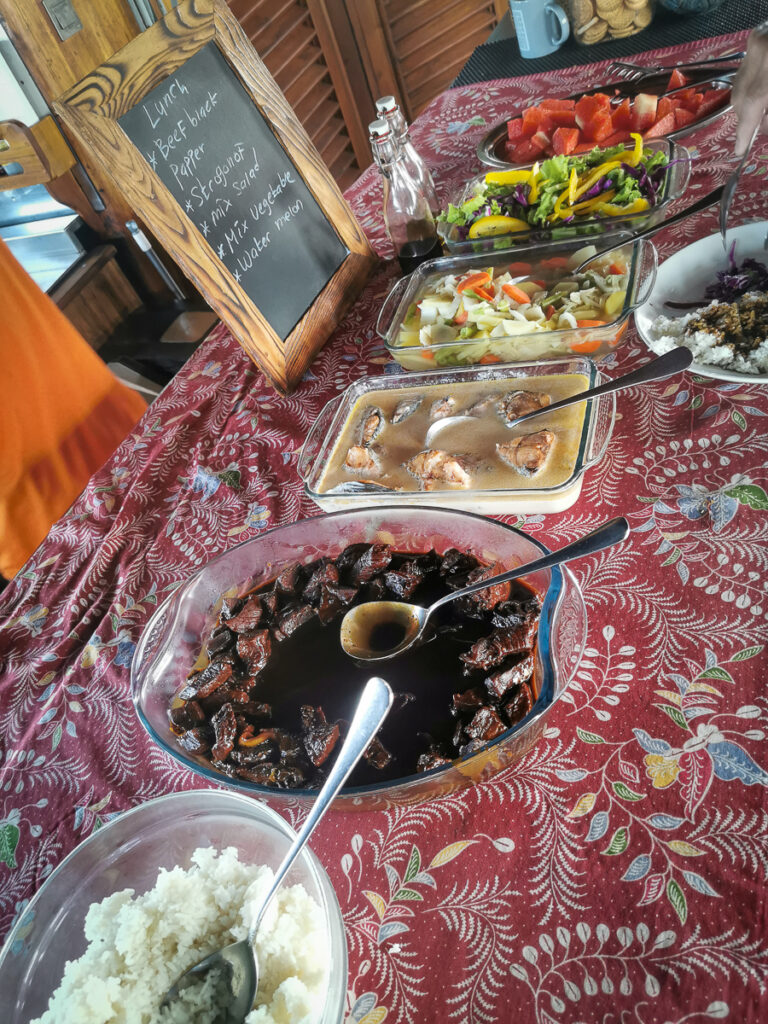 Between the third and fourth dives, we had a snack around 4:00 p.m. to energize us for our night dive. These snacks included fried bananas, fruits, fried tofu, cakes, and more.
Between the third and fourth dives, we had a snack around 4:00 p.m. to energize us for our night dive. These snacks included fried bananas, fruits, fried tofu, cakes, and more.
Dinner was a 3-course meal served at the table in the dining room. The meal often started with a soup. The main courses included a variety of dishes like tuna curry, tacos, tenderloin steak with eggplants, pasta, and prawns, all very tasty. I especially loved the burgers on the last day!
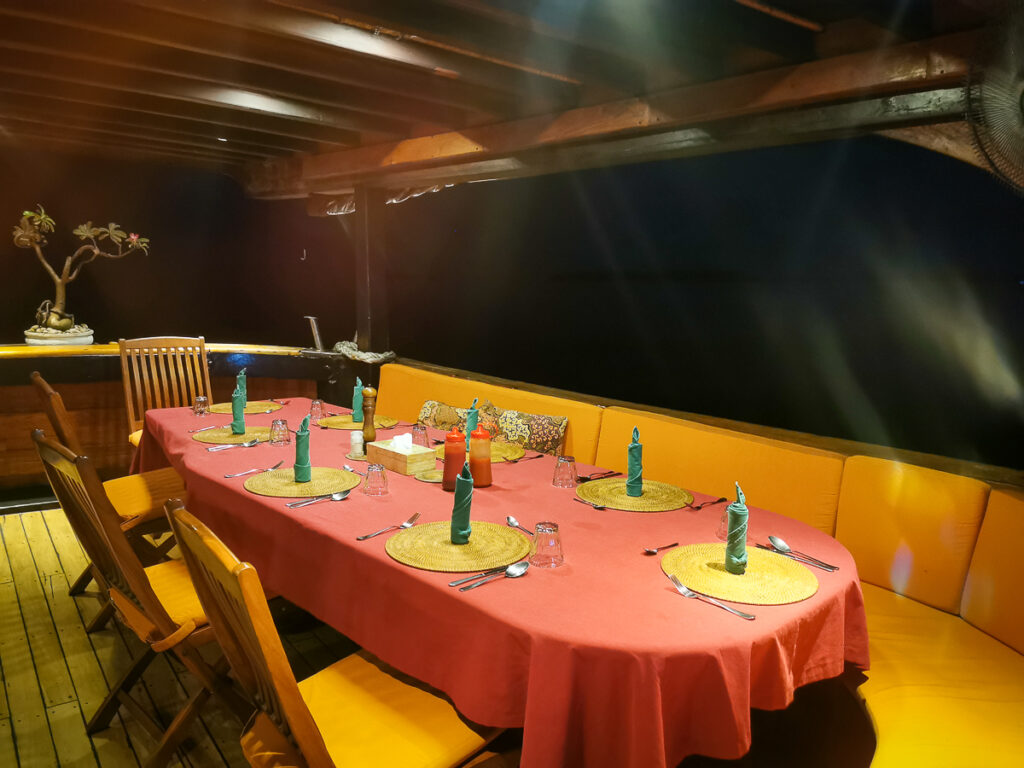
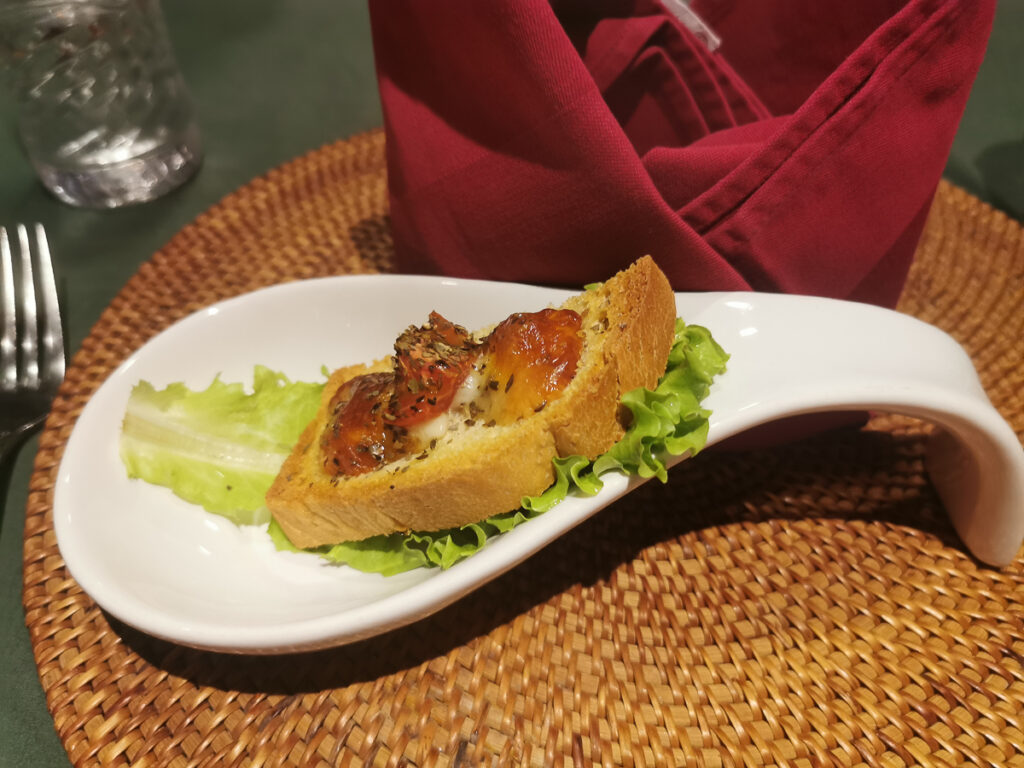
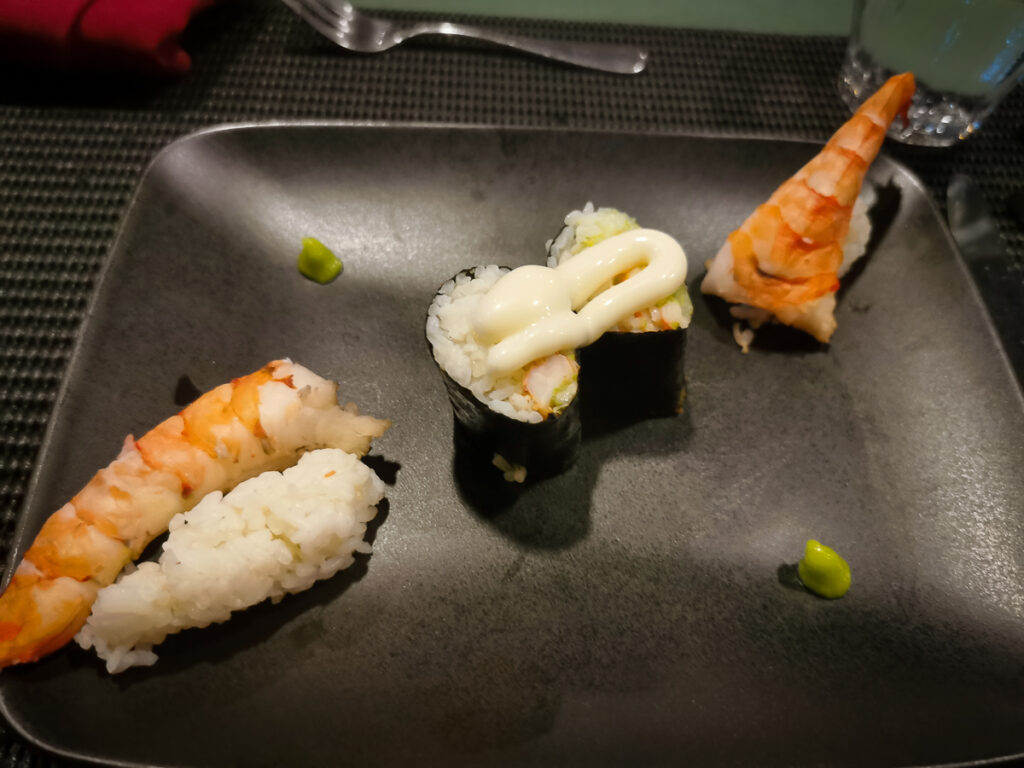 After a long and tiring dive, you would find extra plates waiting for you on the table. This thoughtful arrangement ensured that if you felt starving after your dive, you could help yourself to extra servings of food without any worry.
After a long and tiring dive, you would find extra plates waiting for you on the table. This thoughtful arrangement ensured that if you felt starving after your dive, you could help yourself to extra servings of food without any worry.
Tea, coffee, and orange juice were available throughout the day. Beers, soft drinks, and wine were also available for purchase (3.5 euros, 2.5 euros, and 30 euros, respectively).
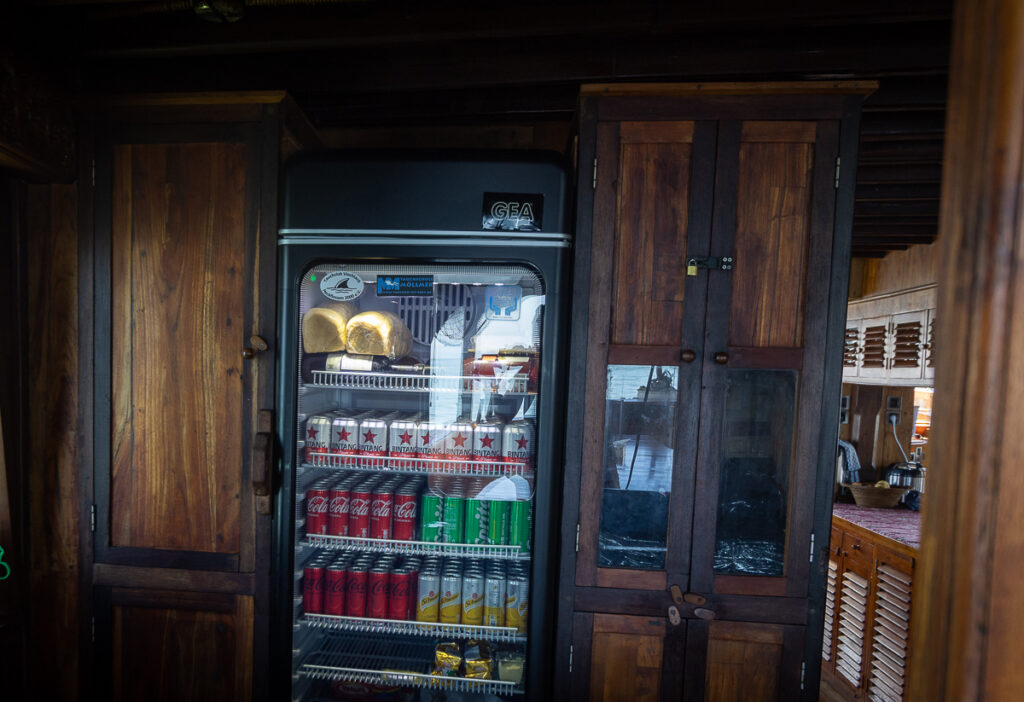
Tip: If you drink alcohol, bring a bottle of wine or spirits with you on board. Alcohol is very expensive in Indonesia due to the over 200% import tax.
Review of the diving organization on the Ilike
One of the reasons I like the Ilike liveaboard so much is that it caters to advanced divers. Most trips have a minimum requirement of 75 dives. If you are a good diver, this increases your chances of being in a “good” group. It also means they can dive at more challenging dive sites with currents and action.
Dive briefing and diving groups
Diving on the Ilike liveaboard is well-organized. The Ilike Liveaboard accommodates a maximum of 16 divers per trip, ensuring that the underwater experience never feels overcrowded.
The Ilike offers three to four dives daily, with the option of two-night dives during the Kalimantan trip. The typical dive times are 7 a.m., 11 a.m., 2:30 p.m., and 4:30 p.m., although these times may vary slightly depending on the travel time between dive sites. Diving was very relaxed. Thirty minutes before each dive, Jan, our cruise director, would provide a thorough briefing about the dive site. His briefings were highly informative, covering the dive site’s landscape, currents, and practical tips.
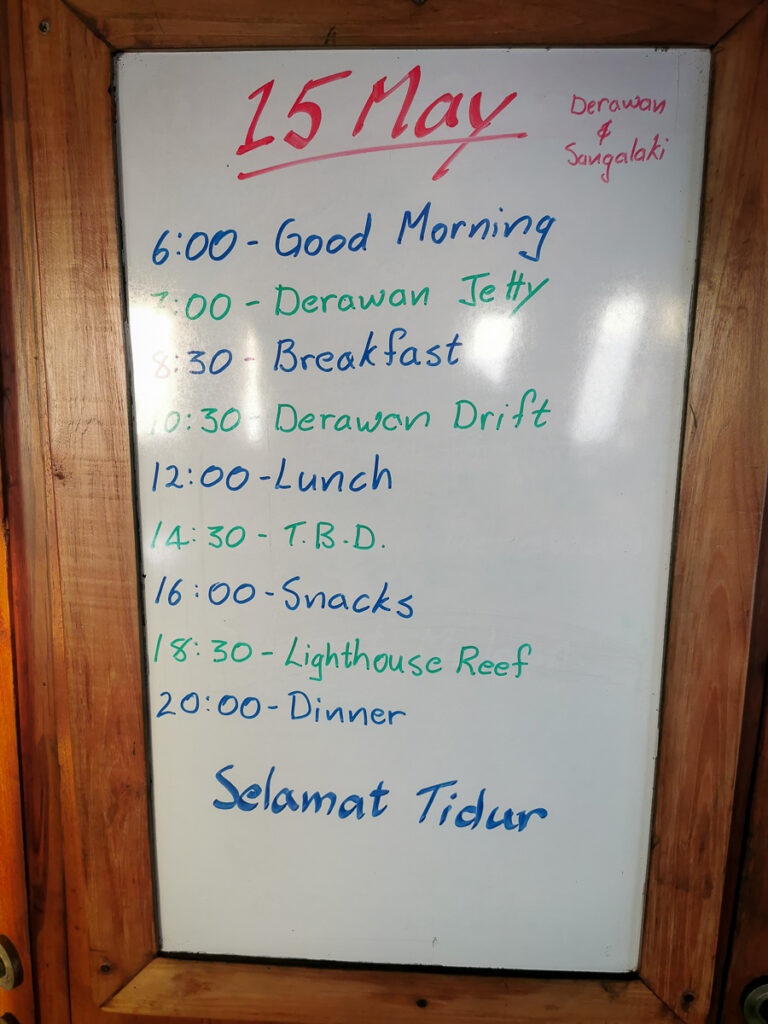
Ilike diving rules
Ilike offers one of the most generous maximum dive times among liveaboards I know. The maximum dive time is 70 minutes. This is great if you have good air consumption because compared to boats that offer a 45 or 50-minute maximum dive time, you get over 30 percent more diving time, which is significant!
A safety stop is mandatory for 3 minutes at 5 meters, and all the dives are no-deco dives. This is prudent as there are no decompression chambers in Derawan.
Nitrox is available for an extra cost of 90 euros for the week. For the Kalimantan itinerary, it was well-needed as we spent a lot of time diving between 20 and 30 meters. The nitrox fill was consistently around 30 percent. One of the dive guides would check your Nitrox content before every dive.
Tender boat diving
Throughout the trip, we exclusively used tender boats for all our dives. The Ilike has two tender boats to shuttle you to the dive sites. We were organized into two small groups, with just seven divers in total, ensuring an intimate and personalized experience. The boat is designed to accommodate up to 16 divers across four groups, and the tenders stood out for their spaciousness and comfort. The crew efficiently handled all the equipment, only requiring us to bring our masks to the tender. Accessing the tender was effortless, thanks to the large and user-friendly staircase. After the dive, the crew provided invaluable assistance in boarding the tender and lifting our tanks out of the water. Following this, they meticulously unloaded all the equipment onto the boat and took care of rinsing our cameras and wetsuits. Overall, the level of service provided truly exemplified a 5-star diving experience.
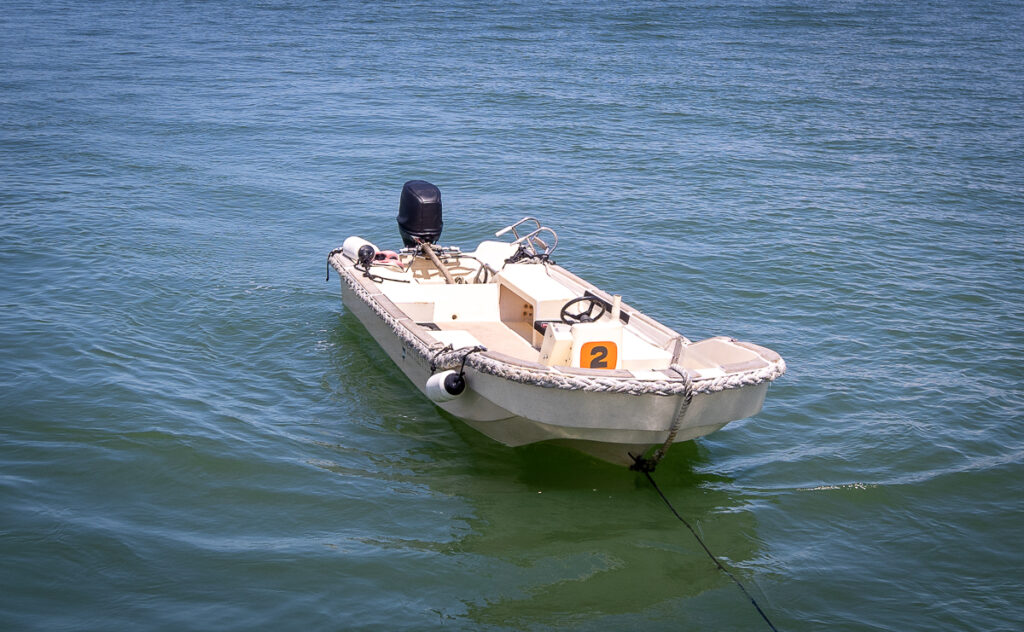
Review of the dive deck on the Ilike
The dive deck is spacious and well-organized. At the cruise’s start, you will be assigned a space with a storage box underneath a seat. It’s one of the largest dive decks I’ve seen on a liveaboard, so it never felt crowded.
The towel service is also well-organized. Diving towels with your cabin number will be dried for you, so you can have a plush and warm towel waiting for you after every dive.
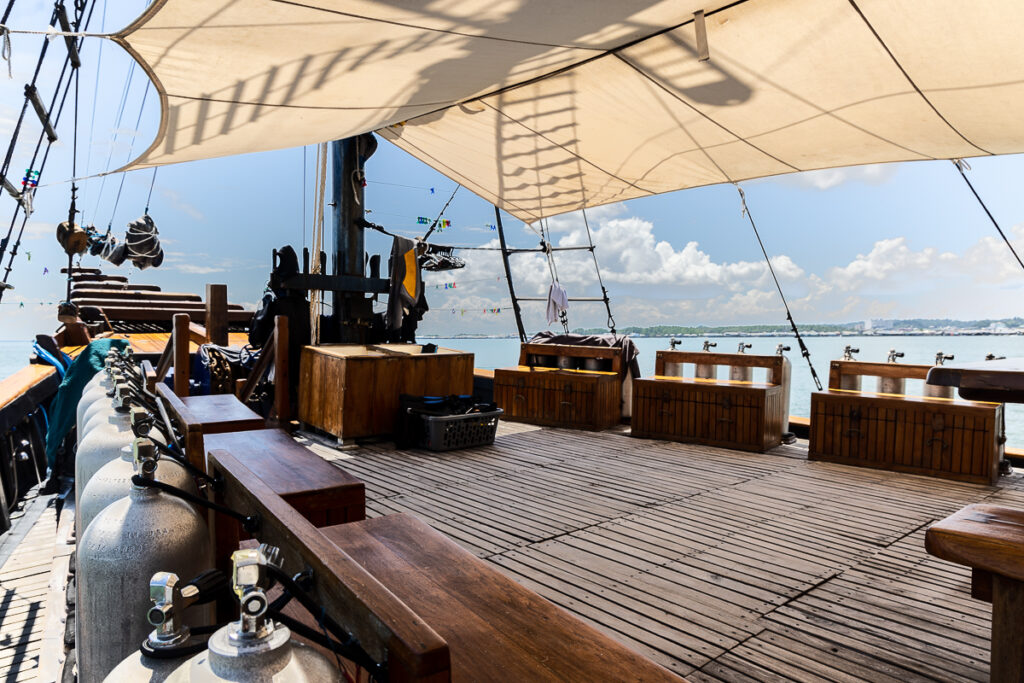
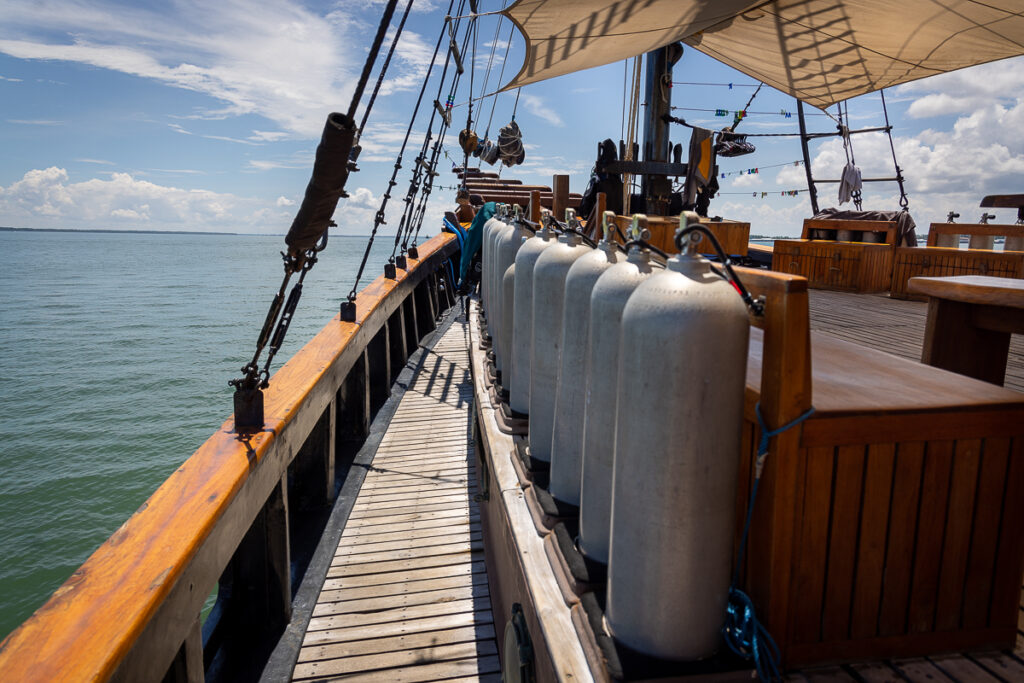
Perfect set up for photographers
The Ilike liveaboard is designed with underwater photographers in mind. It features a charging area and a dedicated camera space where photographers can prepare their gear. The service for cameras is excellent, with the crew bringing the camera on the boat for every dive. After each dive, they rinse the camera in fresh water and then place it back on the camera table to dry.
Water temperature when diving in the Derawan Archipelago
I was there in May, and the water was warm! We had temperatures of 28-31 degrees. It is too warm for the corals, and I hope they don’t suffer bleaching in the coming weeks.
This means you can wear a 3mm wetsuit for the whole trip.
Tip: The current and swell can be strong and require intense finning. Bring some diving socks to avoid blisters. A reef hook is also helpful if you know how to use it.
Diving Itinerary on Ilike liveaboard cruise to Kalimantan
Day 1 – Arriving and settling in:
We boarded the boat around lunchtime. The rest of the day was spent unpacking, setting up our dive gear, exploring the boat, and meeting the other passengers. We departed from Tarakan around sunset, and it was lovely to be in the outdoor dining area, watching the landscape pass by.
Day 2: Diving with turtles in Derawan
We sailed through the night to reach Derawan Island. Although Derawan may not be the most exciting diving spot in the area, we had to stop there for administrative purposes. The boat needed to complete administrative procedures to enter Derawan on the first day and leave on the last day. As a result, Ilike offered four dives at Derawan on Day 2 and 2 dives on Day 8 of our trip.
Derawan is a small island covered in wooden bungalows that accommodate tourists. A sandy bottom with coral bommies surrounds it. There are many wooden jetties along the coast, and it is possible to drift between them. Crocodiles and vertical, leaf, and jaw fishes are found in this area. It’s recommended not to go deeper than 20 meters in this area. The place is also full of turtles.
Tip: Leave some time in the shallow to explore the areas under the jetty. Schools of snappers, razorfishes, and young bat fishes hang out under the jetty.
A night dive was also offered in Derawan.
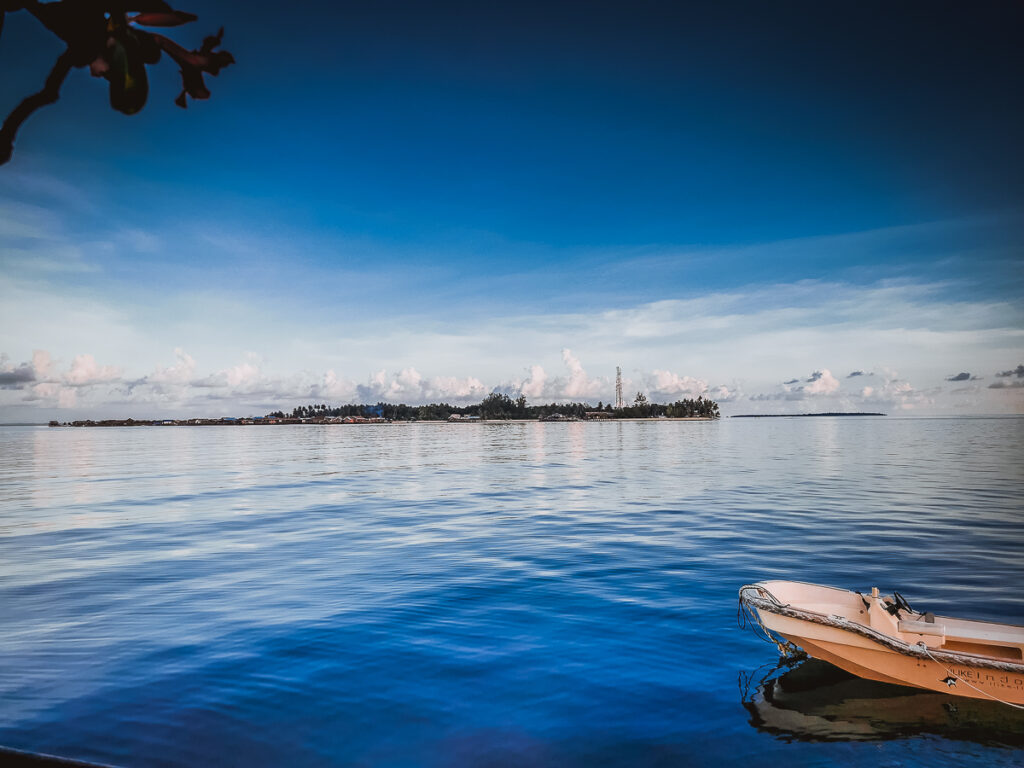
Day 3: Huge Grouper in Kakaban and turtle nesting in Sangalaki
On day 3, we began diving near Kakaban Island, which is shaped like an atoll with a fascinating underwater landscape and a deep wall that plunges below 200 meters. It was disheartening to hear about dynamite fishing while diving in Kakaban and Maratua. Throughout the week, we encountered many shallow reefs that these explosions had utterly destroyed.
Dive site the Kakaban corner
Diving at Kakaban Corner was a pleasant experience. Our dive took place on the island’s southwest corner.
We started on a shallow reef at about 5 meters, which then dropped off into a wall down to 30 meters before sloping off. The wall had various sea fans and soft corals, adding nice colors to the scene. There were also plenty of sponges and tunicates scattered around.
While we hoped to see thresher sharks, sometimes spotted here, we had no luck. However, we did see a blacktip shark, which was a nice sighting. The most interesting part of the wall was around 20 meters deep, where the corals and sponges were more concentrated.
At about 5 meters, the coral garden hosted a school of fusiliers that were notably larger than usual, which added a bit of excitement to the dive. Our guide had a sharp eye and pointed out a few nudibranchs and some tiny shrimp, which were a nice touch to the overall experience.
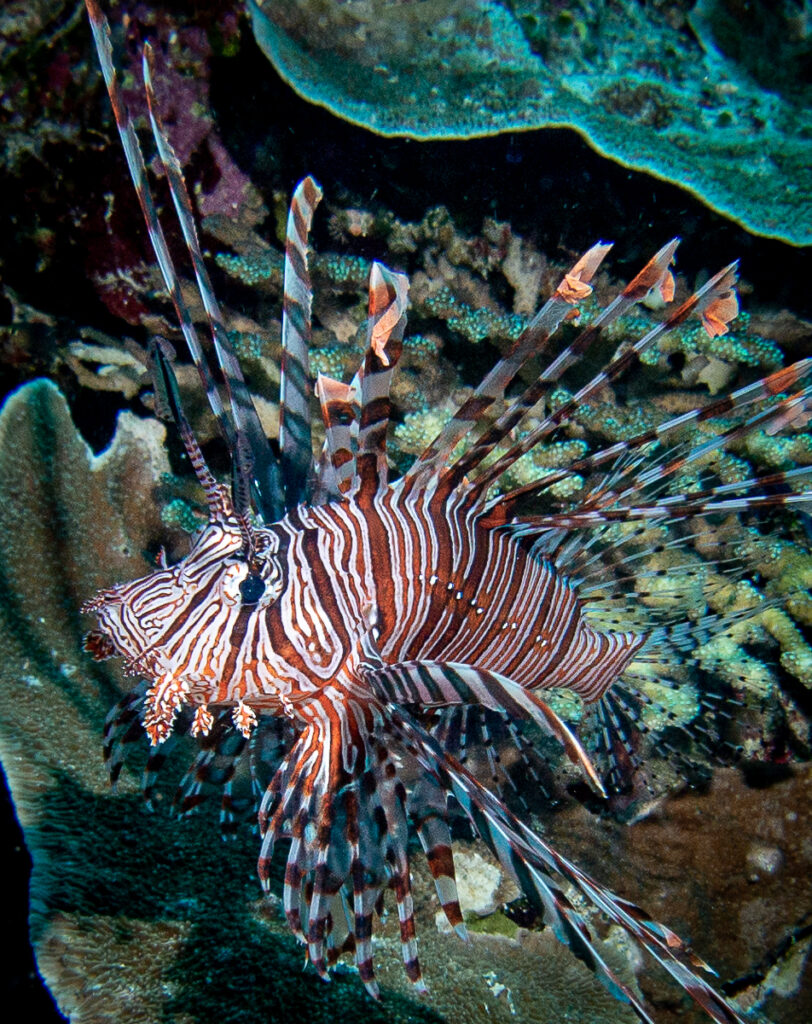
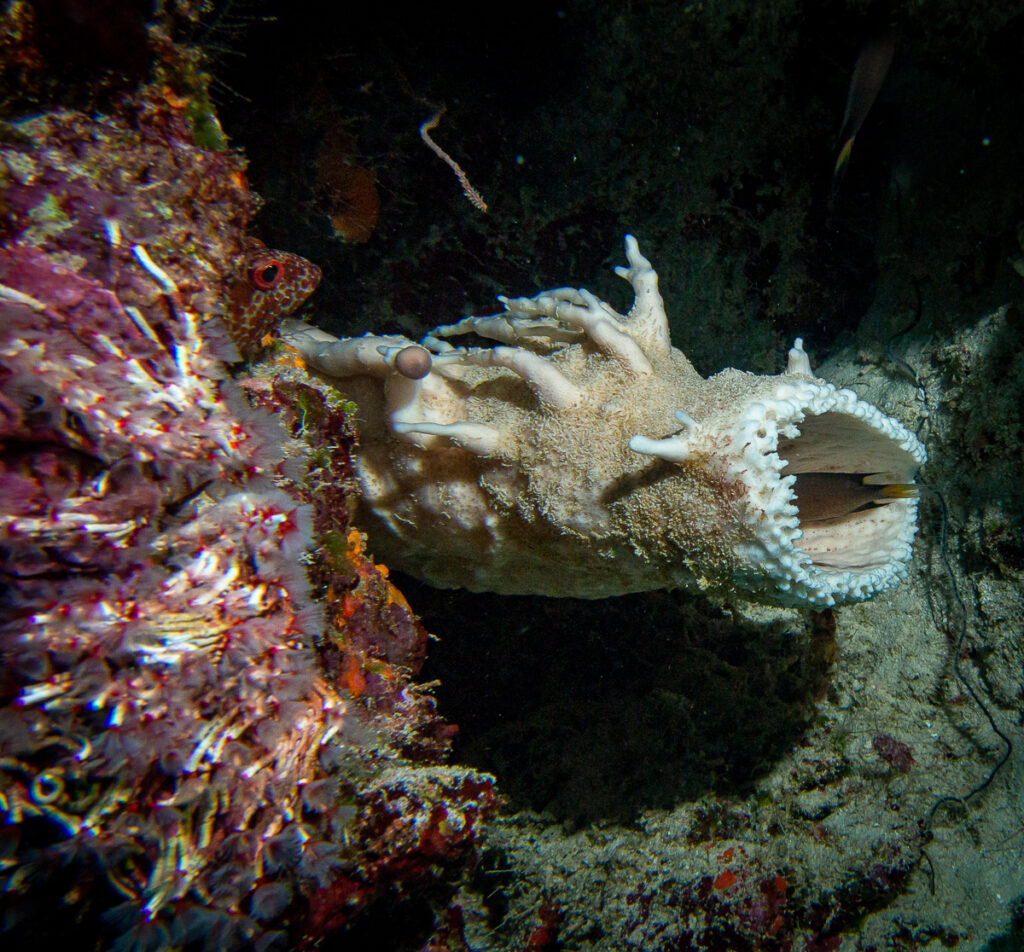
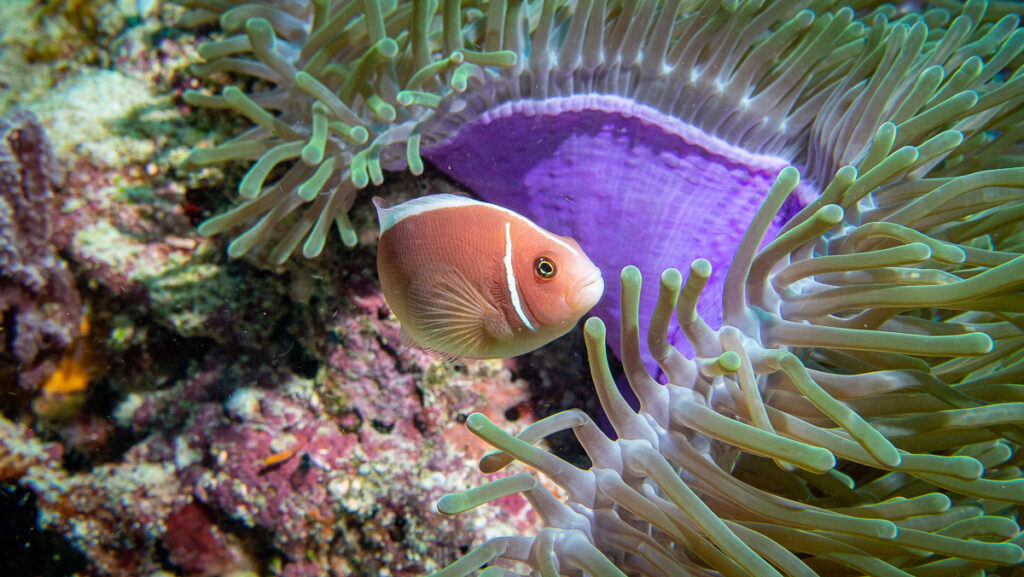
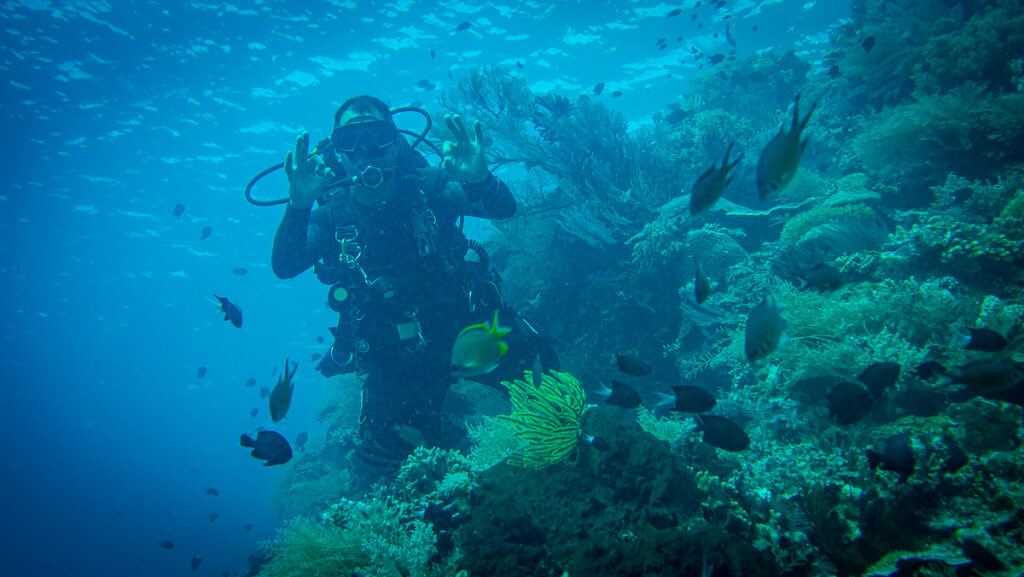
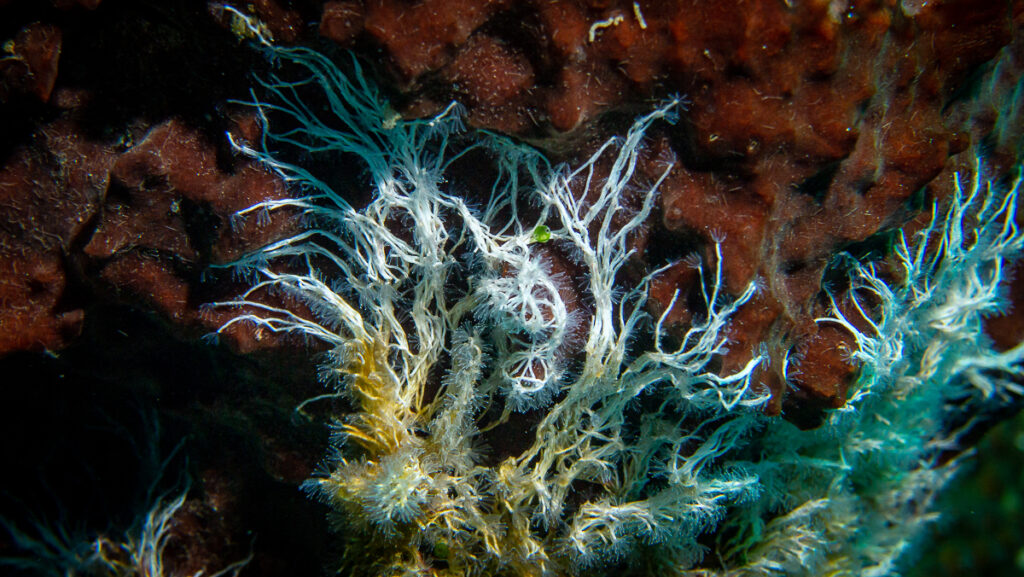
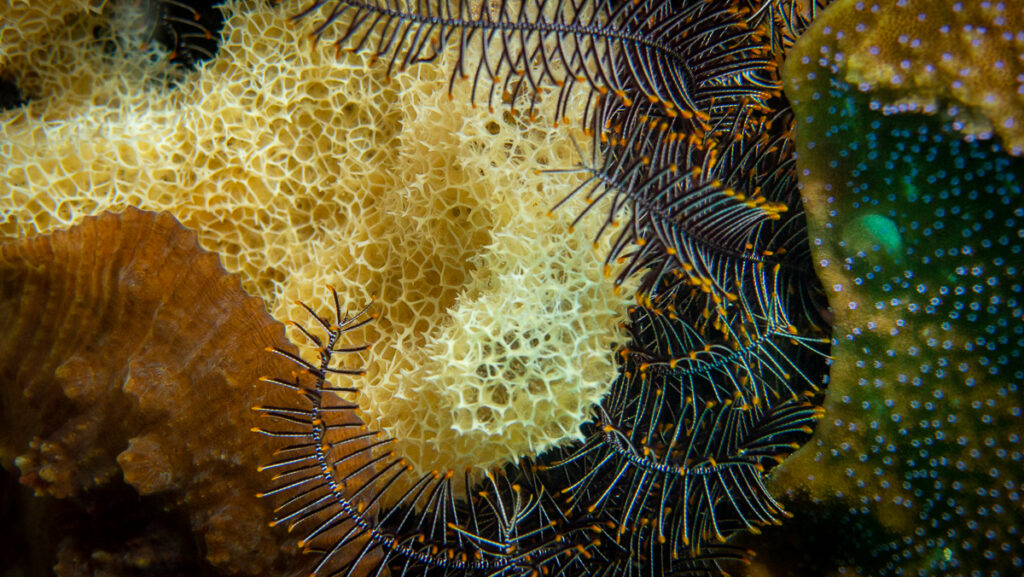
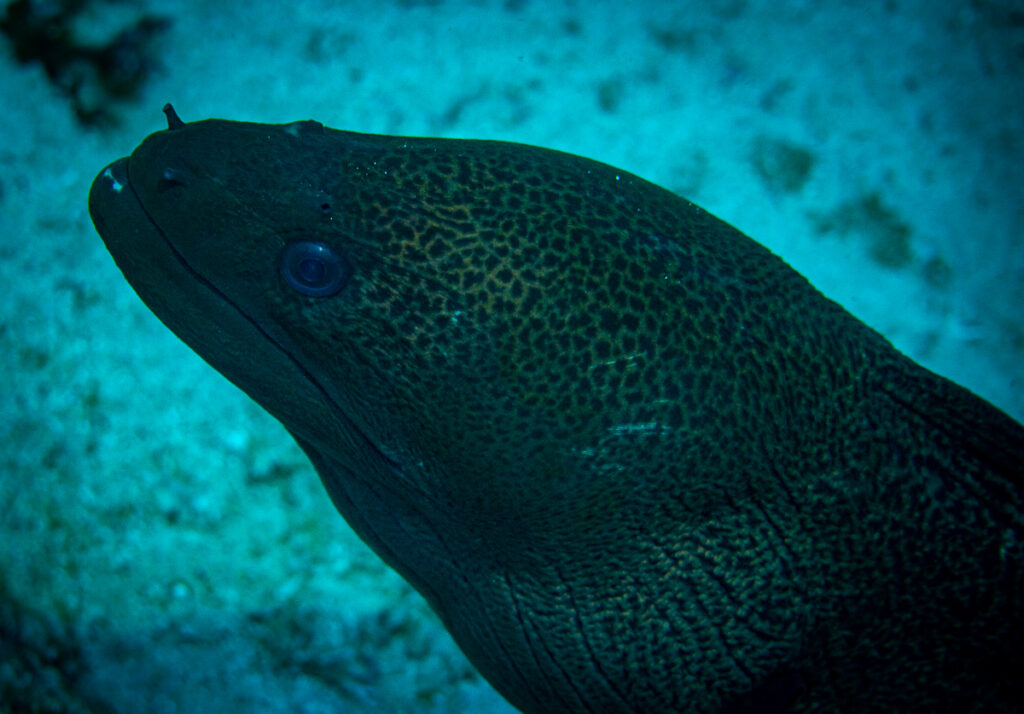
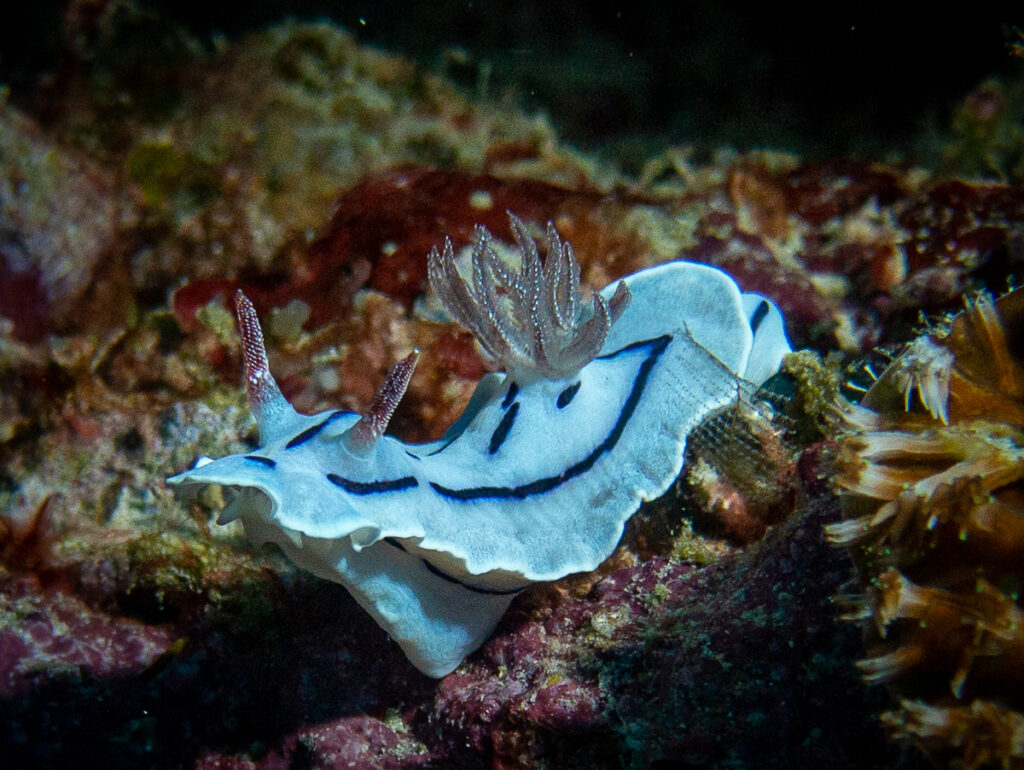
Unfortunately, some of the coral has been very damaged by dynamite fishing in the area. Even though our dives, we would sometimes hear the explosion underwater. This is what a reef looks like after it has been bombed. It is heartbreaking for the local population as there are no more fish, so everyone relying on fishing for food is affected. It also hirs the tourism potential of the region as it scares bigger fishes away and reduces the quality of the diving. This could also explain why most resorts in the Dewaran and Maratua areas seemed empty.
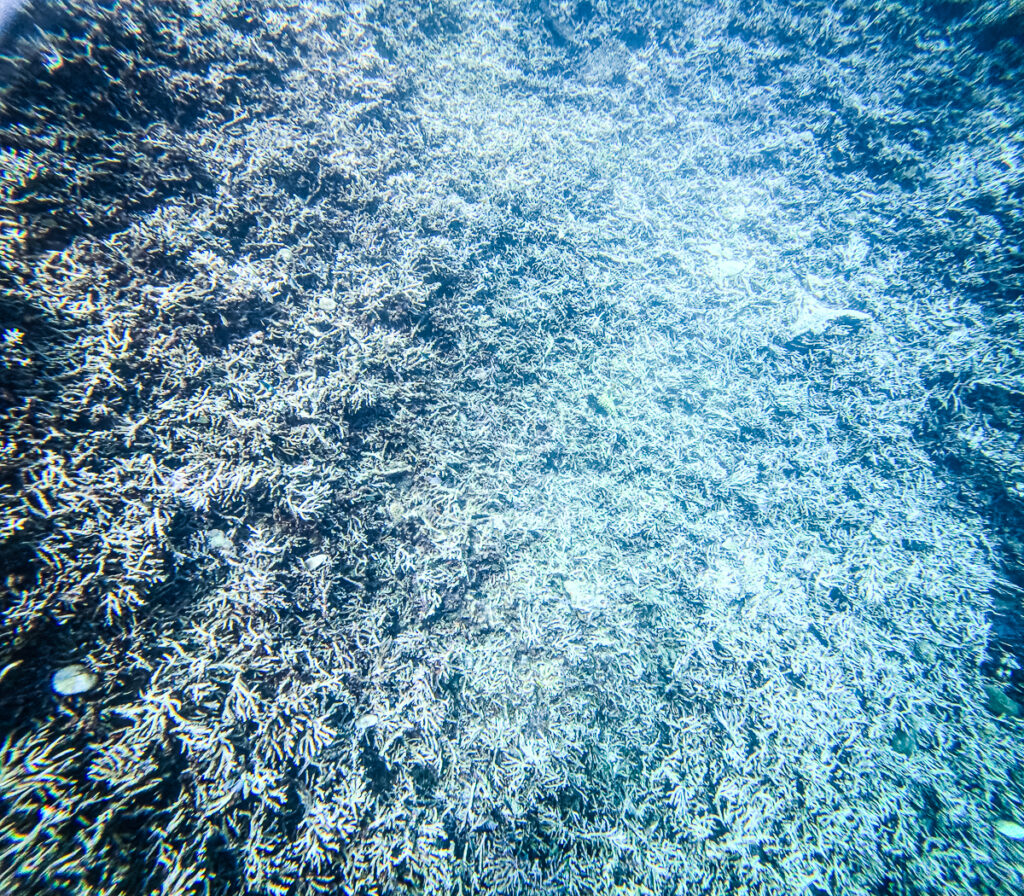
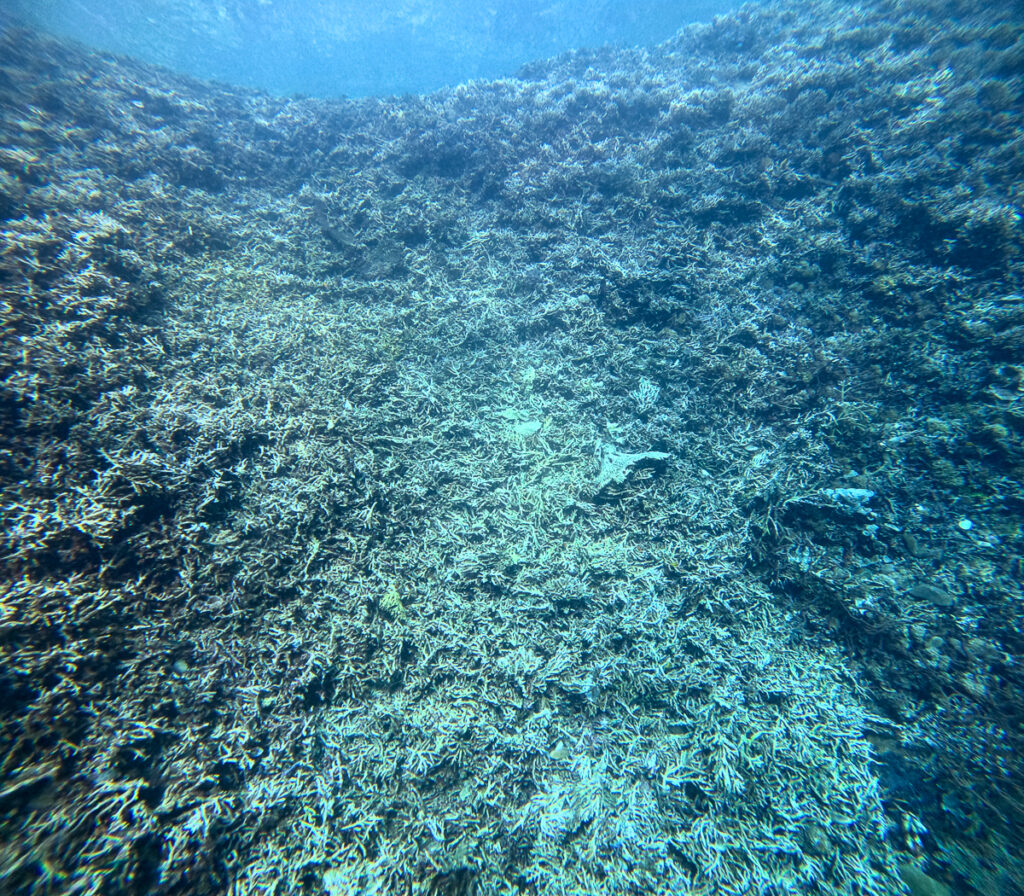
Dive site Barracuda Point.
Diving at Barracuda Point was an incredible experience. This site features a plateau that transitions into a steep wall, providing an exciting underwater terrain. We were greeted by a large school of trevallies, setting the tone for a dive teeming with life.
The site is known for its occasional downcurrents around the corner, so it’s important to stay cautious. The corner had a large number of fish. We encountered schools of fusiliers, unicorn fish, and surgeonfish, all adding to the vibrant underwater scene.
One of the highlights of our dive was stumbling upon a massive school of about 200 barracudas at around 20 meters. They weren’t shy at all, allowing us to get quite close. The most astonishing sight, however, was the most enormous grouper I’ve ever seen, measuring between 2 to 3 meters long, calmly hanging out with the barracudas. It was indeed a remarkable sight.
The wall itself was stunning, showcasing a mix of soft and hard corals. While we did notice the beginnings of coral bleaching in some areas, the overall beauty of the reef remained captivating. The shallow reef at around 7 meters was bustling with anthias, adding a splash of color to the scene. We also spotted a few orangutan crabs, which were a delightful find.
We went back to Sangalaki Island for the last dive of the day.
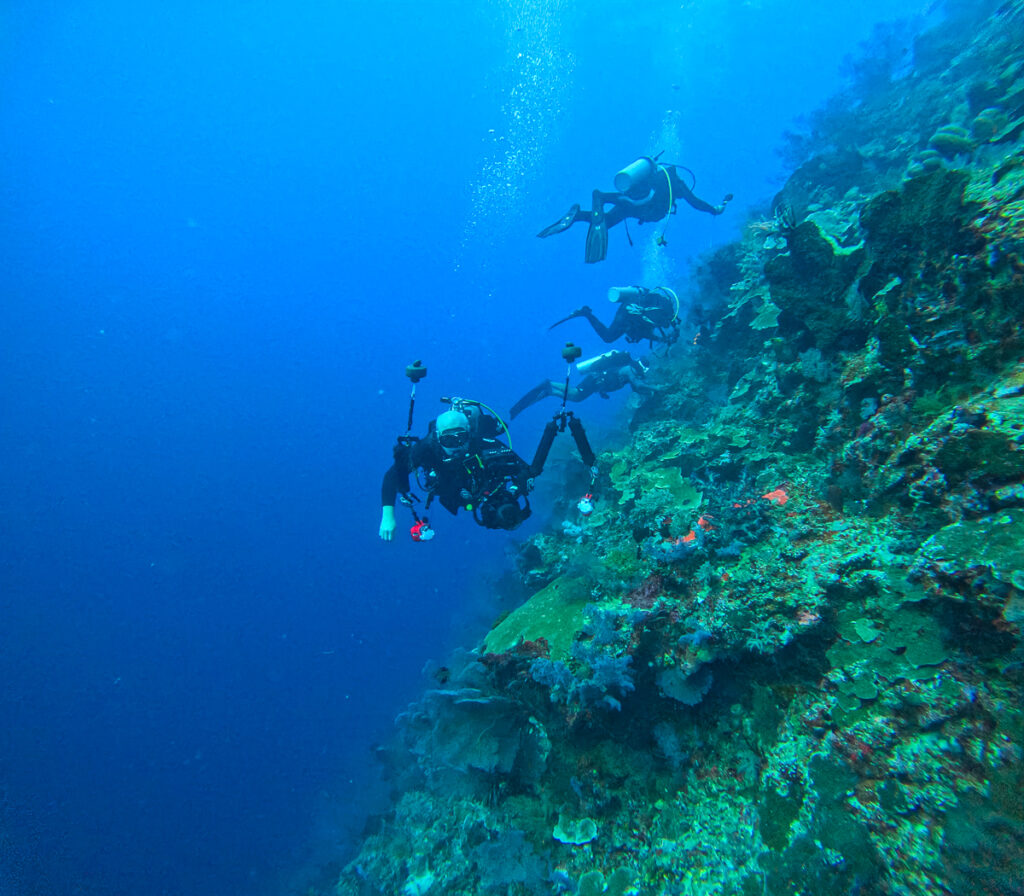
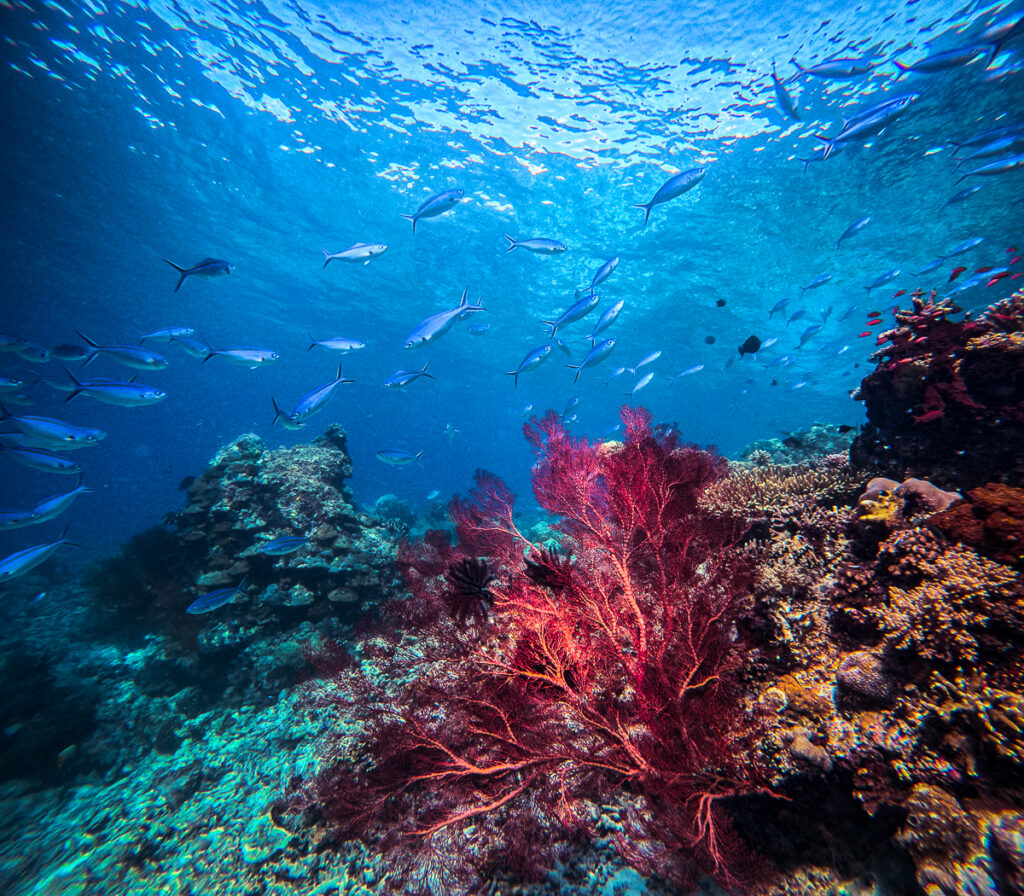
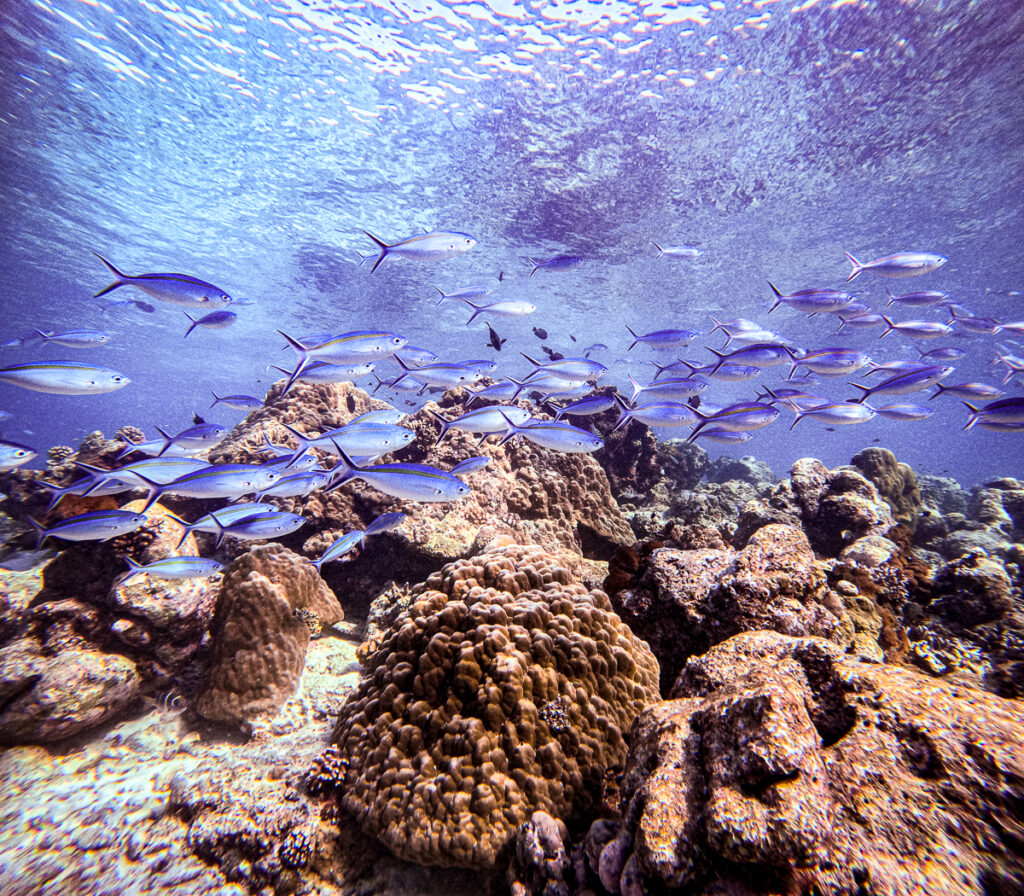
Dive site Sangalaki slope
A vast, shallow reef surrounds Sangalaki Island, and our dive occurred near the lighthouse. The site features a gentle, shallow slope with interesting banana-shaped ridges on the deeper side, creating a diverse underwater landscape of sandy bottoms and hard corals.
Tip: the nicest part of the dive is the shallow reef, where you’ll find beautiful table corals, staghorn, and brain corals. Make sure to shallow up quickly to enjoy this area.
The reef was teeming with small fish, and we also spotted a few nudibranchs, a candy crab, and some dancing shrimp. Although we didn’t see any leopard sharks, which are sometimes seen in the area, we encountered a large school of batfish in the shallows.
It was a fantastic dive, but it left me feeling disappointed. When I dove in Sangalaki 6 years ago, I was surrounded by over 80 manta rays, and it remains one of the best dives of my life. However, all the mantas have disappeared. I have been told that they were scared away by the dynamite fishing taking place in the area.
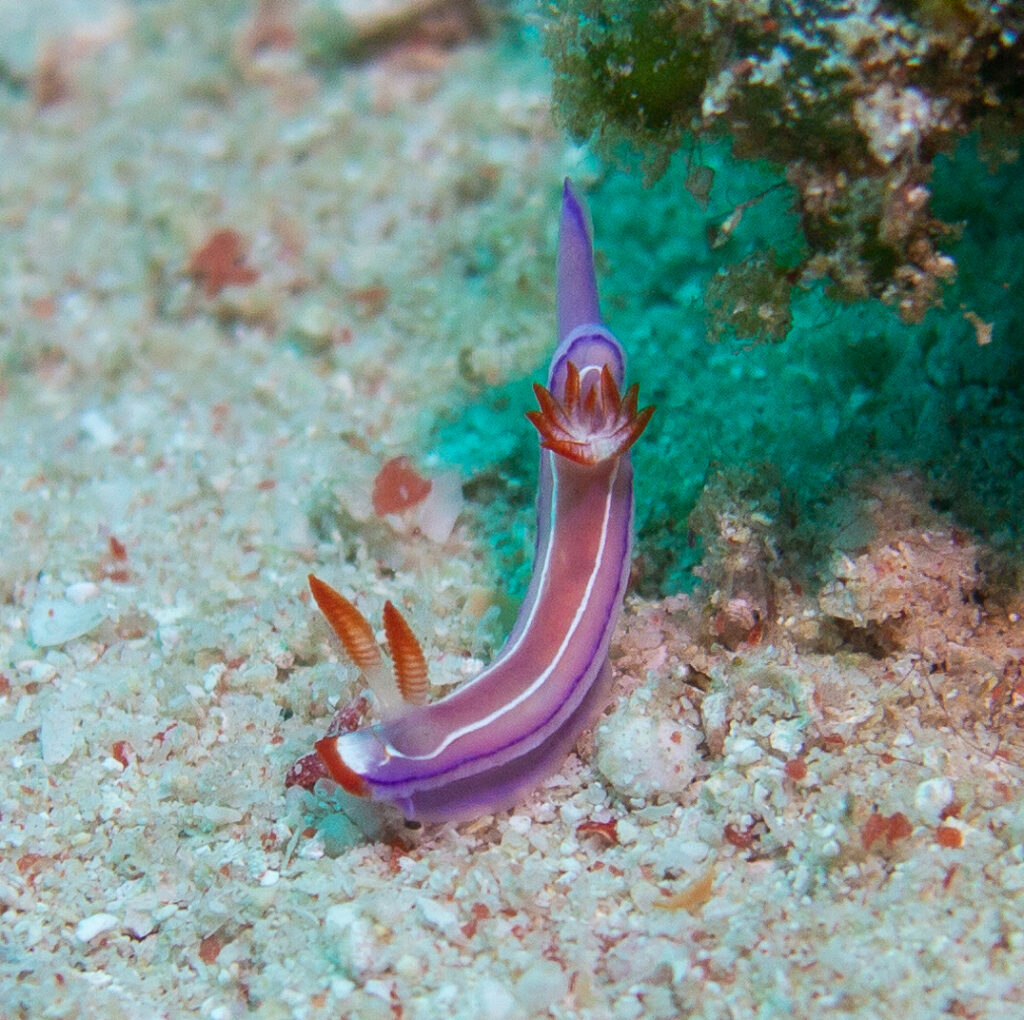
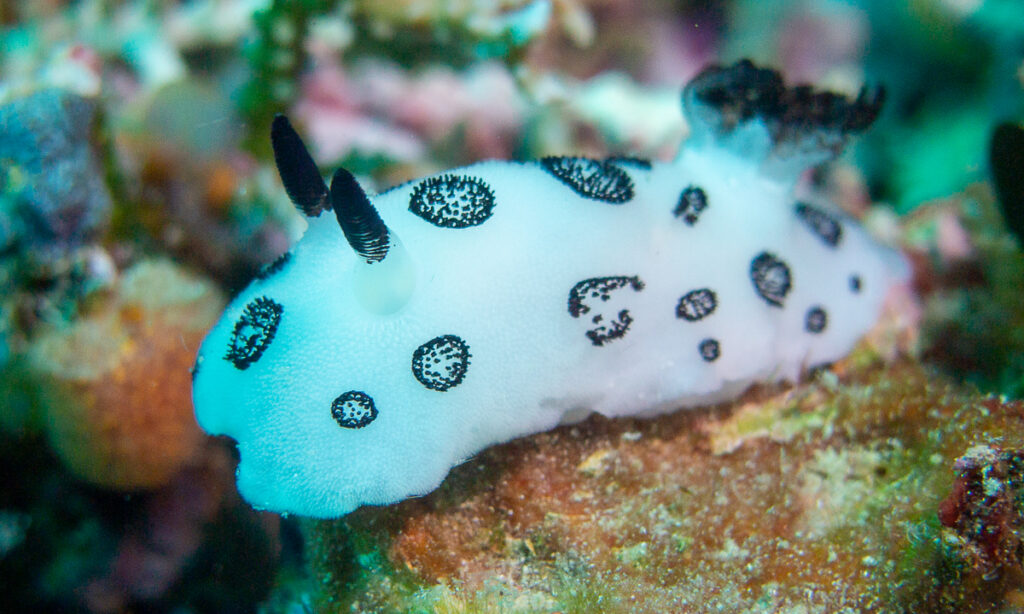
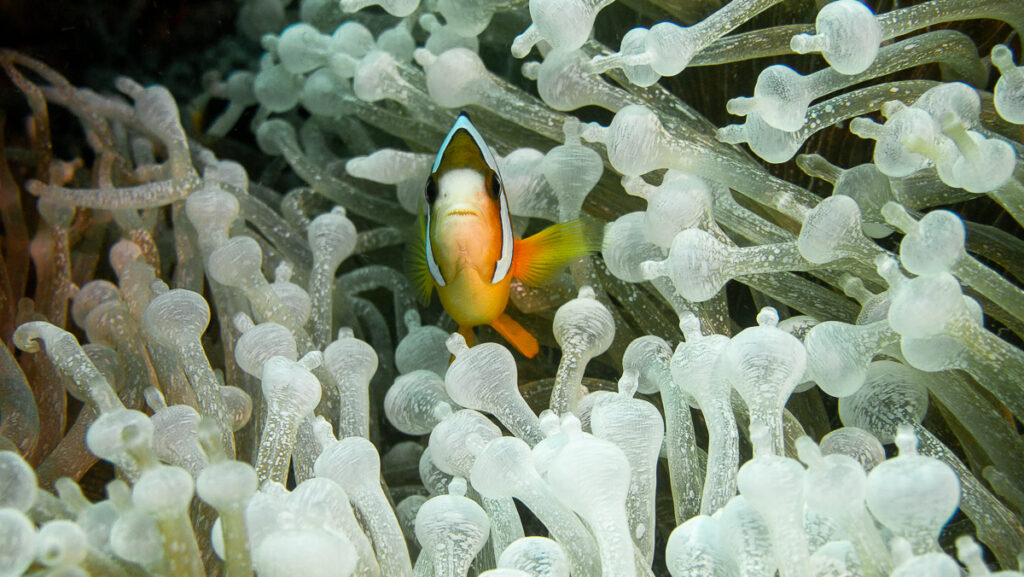
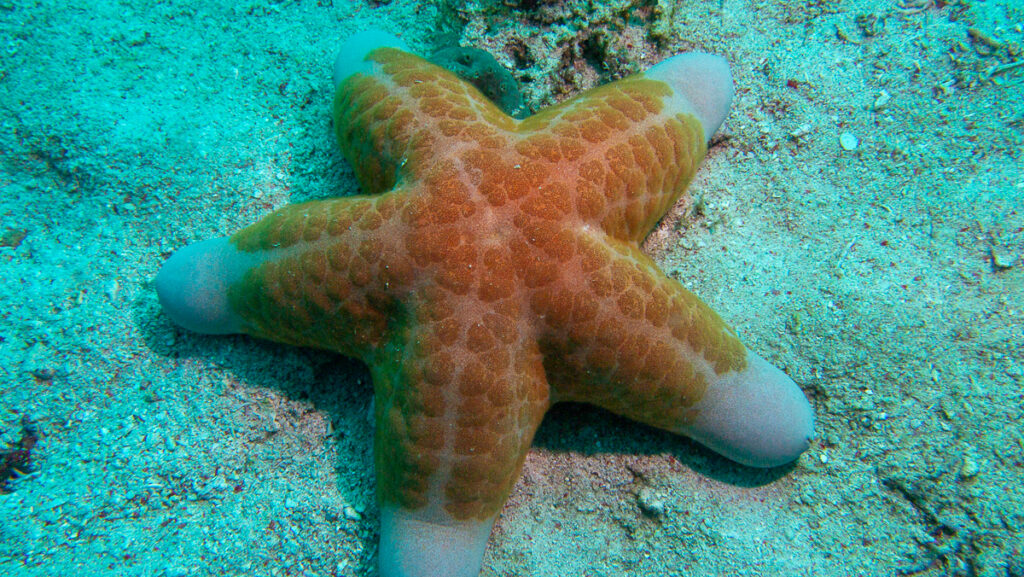
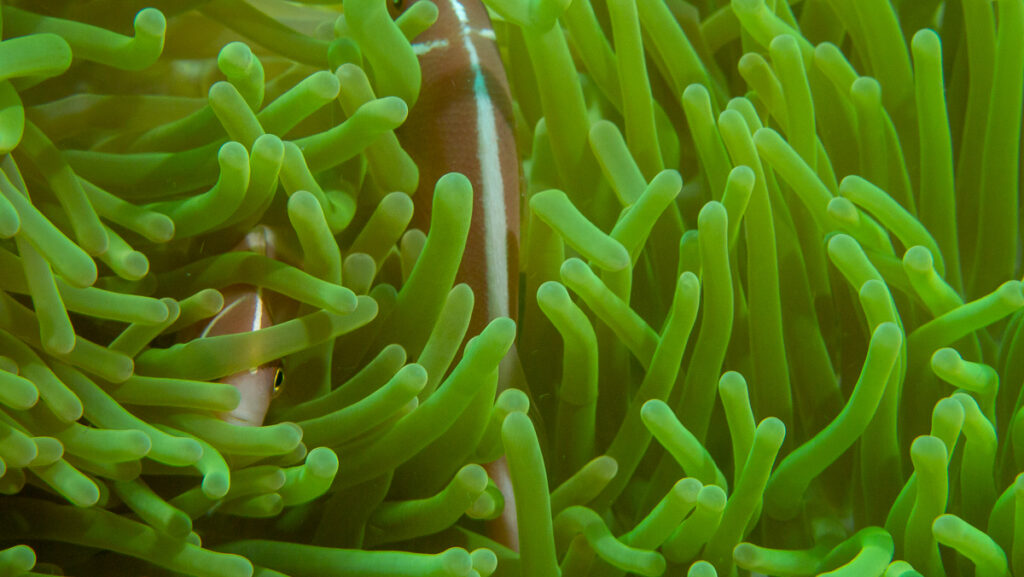
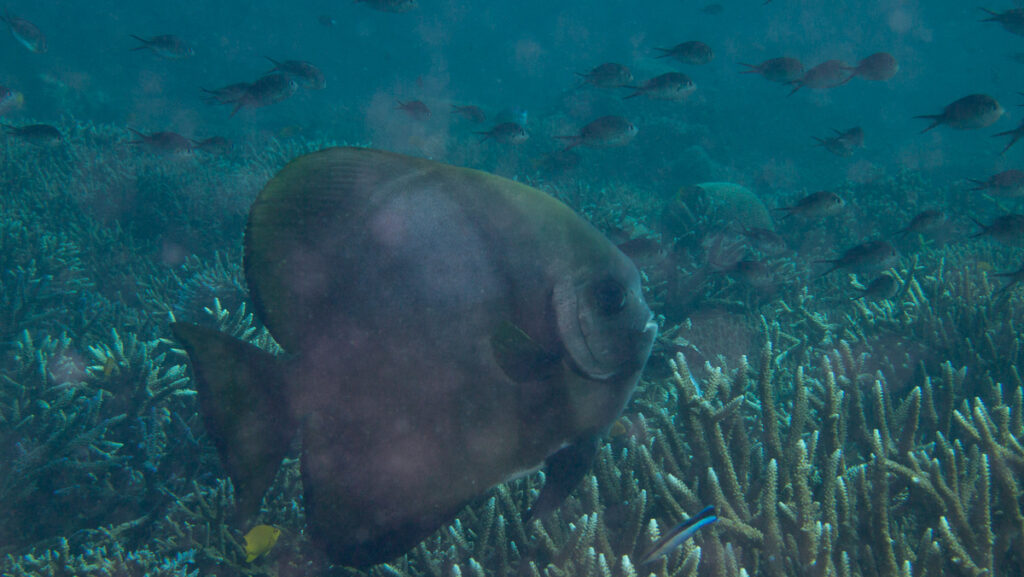
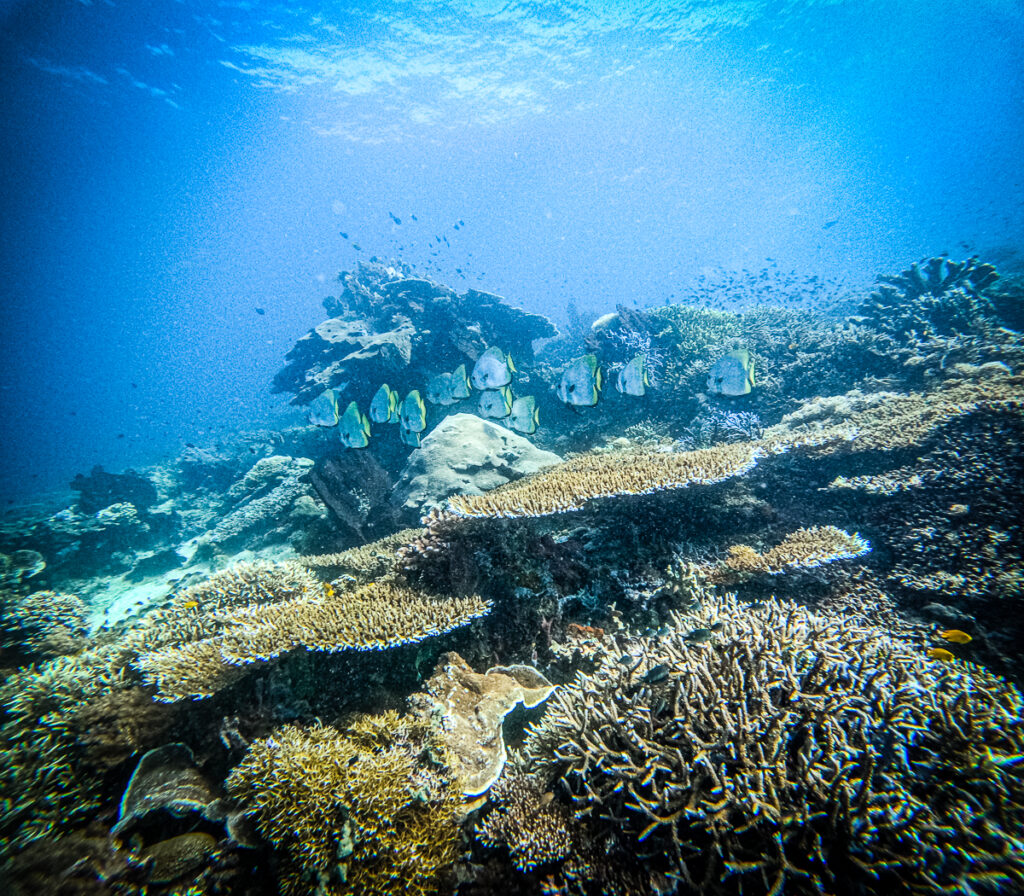
After our dive, we explored Sangalaki Island and visited the turtle conservation center. The center recovers turtle eggs to protect them from predators like lizards. We were fortunate enough to witness two batches of baby turtles that had hatched and got to release the tiny turtles into the water. Watching the little turtles race toward the sea was a unique and humbling experience, knowing that less than one in a thousand will survive.
The beach on Sangalaki Island is superb, with white sand and gently lapping waves. I took a long walk along the coast and witnessed a turtle nesting. Seeing a turtle nest during the day is rare, making it an extraordinary moment.
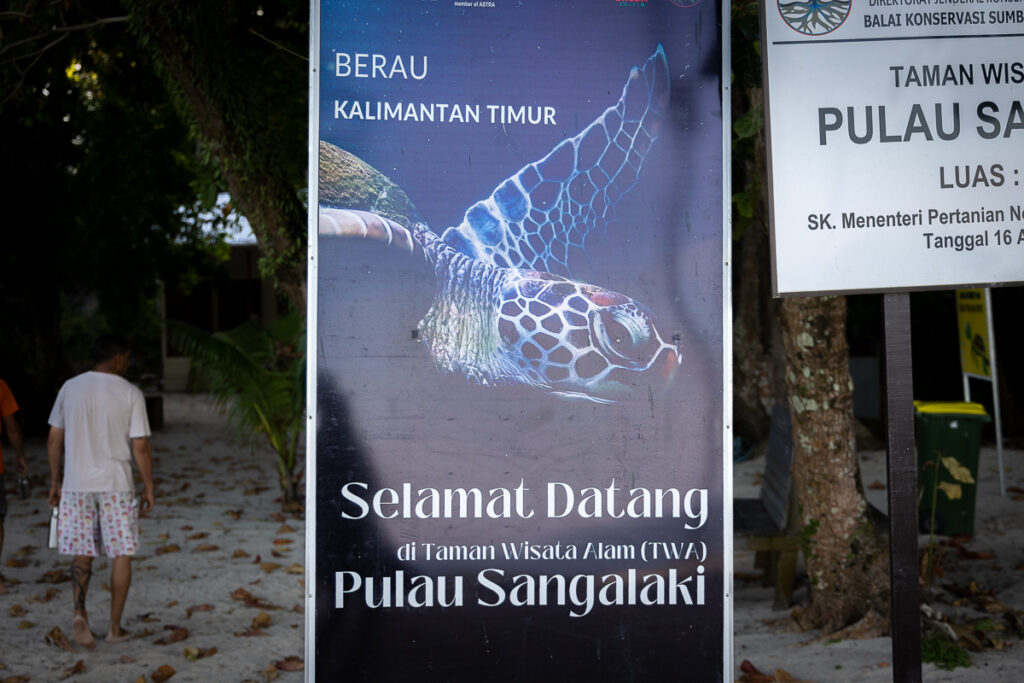
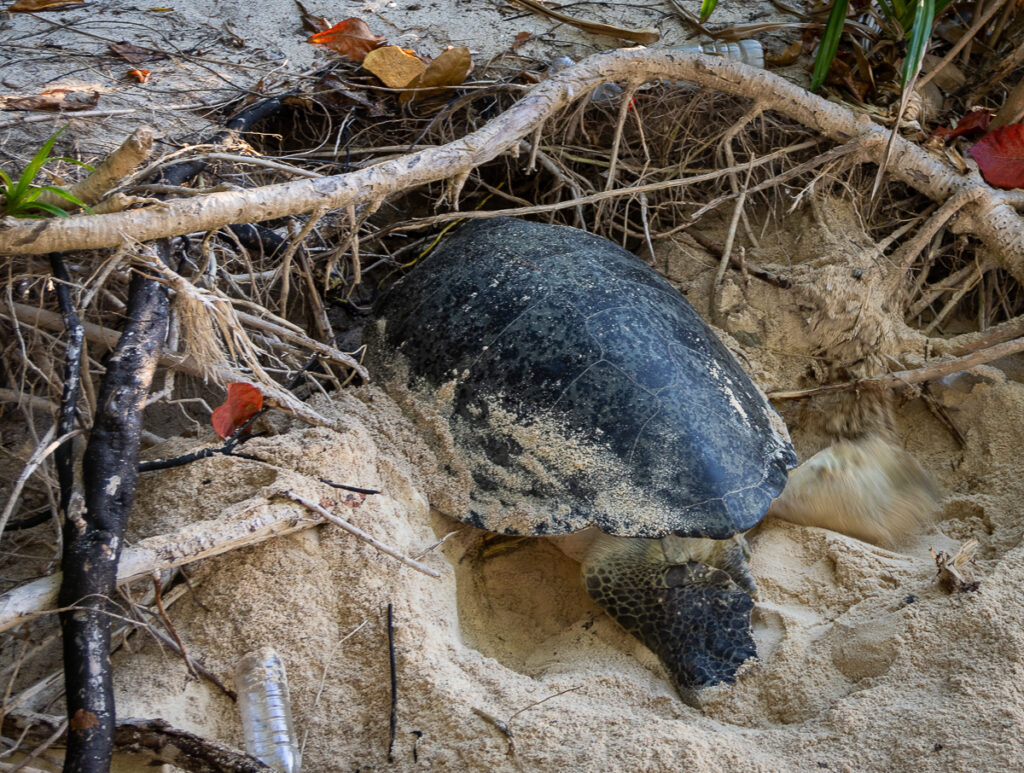
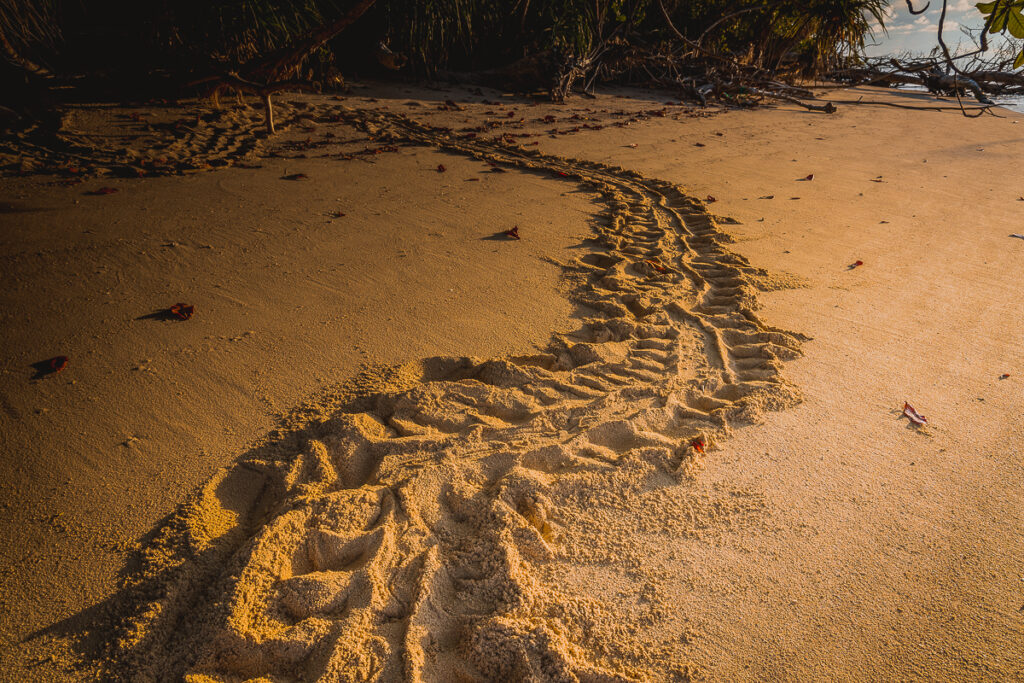
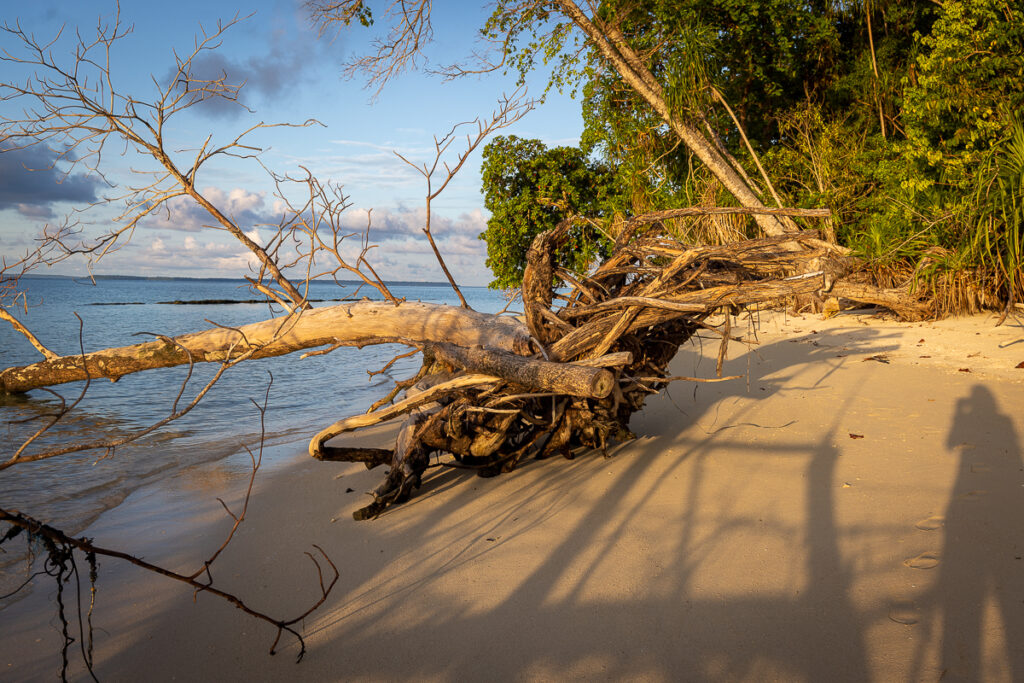
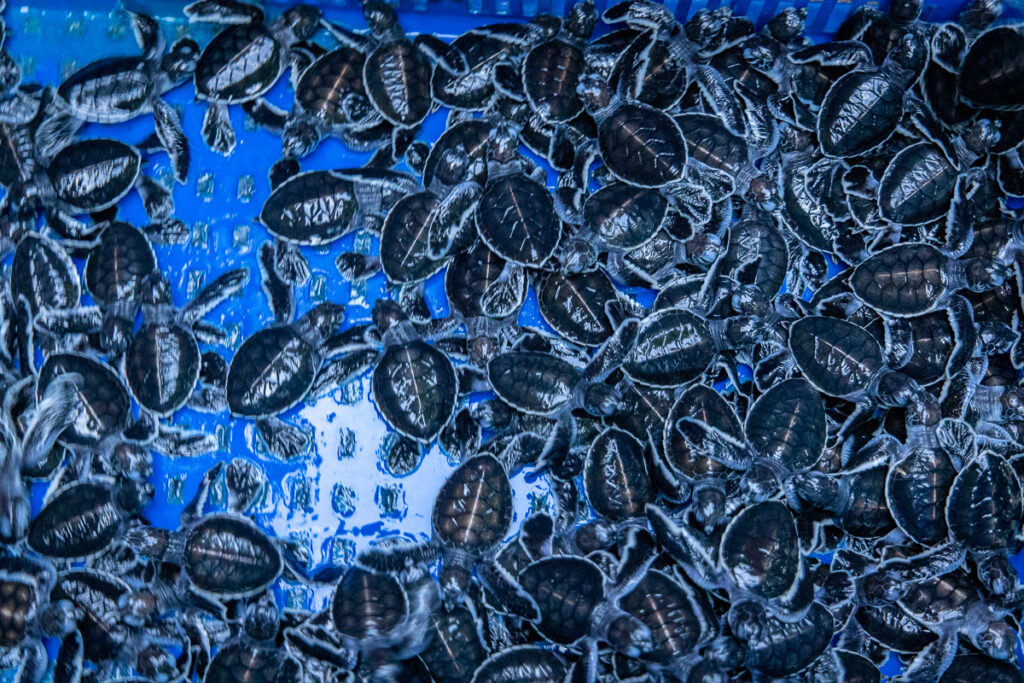
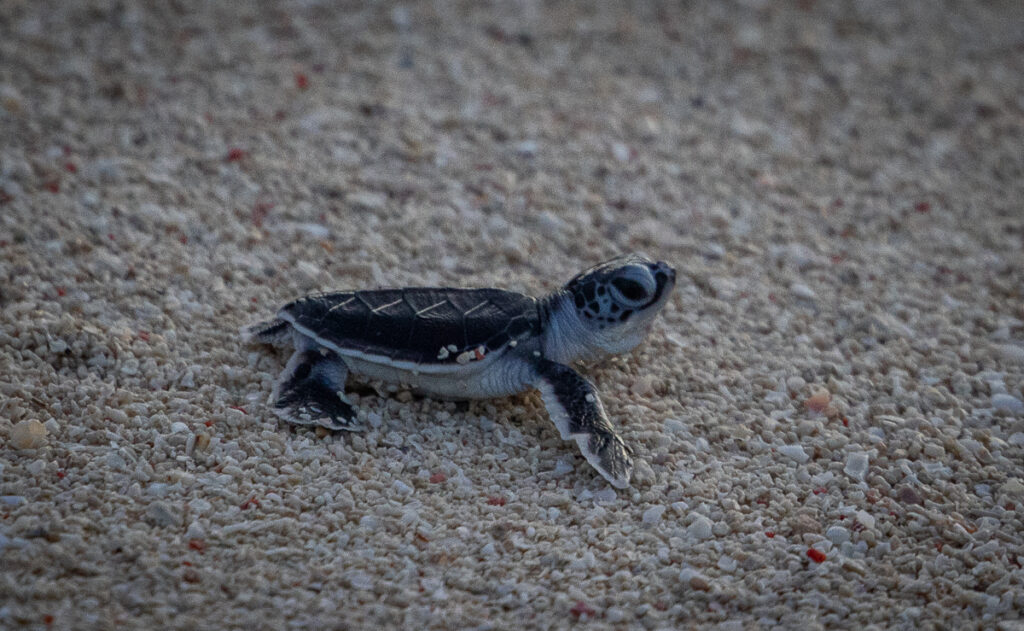
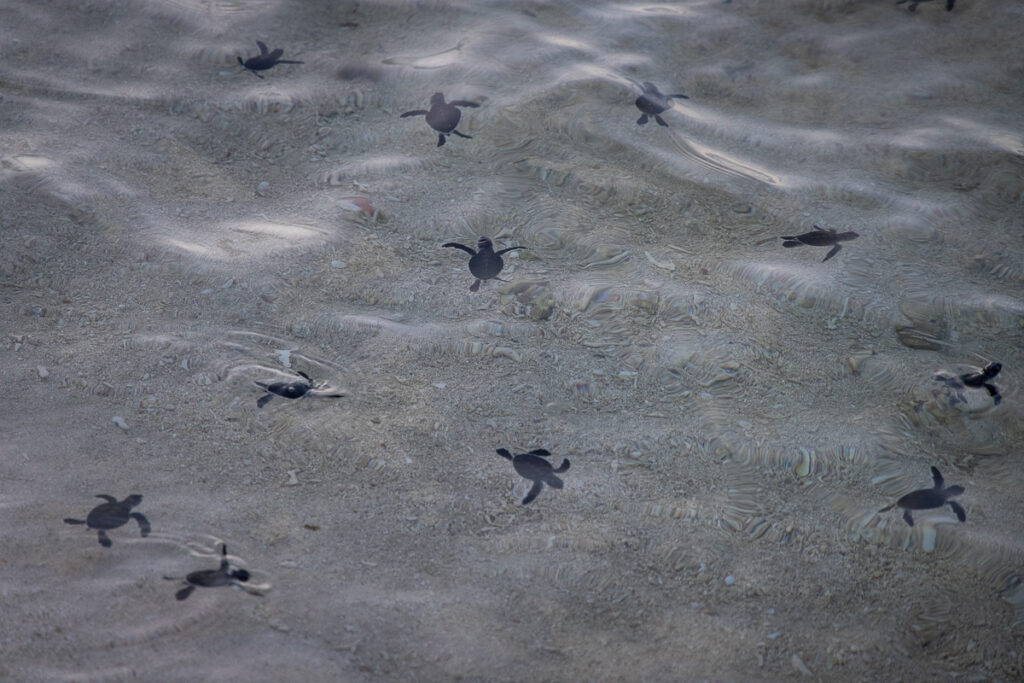
To cap off the day, we enjoyed a superb sunset, adding the perfect ending to our visit to Sangalaki.
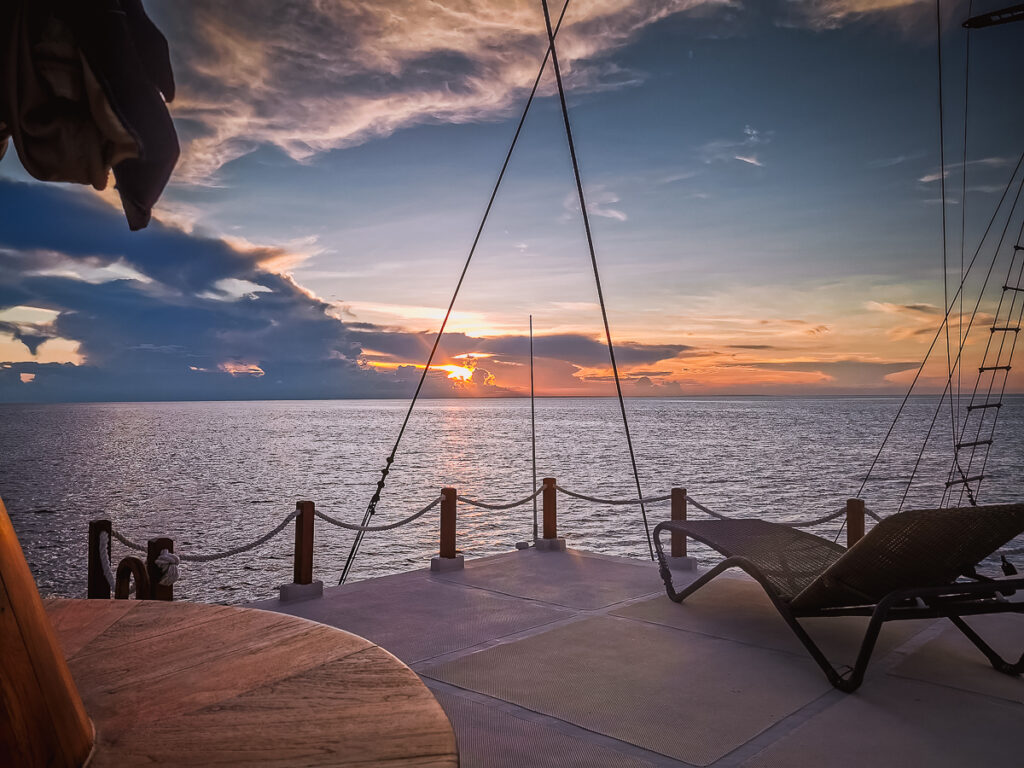
Day 4: Kakaban: exploring deep walls and the jellyfish lake
North corner Kakaban dive site.
This dive site, more rounded than the south corners, features a steep slope around the corner that transitions into a vertical wall. The area near the corner can have strong up currents, so it’s essential to be cautious.
The underwater landscape is adorned with beautiful gorgonians and colorful soft corals, adding vibrancy to the dive. As we explored along the wall, we encountered huge schools of jacks, which was an awe-inspiring sight. Additionally, we spotted a single great barracuda, which added a touch of excitement to the dive.
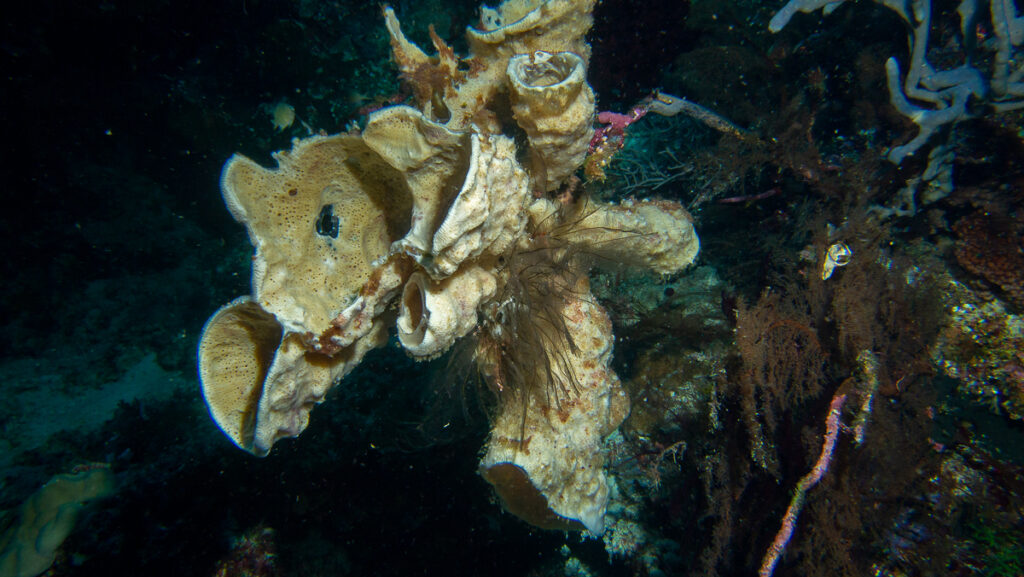
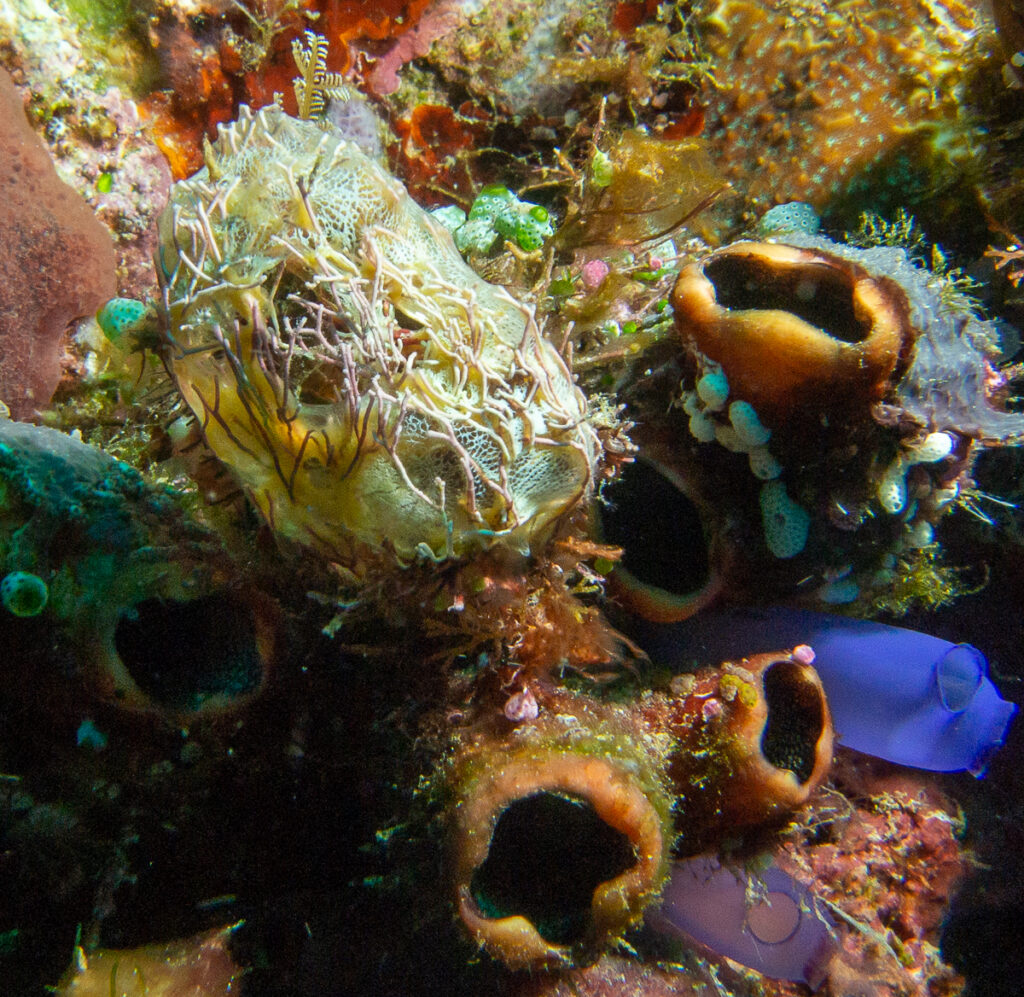
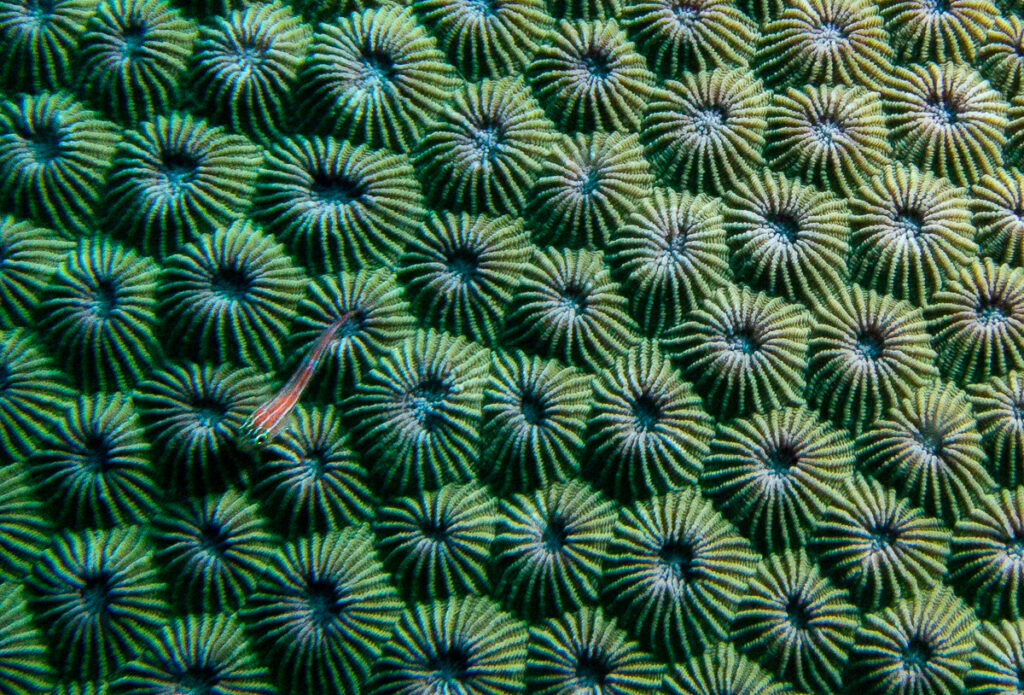
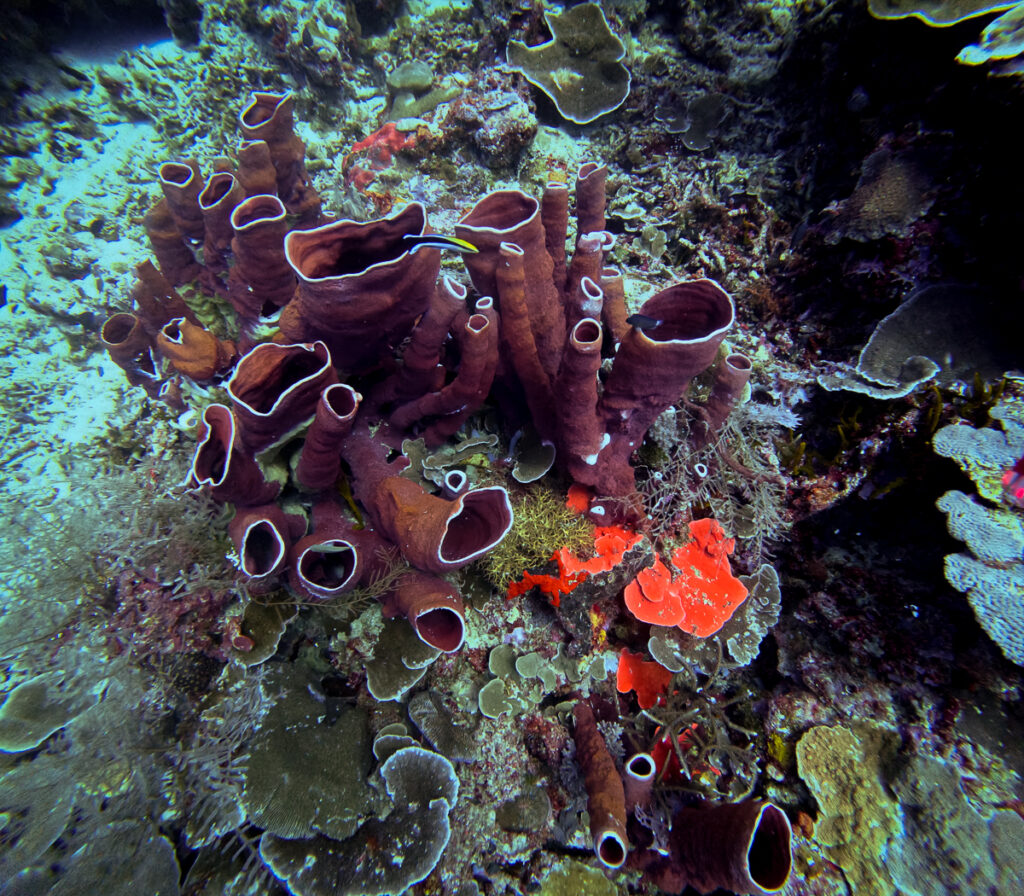
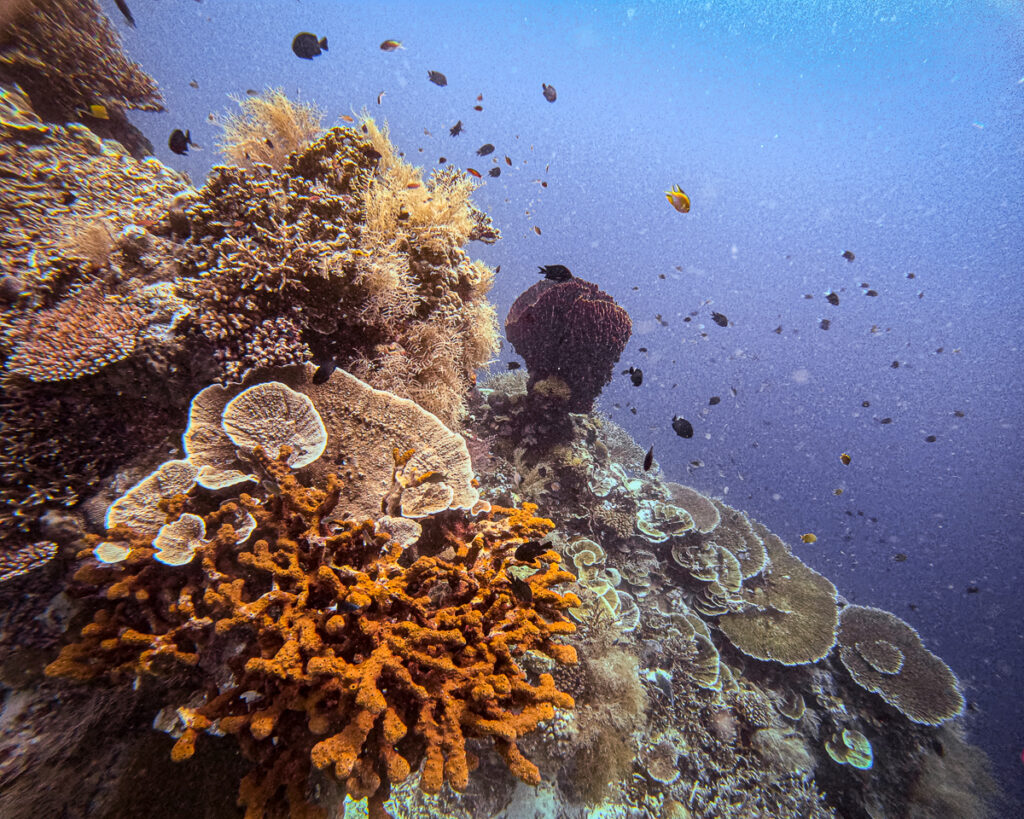
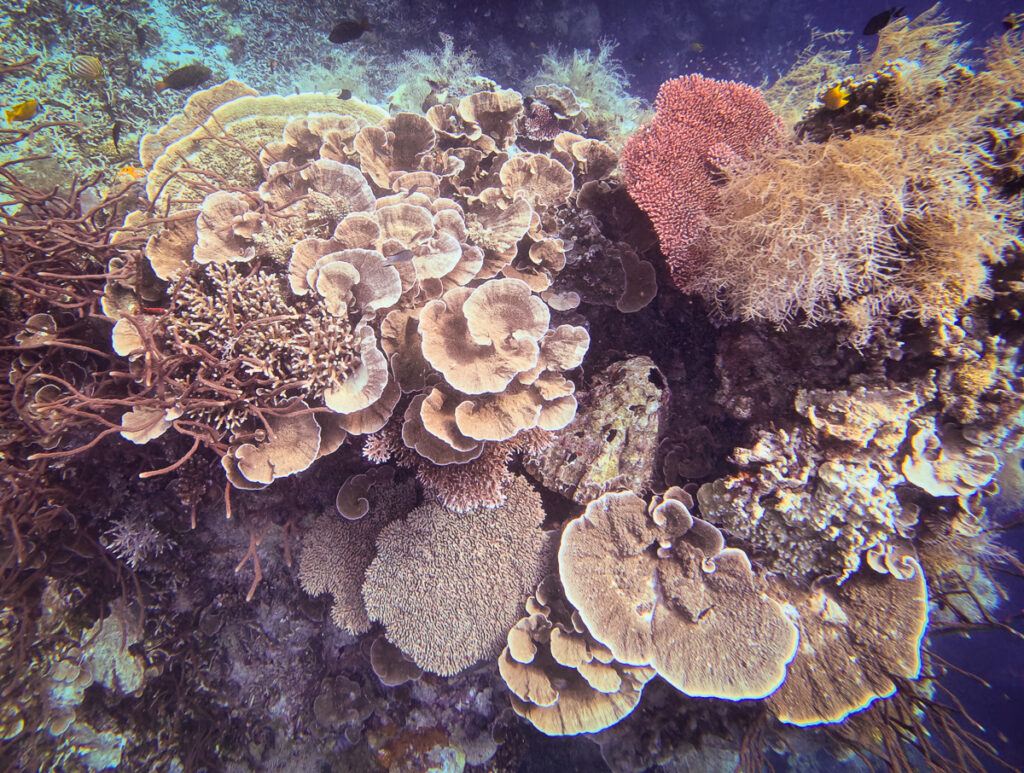
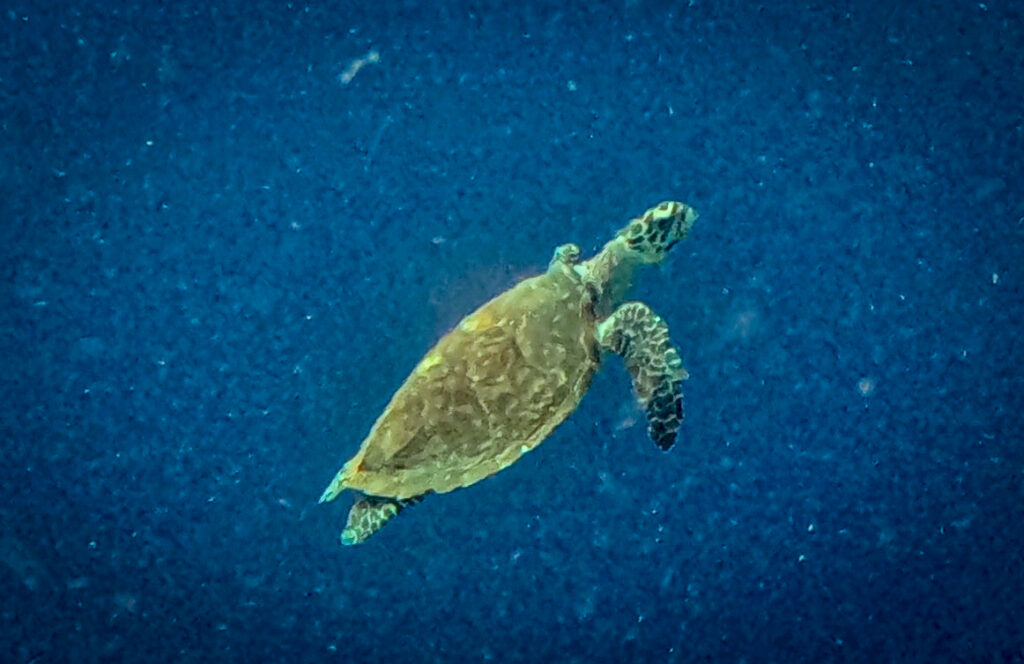
Kakaban Jellyfish Lake
After our first dive, we visited the Kakaban Jellyfish Lake, renowned as the largest jellyfish lake in the world. Unfortunately, the jellyfish were not swimming and were instead gathered at the bottom, likely due to the high water temperature. Despite this, the lake itself was very scenic.
The short walk to the lake was delightful. The sounds of birds added to the serene atmosphere. Although we missed the mesmerizing sight of the jellyfish swimming, the overall experience of visiting such a unique and tranquil place was still enjoyable.
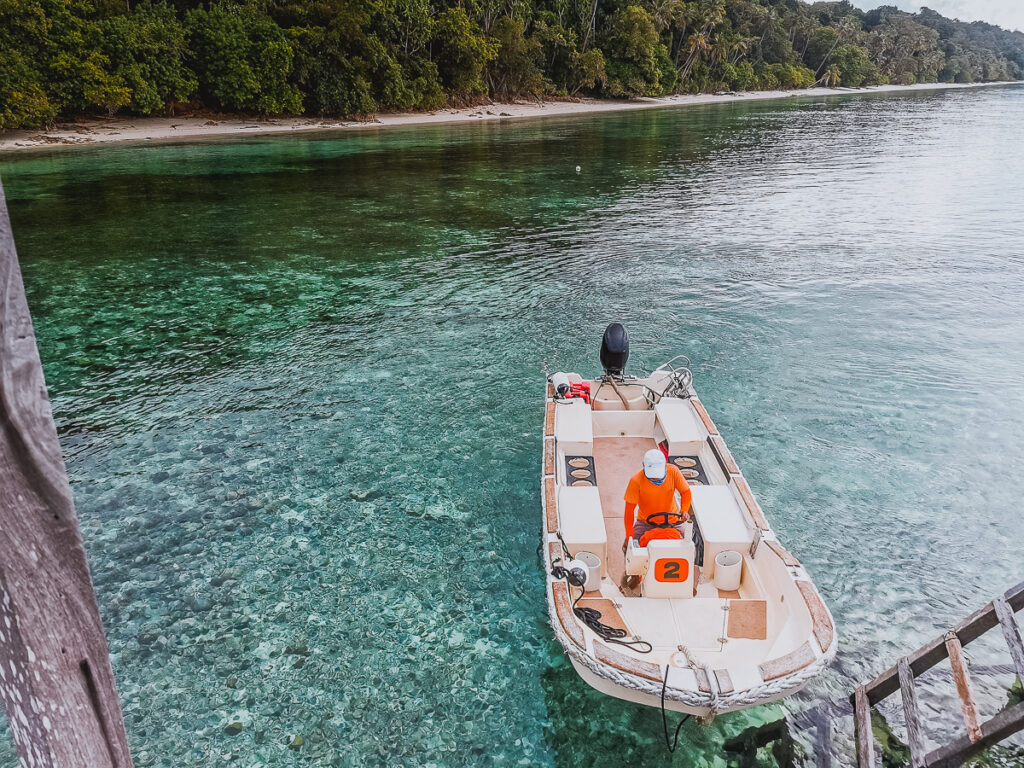
The blue light cave dive site
I had a great time diving at the Blue Light Cave, which is similar to other wall dives around Kakaban. The site has a small cave that starts at 28 meters and goes down to 35 meters, adding an exciting element to the dive.
Below 20 meters, we saw some beautiful gorgonians. Although there weren’t many fish, we did spot a colossal grouper cruising along the wall. I think it might have been the same one we saw the day before at the Kakaban Corner dive site. We also saw a turtle, which added a nice touch to the dive.
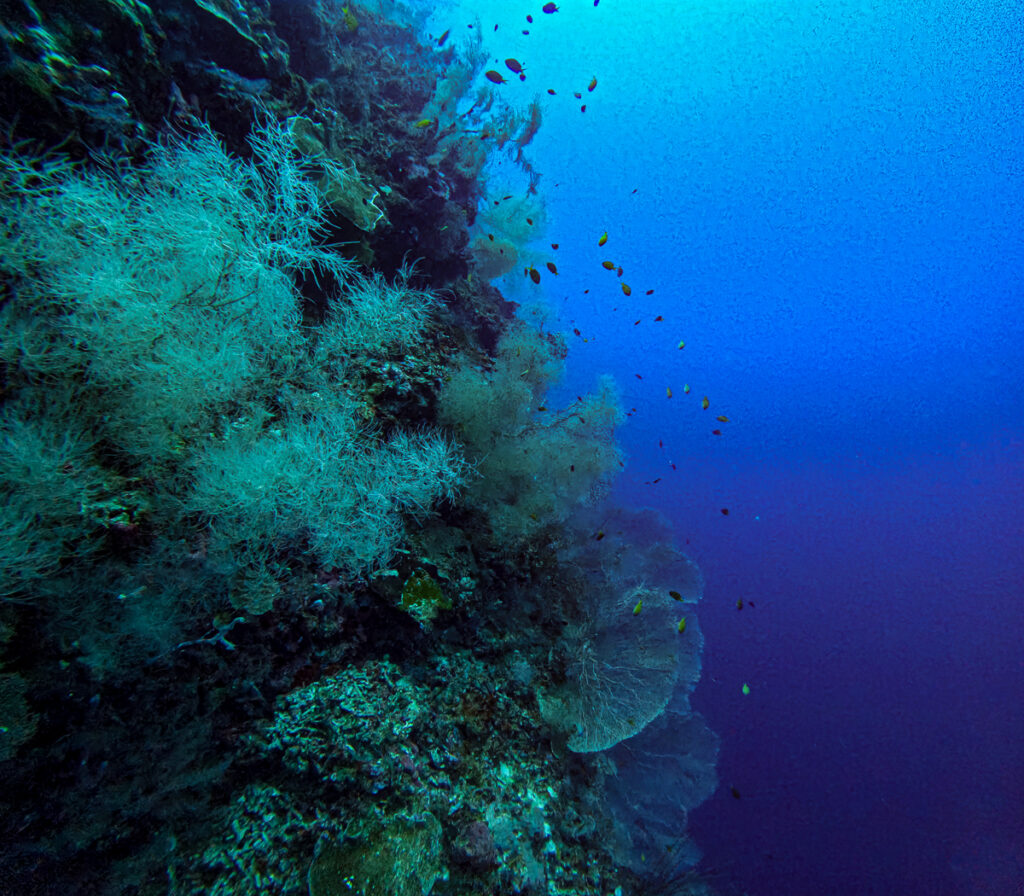
Gorgonia Wall dive site
During our last dive of the day, we explored Gorgonia Wall, which is located on the right side of Barracuda Point. Although we didn’t encounter many fish, the gorgonians, tunicates and sponges created a stunning backdrop for the dive.
We found a few nudibranchs and shrimps on the wall. Surprisingly, we witnessed a trumpetfish interacting with a boxfish, rubbing against it. This behavior intrigued us, and we were unsure of what they were doing.
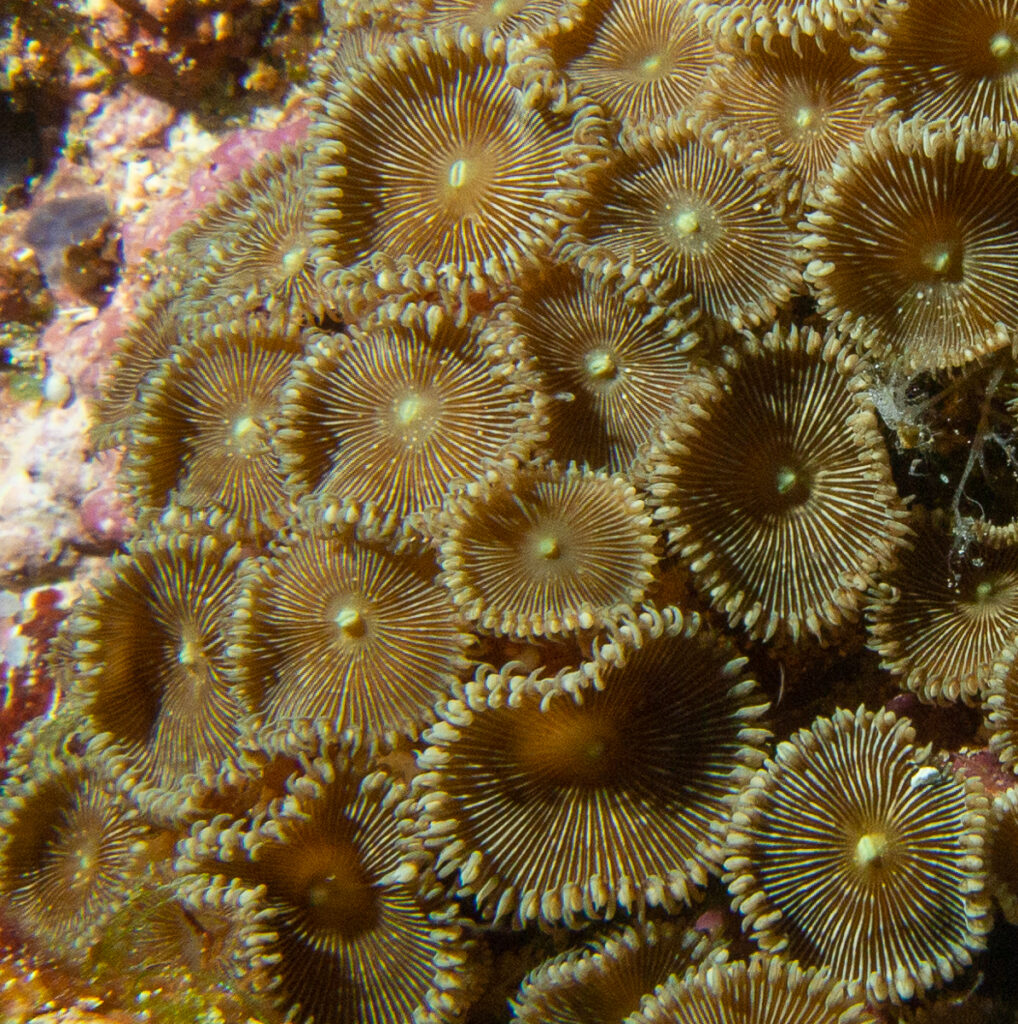
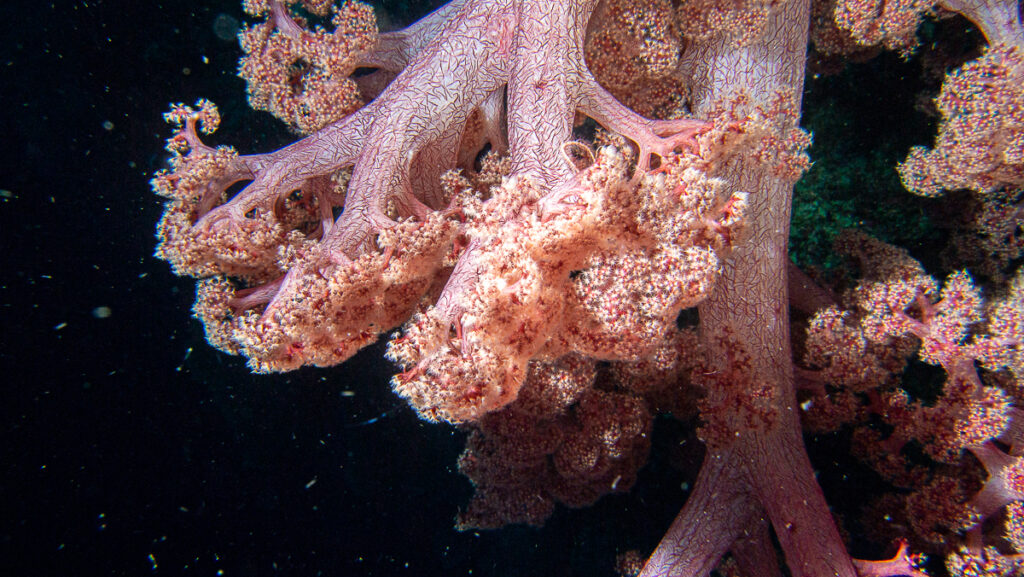
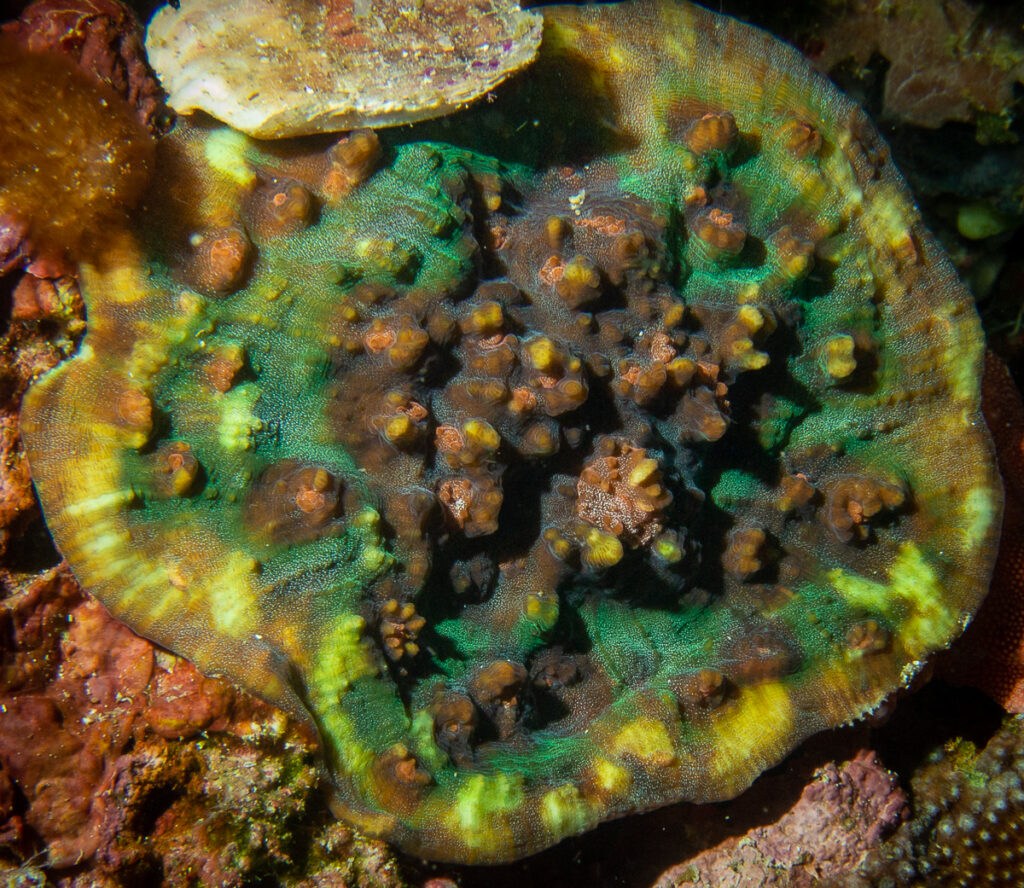
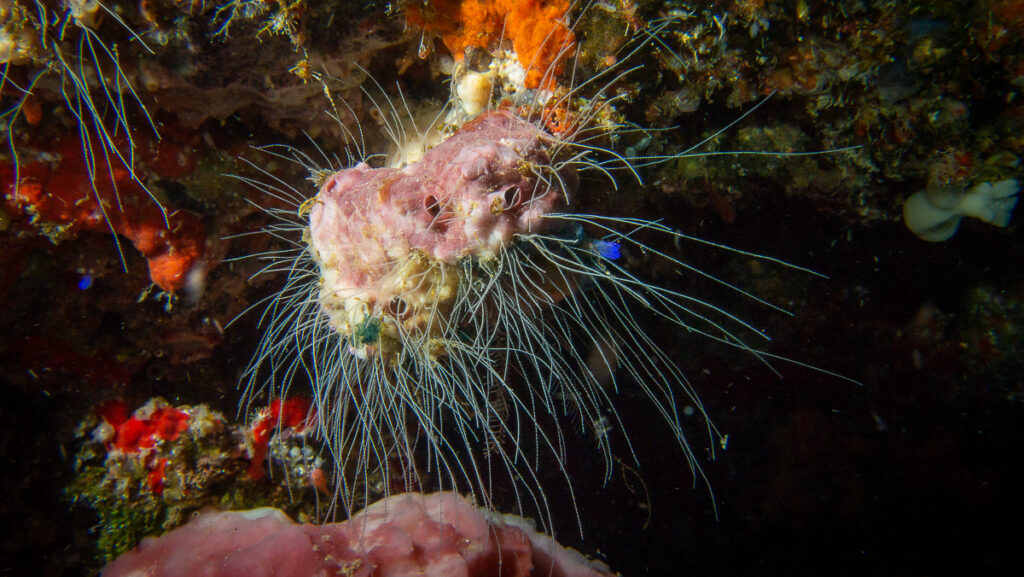
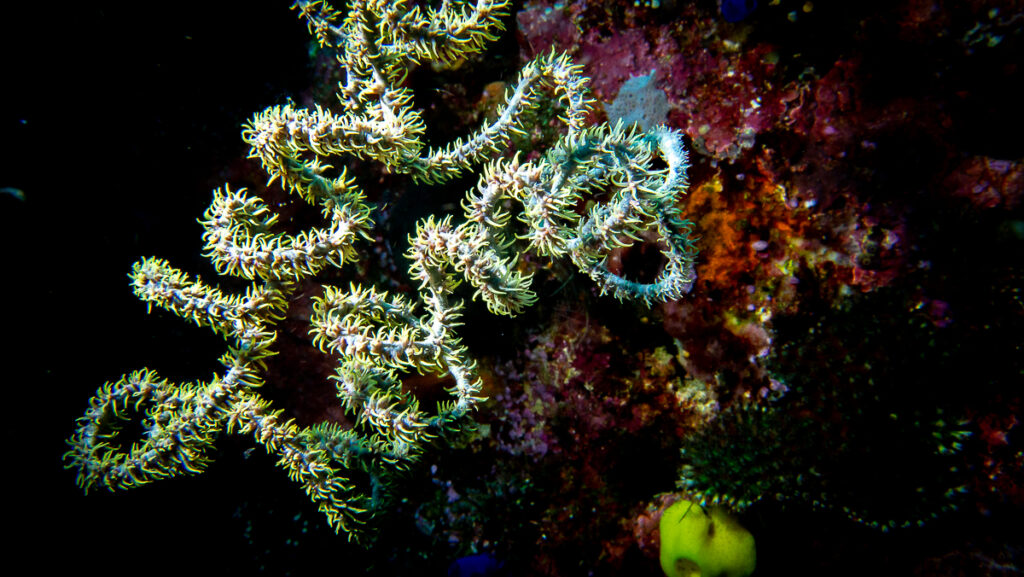
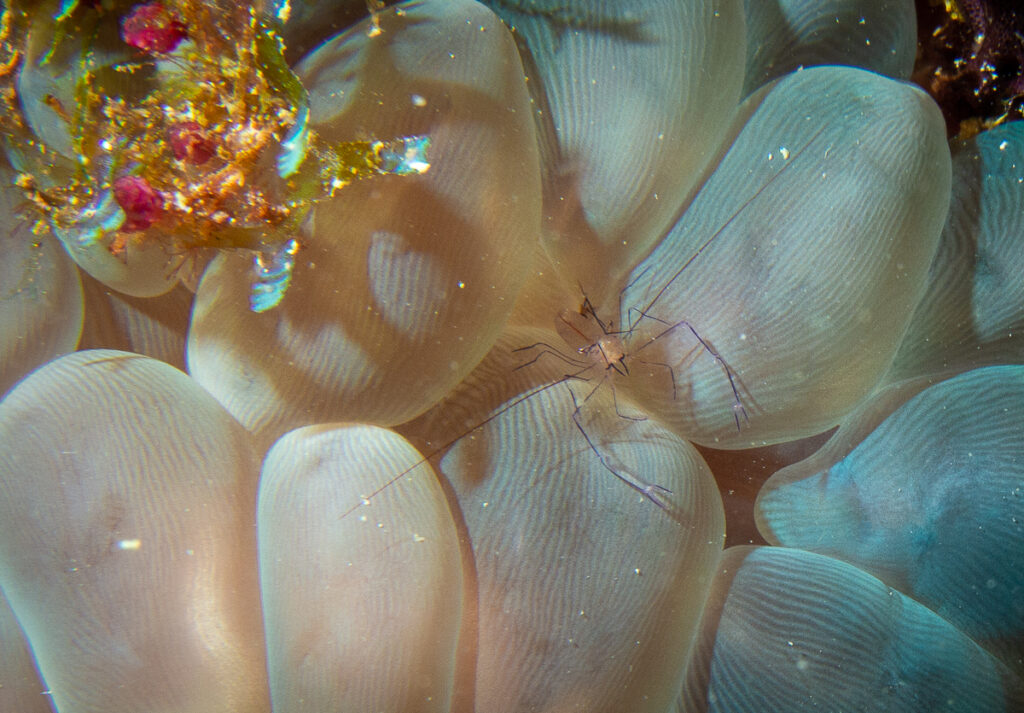
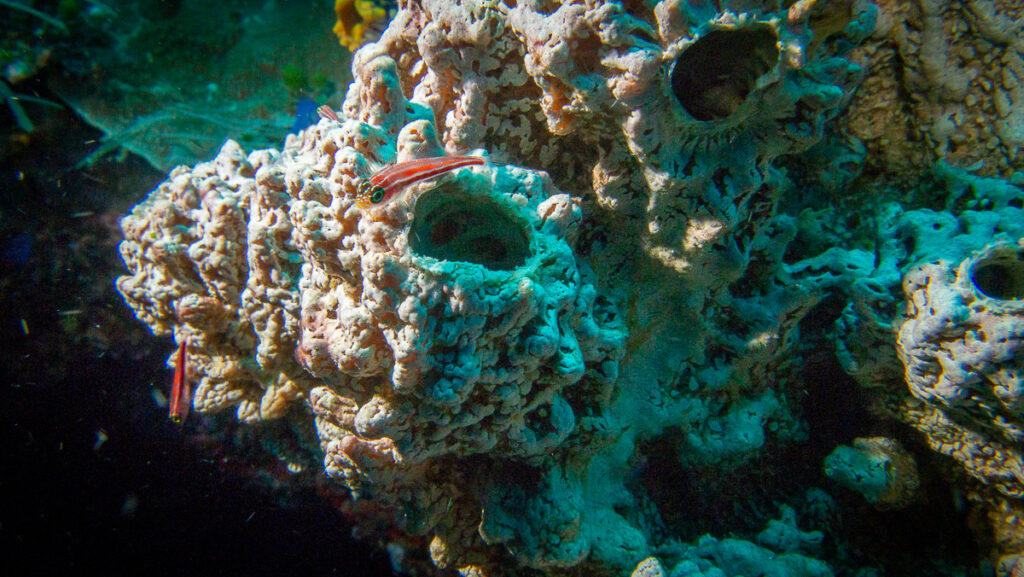
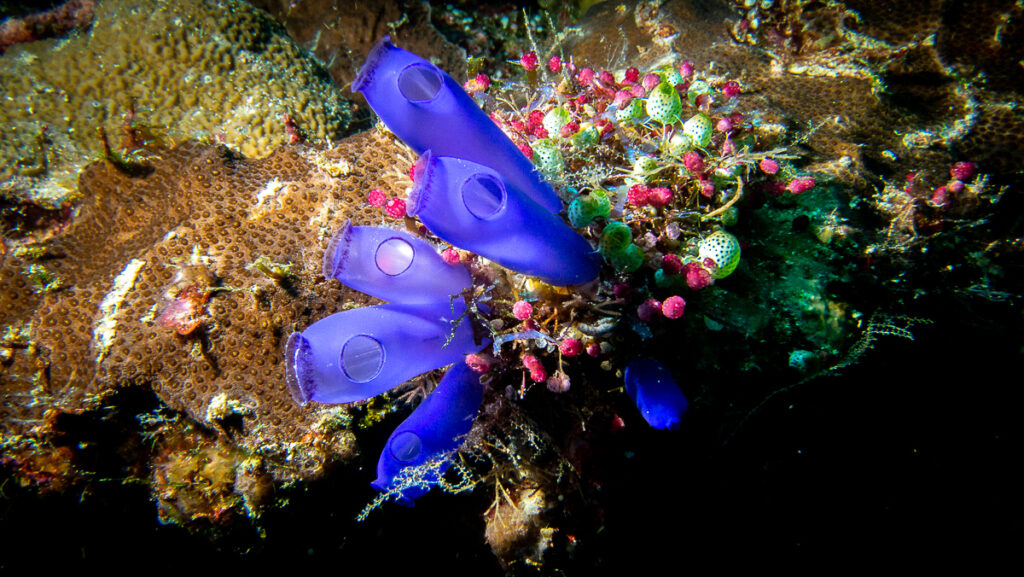
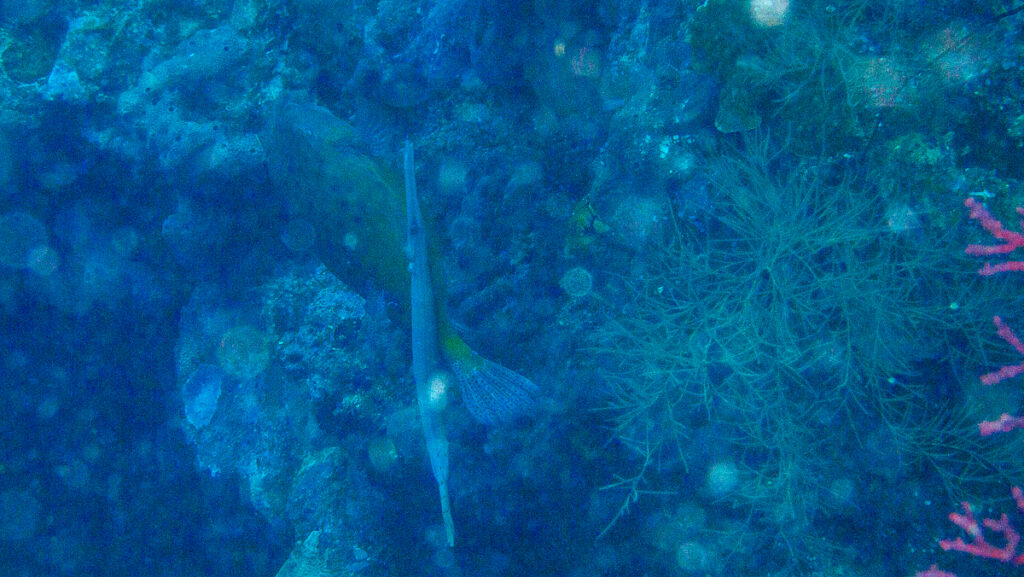
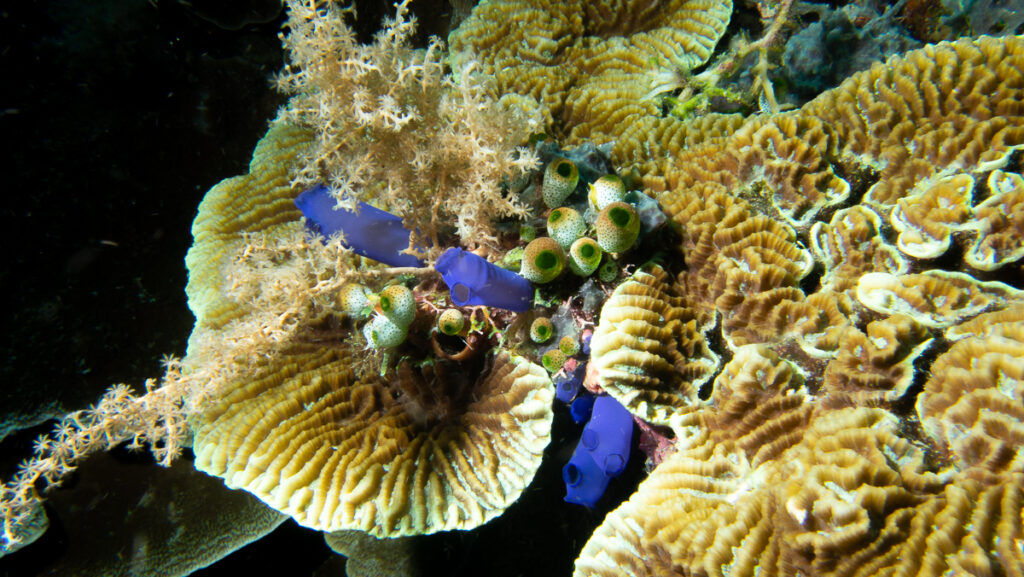
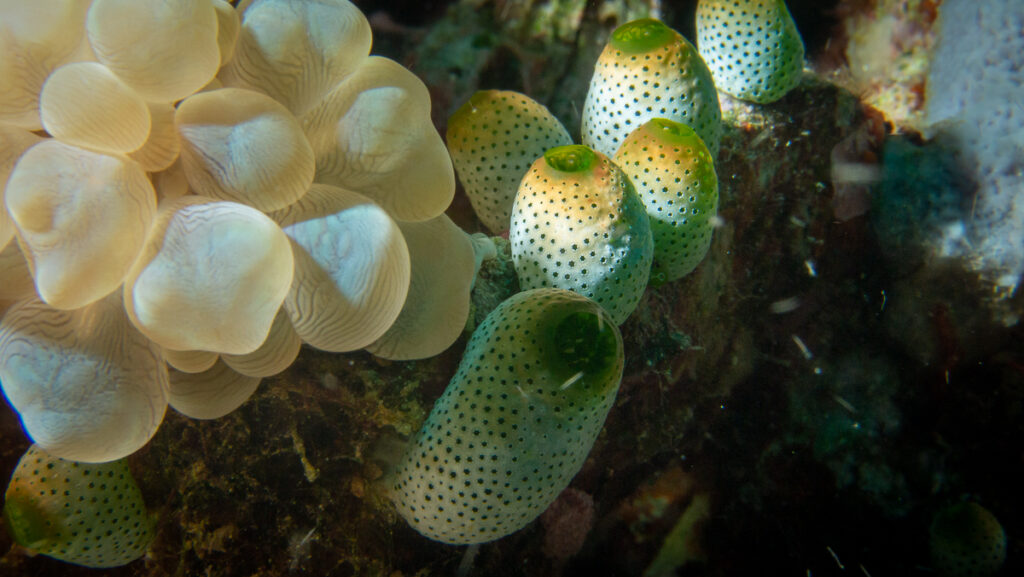
day 5: Deep dive, schooling jacks and turtles in Maratua
We only had a short navigation to reach Maratua.
Small Fish Country dive site
Diving at Small Fish Country, located on the northeastern corner, was an exciting experience. The site features a wall with a shallow reef until about 15 meters, which, unfortunately, has been quite damaged due to dynamite fishing. However, below 15 meters, the coral is mostly in good condition, and ridges along the wall are covered in vibrant corals.
Throughout the dive, we saw many butterflyfish and white-tailed surgeonfish. The site is also known for its abundance of turtles; we encountered quite a few during our dive. Towards the end, we spotted a school of jacks that were too deep to get a closer look. We also saw a few sharks and wahoo hanging out with them, adding some excitement to the dive.
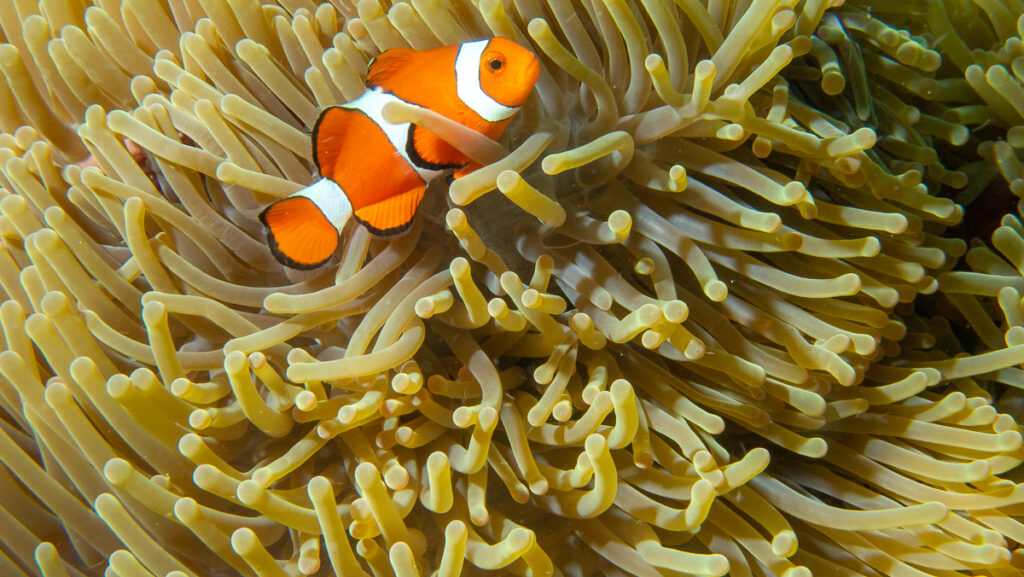
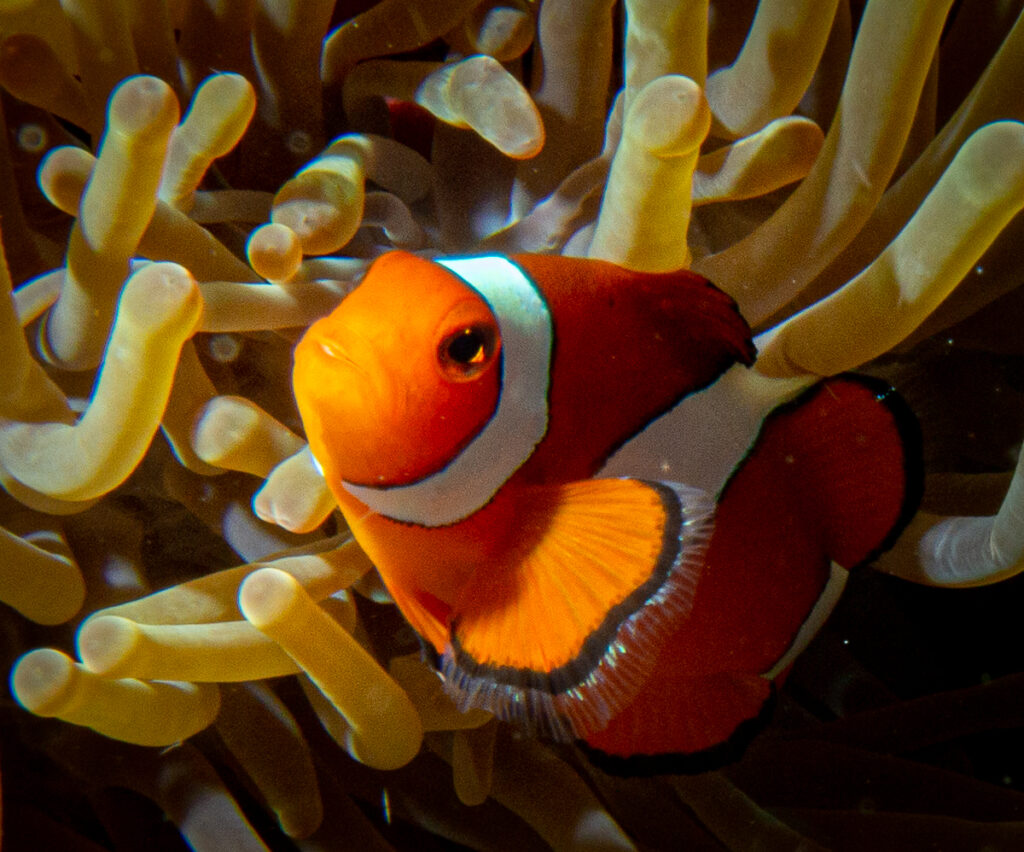
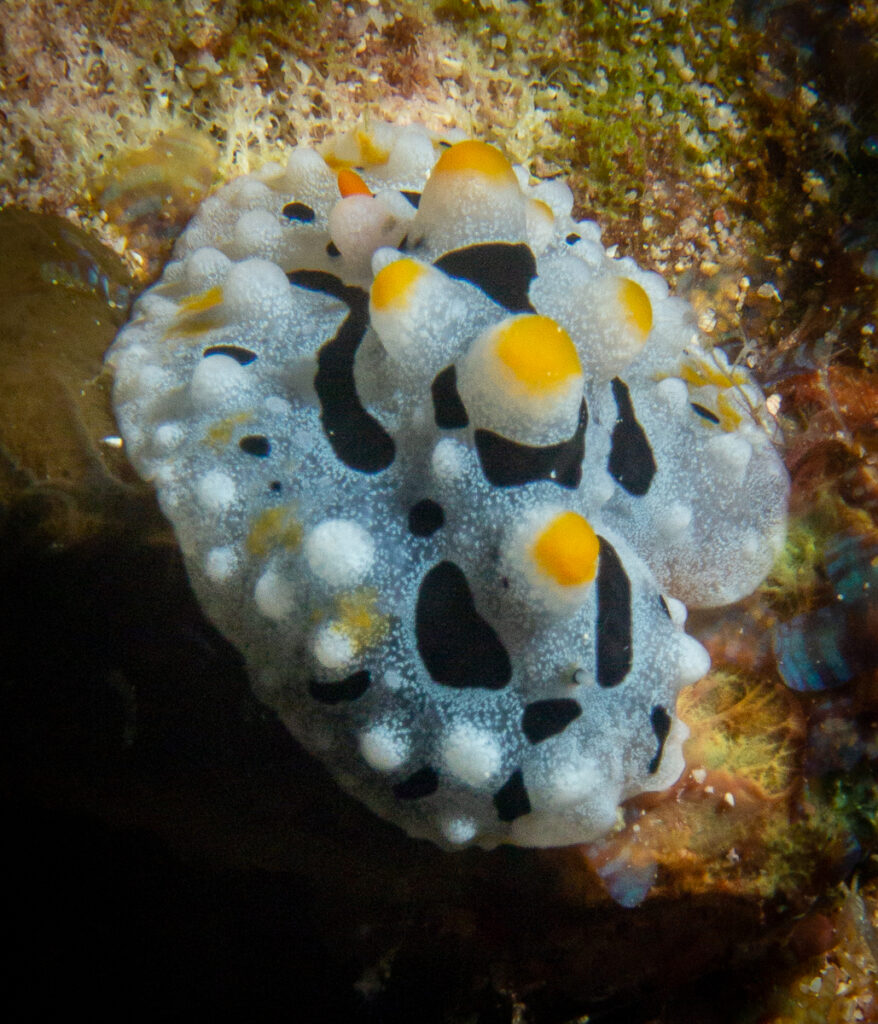
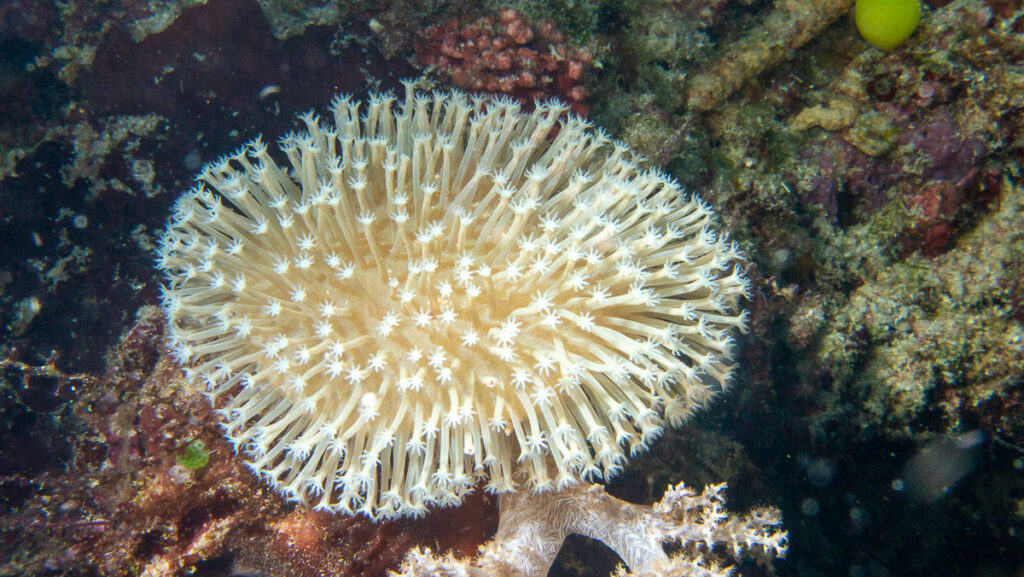
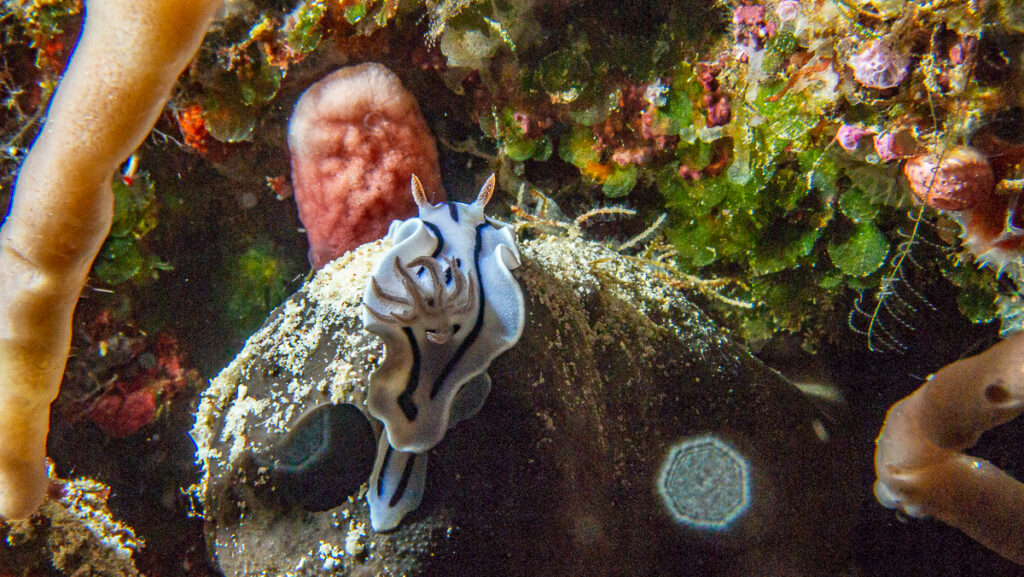
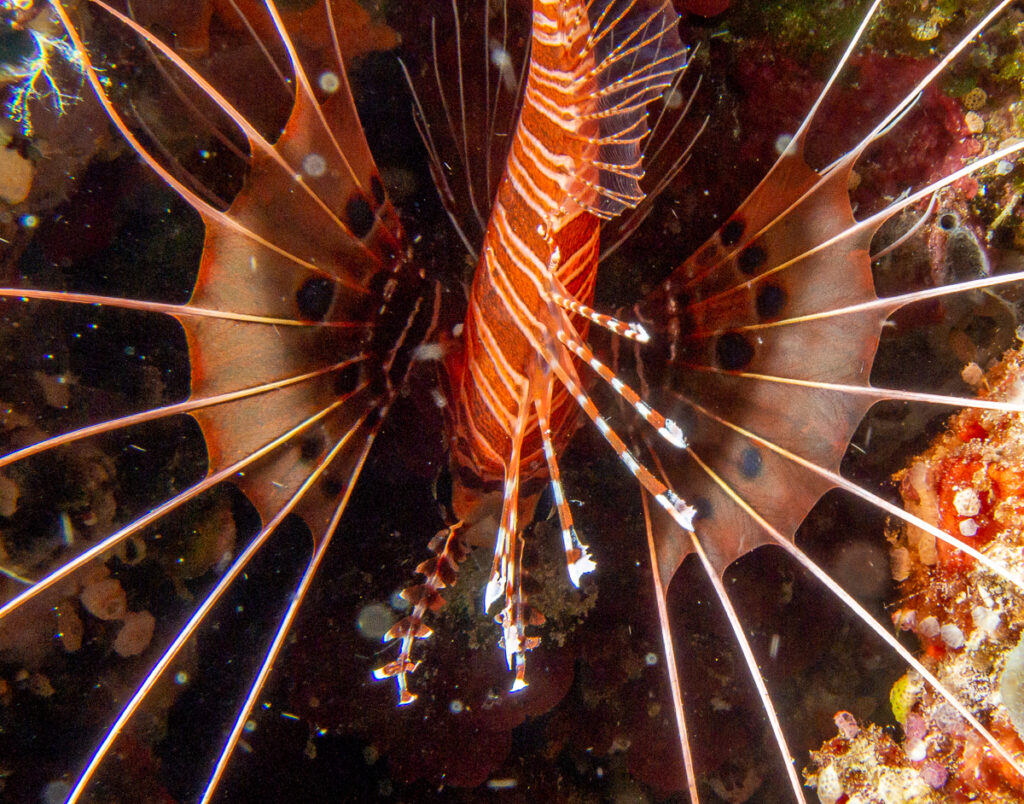
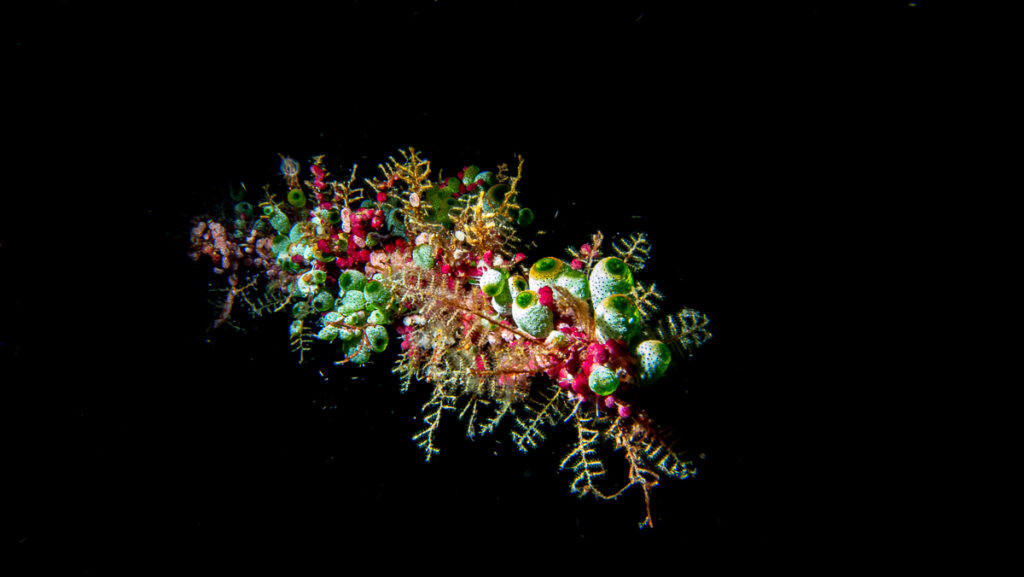
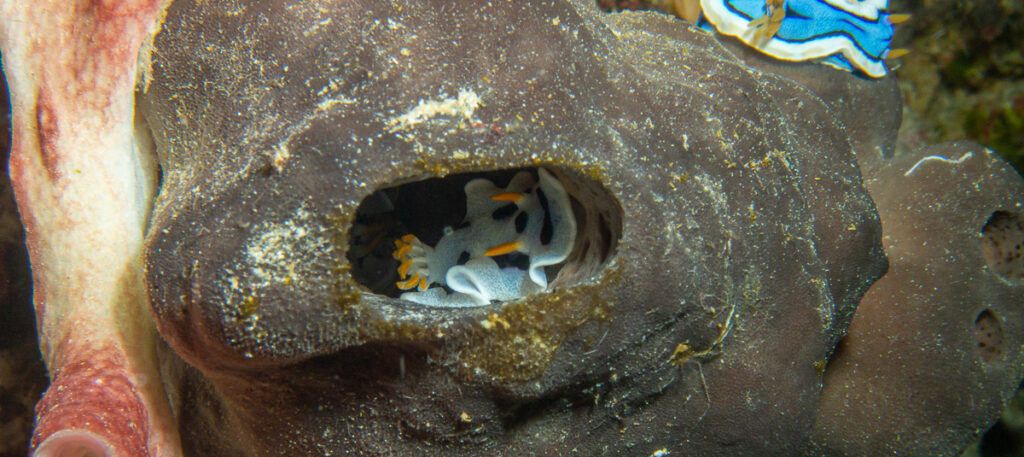
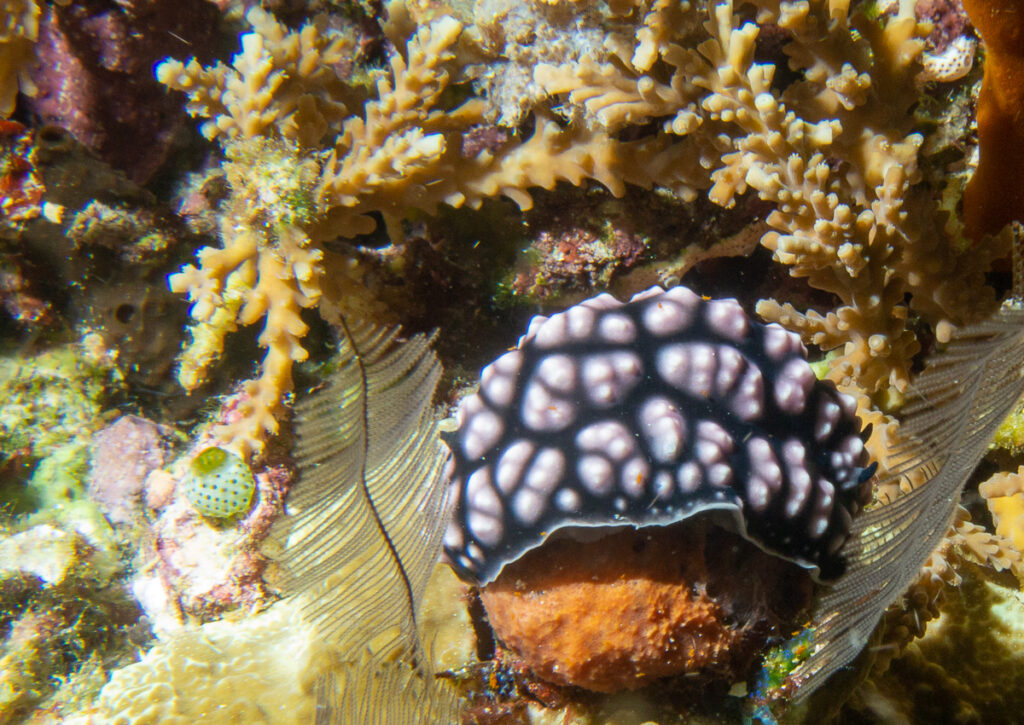
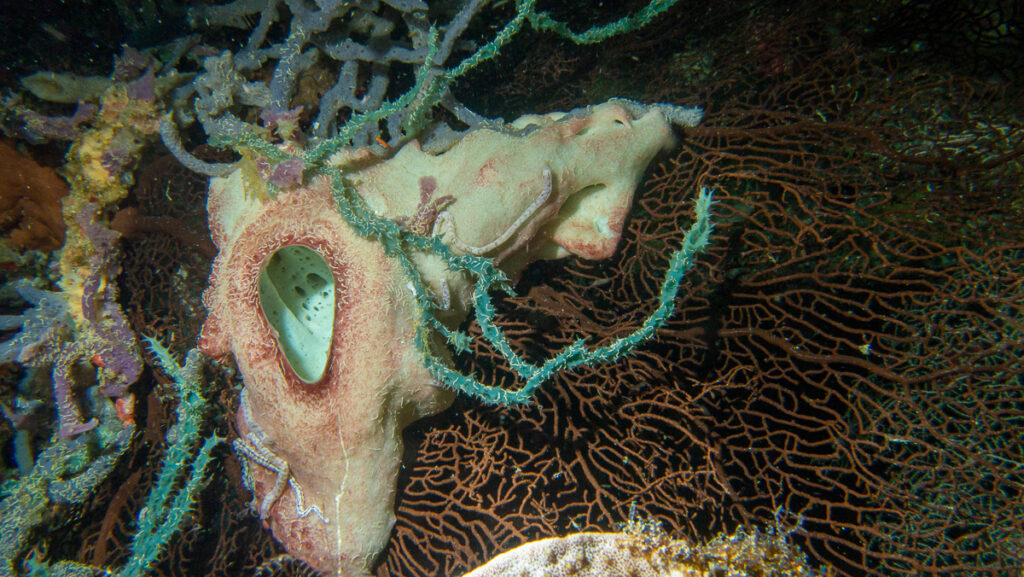
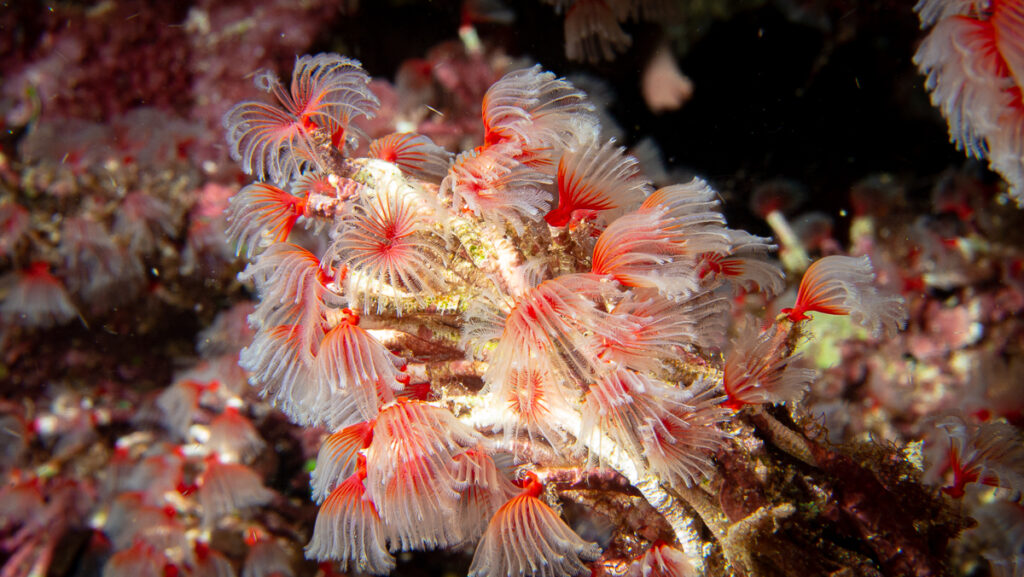
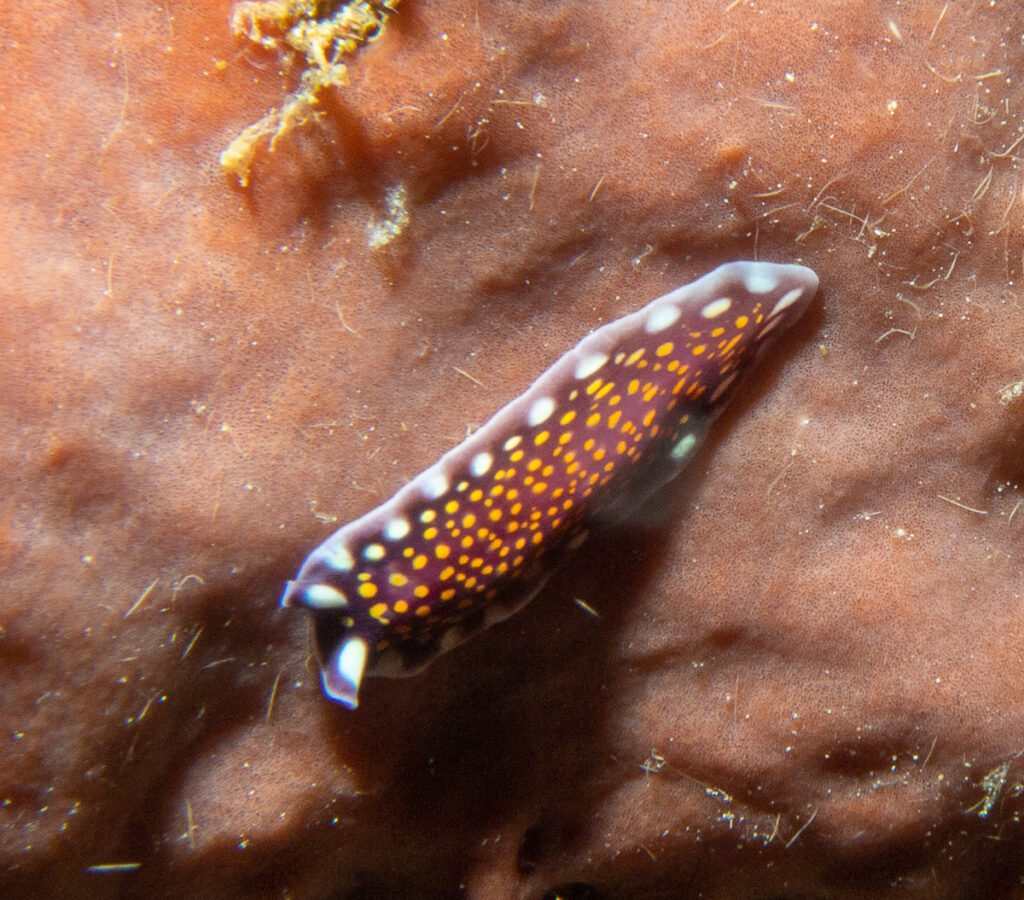
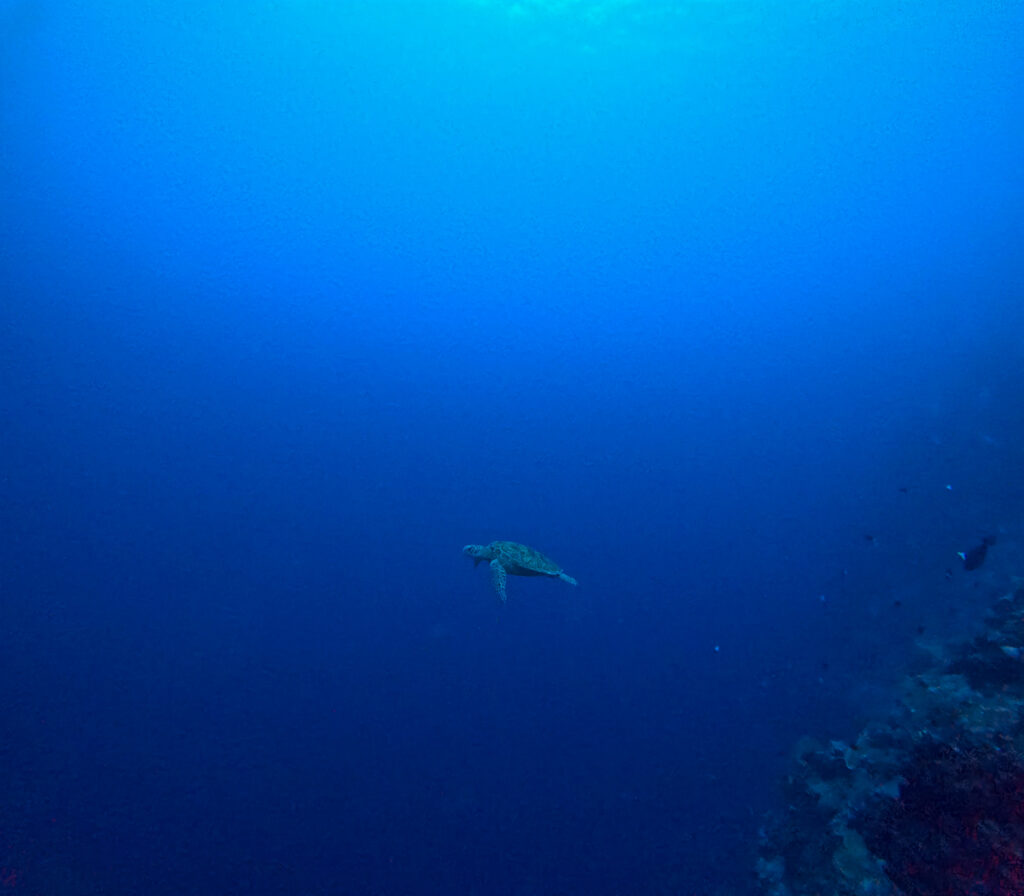
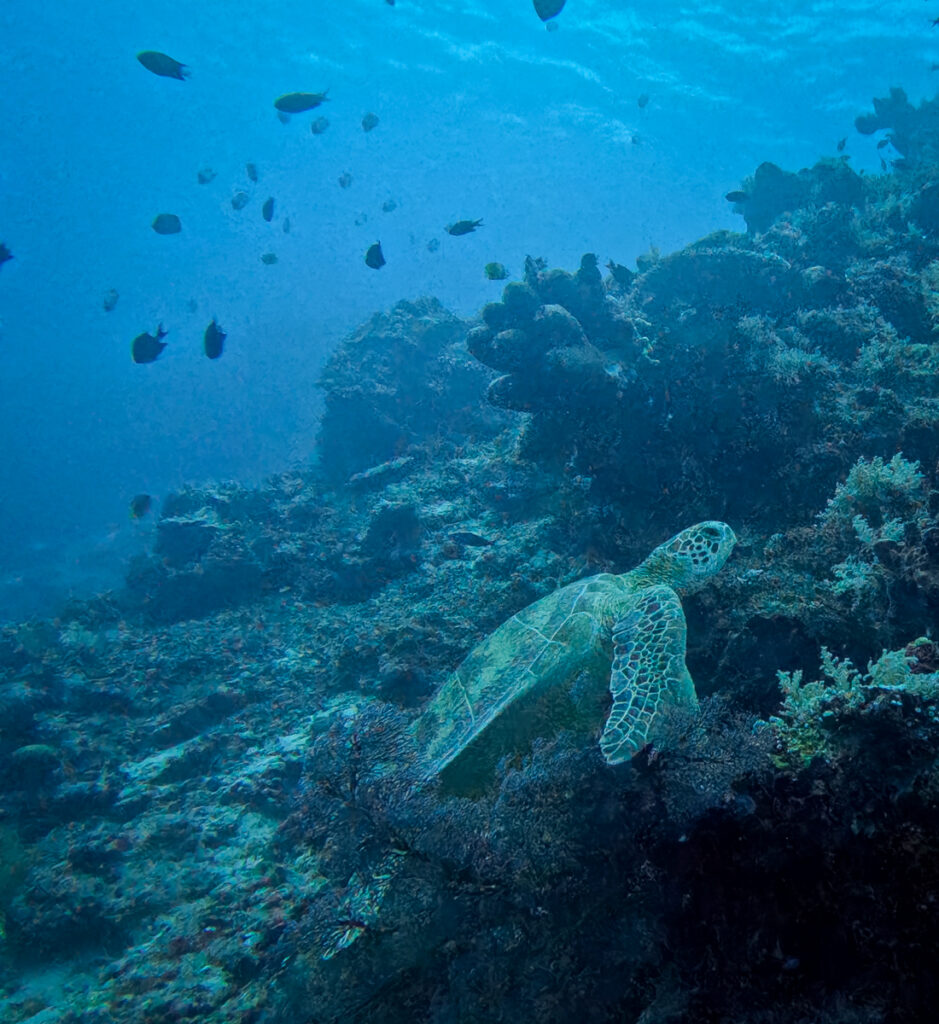
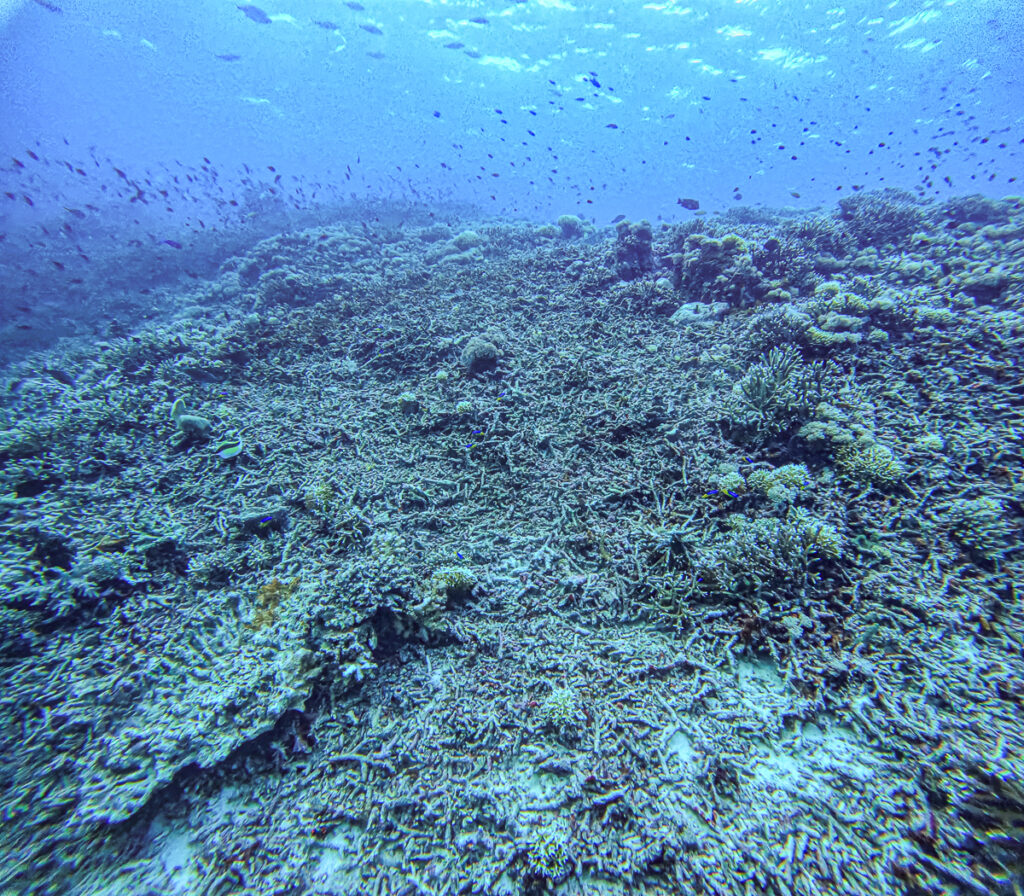
Turtle Parade dive site
Our second dive at Turtle Parade was similar to the first, as it was another wall dive along the island. This site is known for its numerous green turtles. With the rising tide, the visibility was better, making for a more pleasant dive.
Despite its name, this dive was a bit disappointing. It was raining, and the top reef, like at Small Fish Country, had been affected by dynamite fishing. There were very few fish along the reef; ironically, we didn’t see a single turtle. However, we did find a few nudibranchs, which added a bit of interest to an otherwise quiet dive.
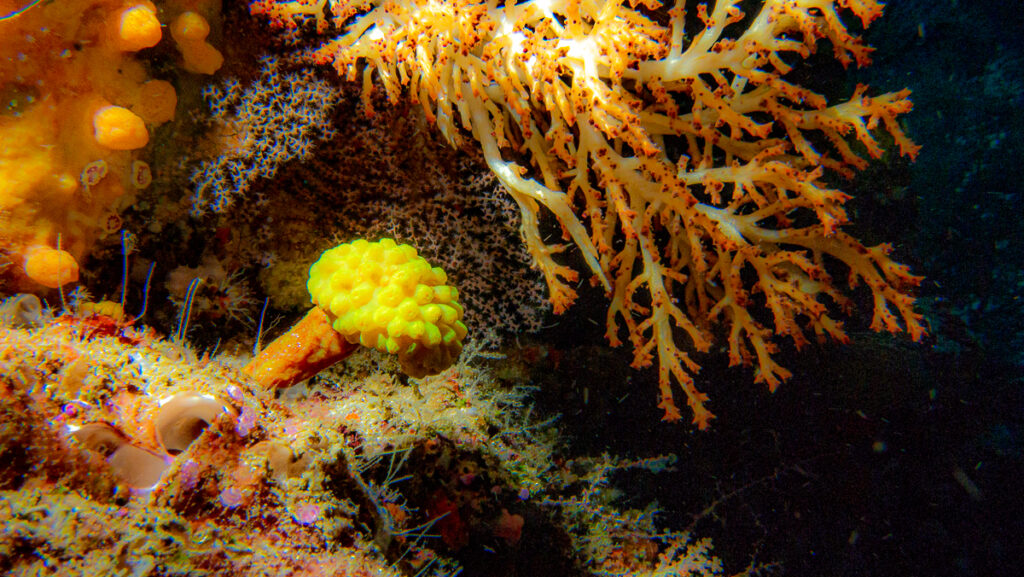
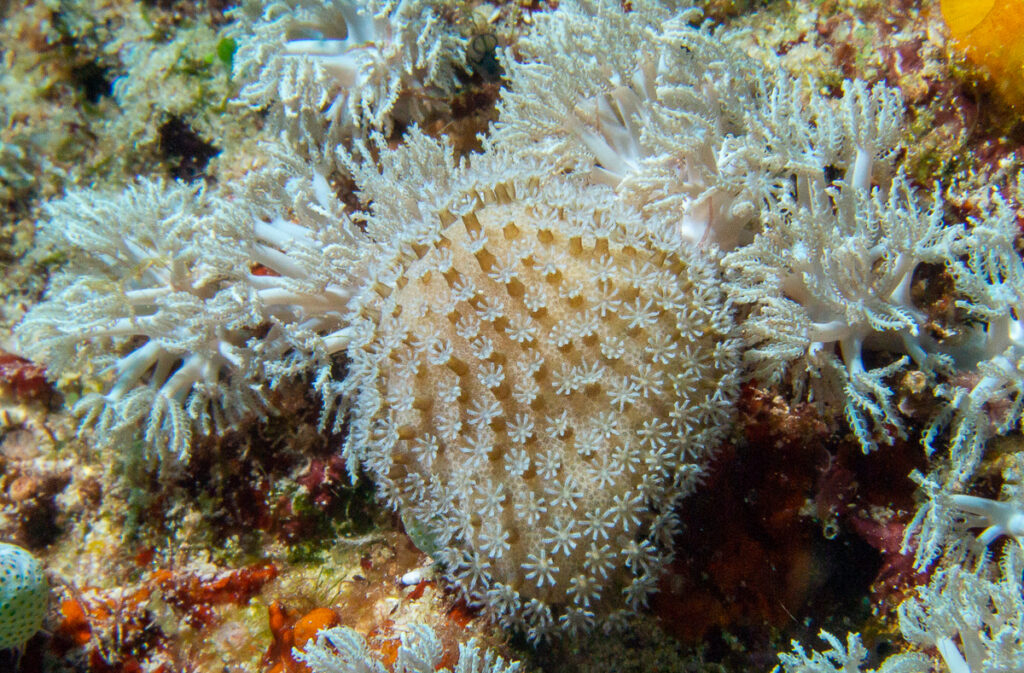
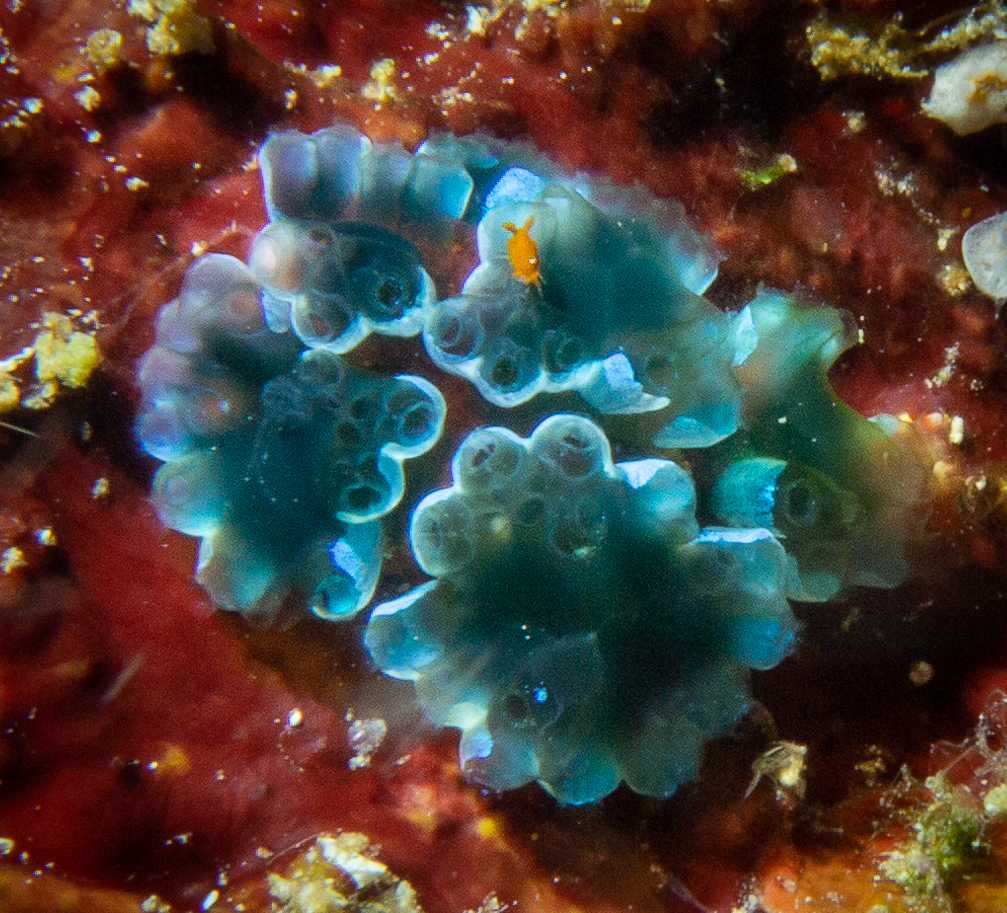
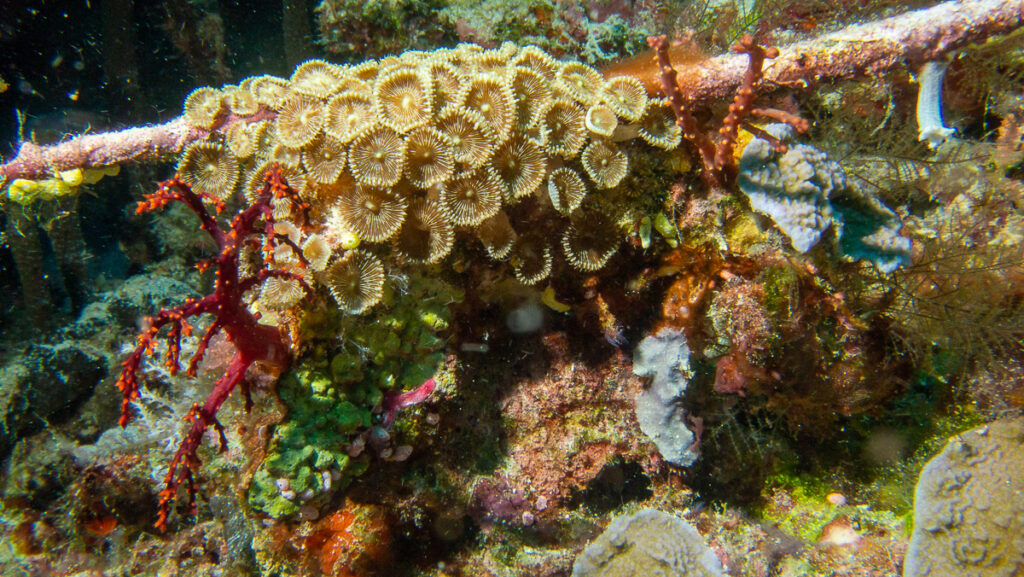
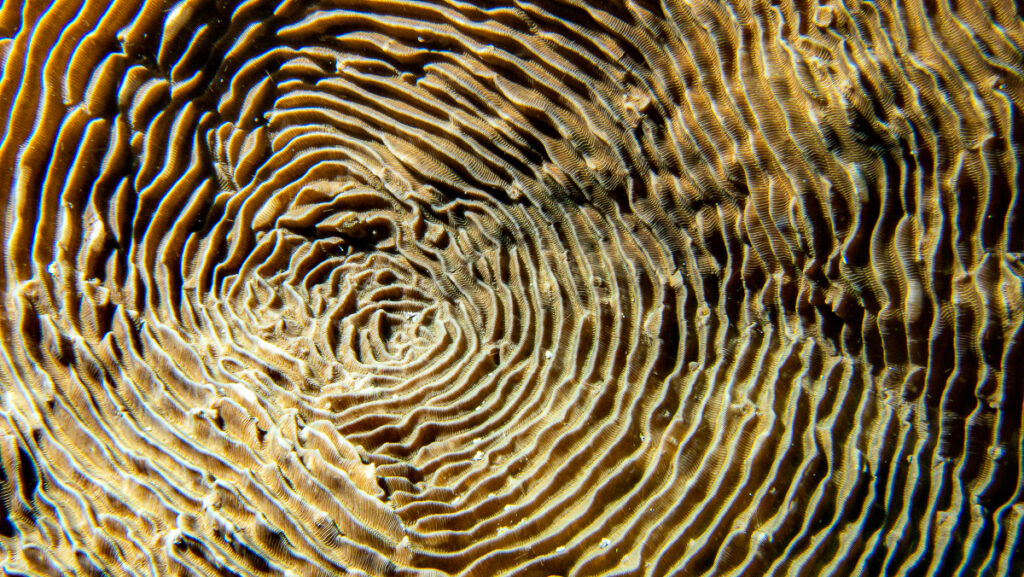
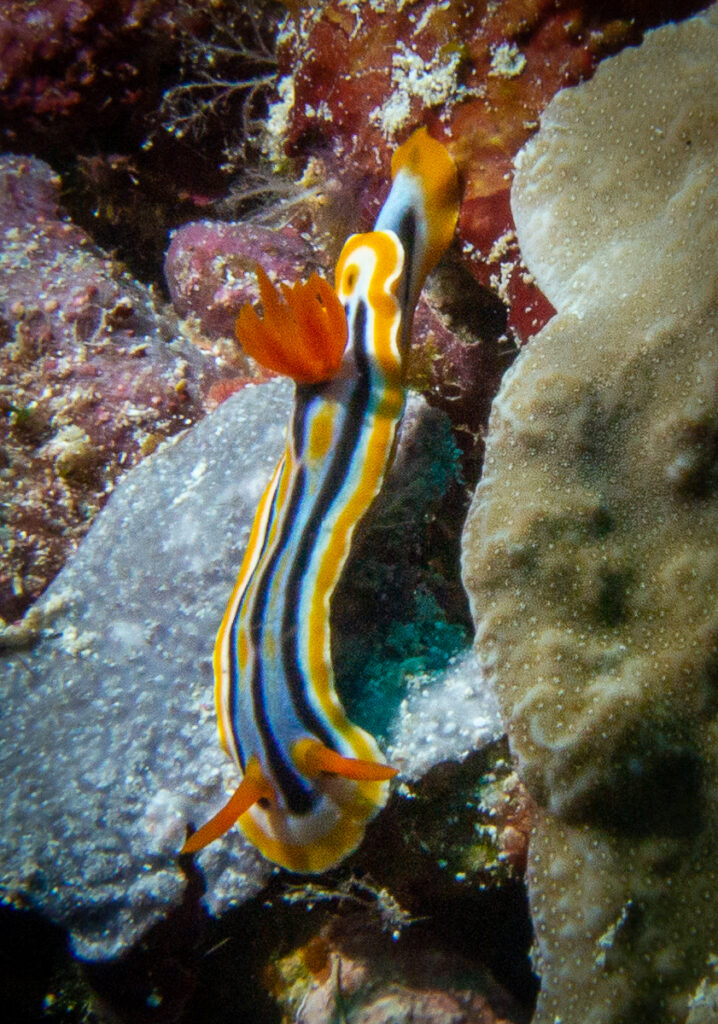
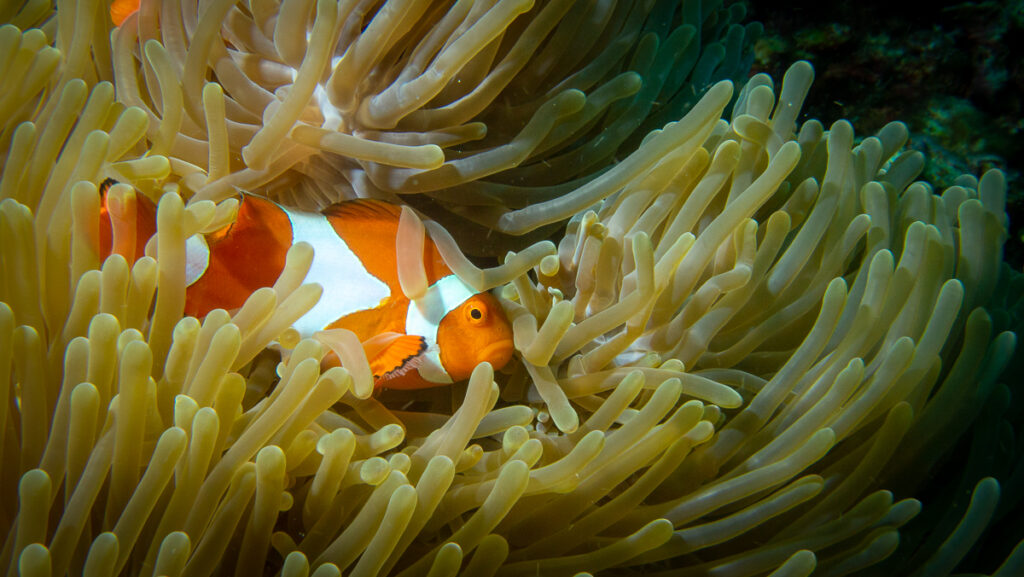
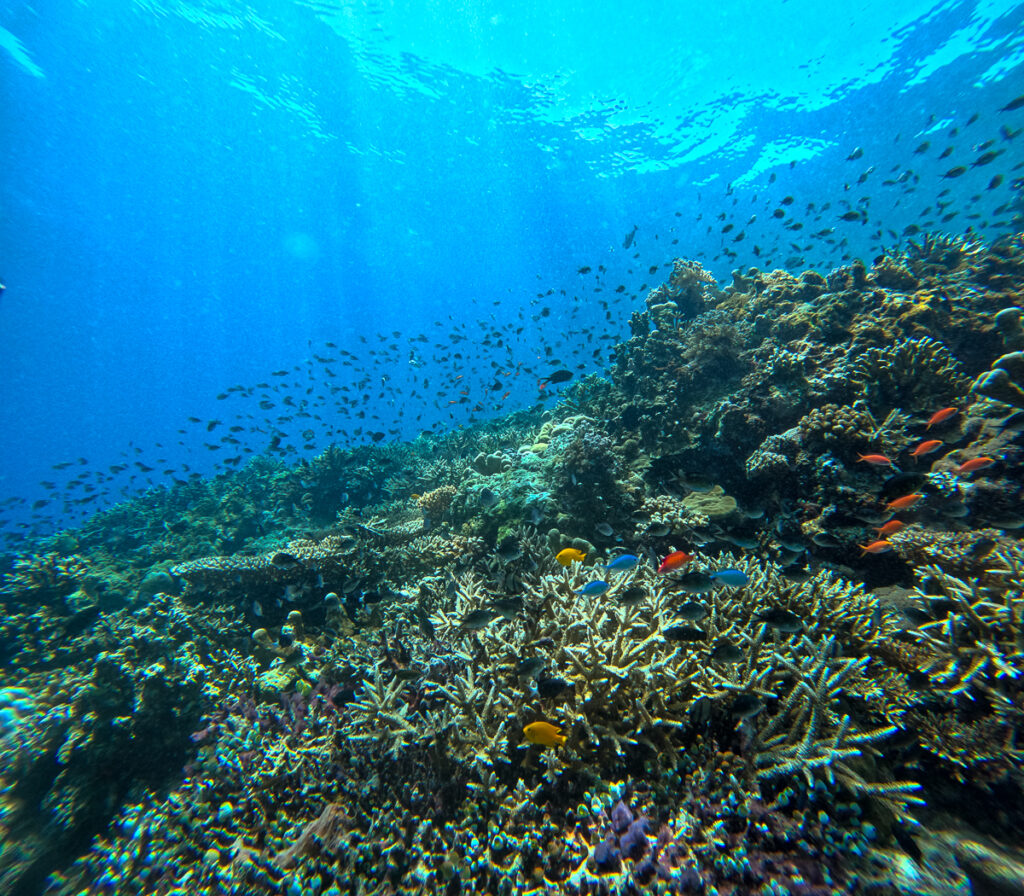
Maratua Channel dive site
Our third dive of the day took place at Maratua Channel, the most famous dive site in Maratua. It’s easy to see why it’s so renowned. The wall at the entrance of the channel starts at 20 meters. It’s important to stay below that depth to avoid getting caught in the strong currents of the channel.
The site is famous for its massive school of barracudas. There can be thousands of them. Unfortunately, we weren’t lucky enough to see them up close during our dive. The best chance to see a lot of action on this dive site is to dive when the tide is incoming. The tide was already outgoing when we dove, which didn’t help with the marine life.
We only caught glimpses of the barracuda’s shadows far below in the depths as the wall plunged over 100 meters. However, a massive school of jacks treated us to a mesmerizing show. Thousands of them swayed and danced before us, creating a magical sight.
As we drifted along the wall, we encountered many schools of fusiliers, unicorn fish, and snappers. The shallow reef above the wall was stunning, with lots of hard corals of various shapes, teeming with life. Fortunately, this area had not been affected by dynamite fishing. We also saw a school of young bumphead parrotfish, which was a delightful end to the dive. The water was unusually warm at 31 degrees, so I hope it won’t cause a new coral bleaching.
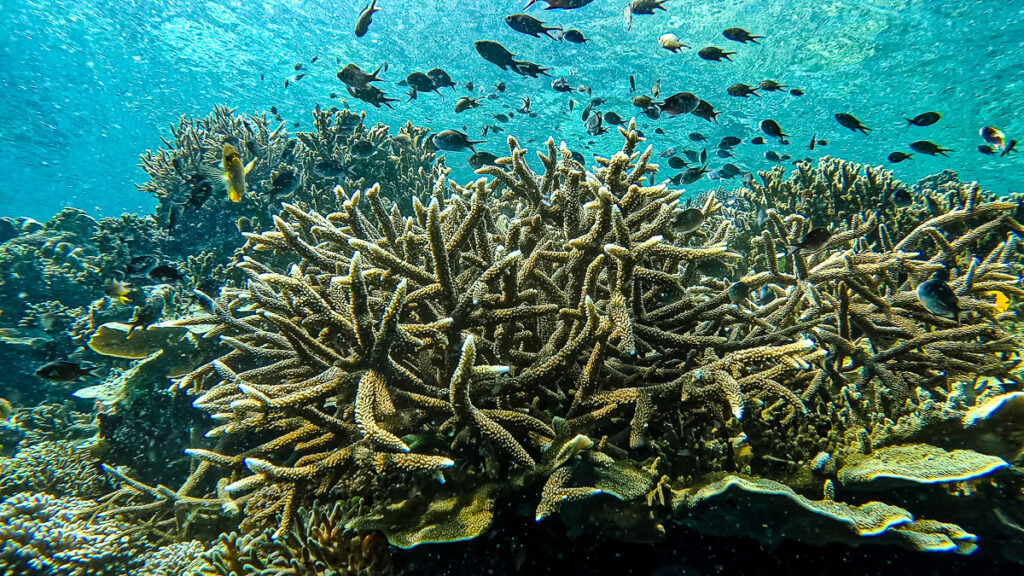
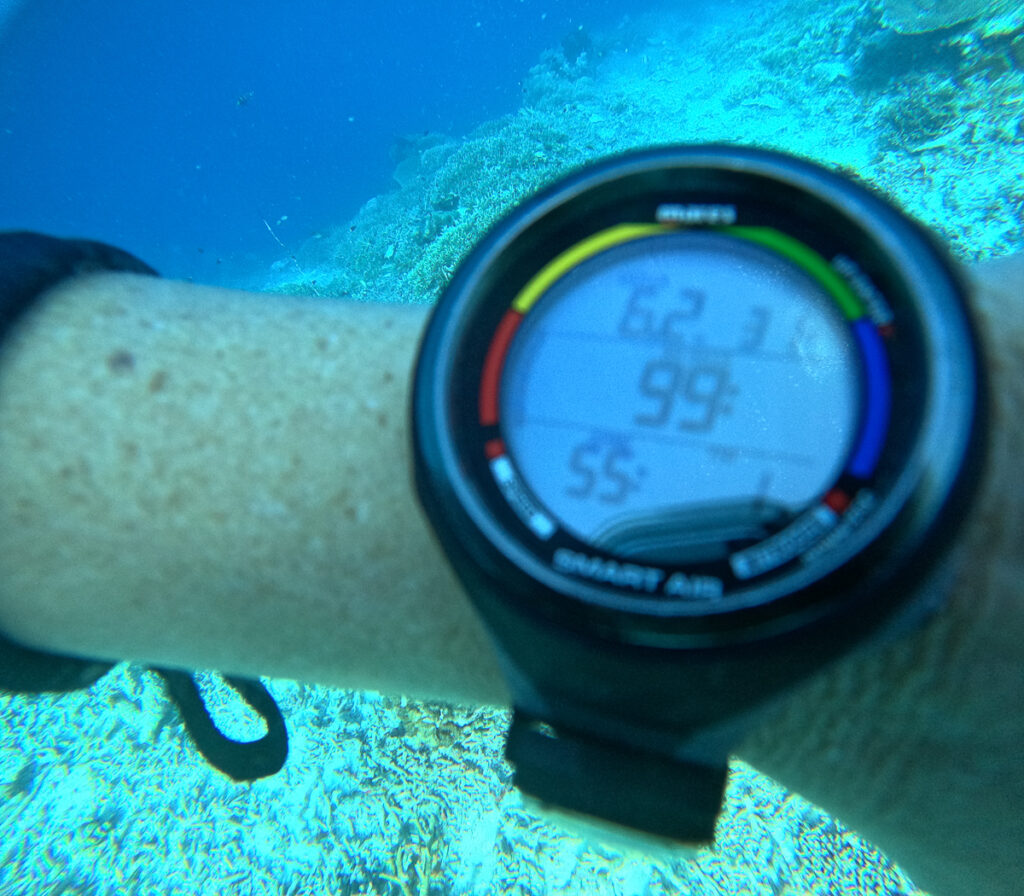
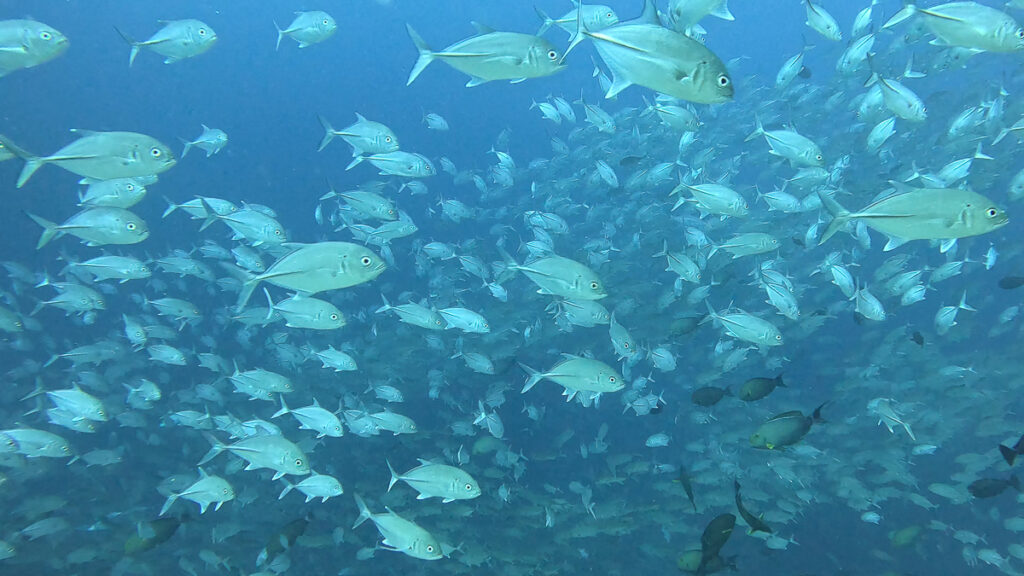
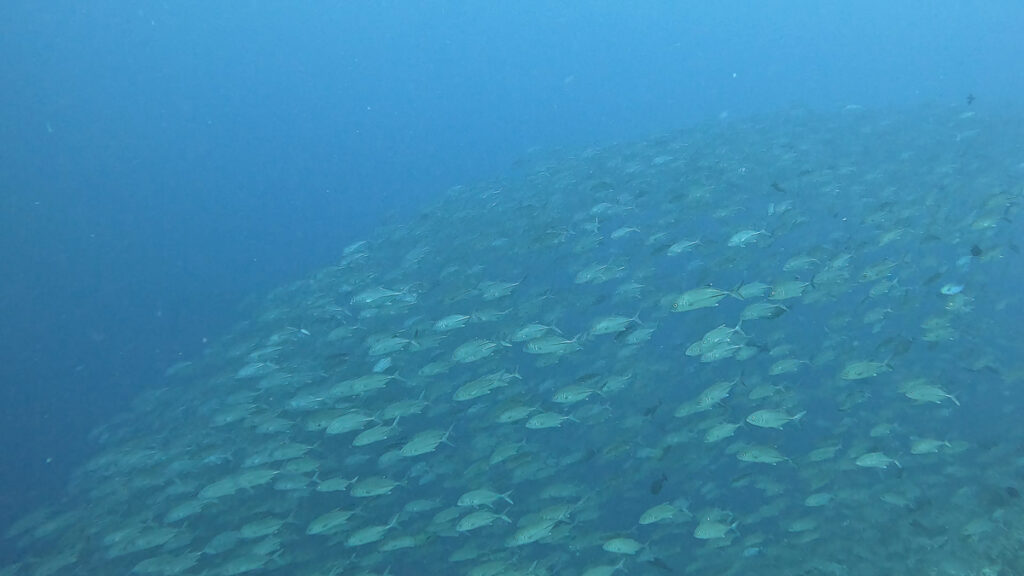
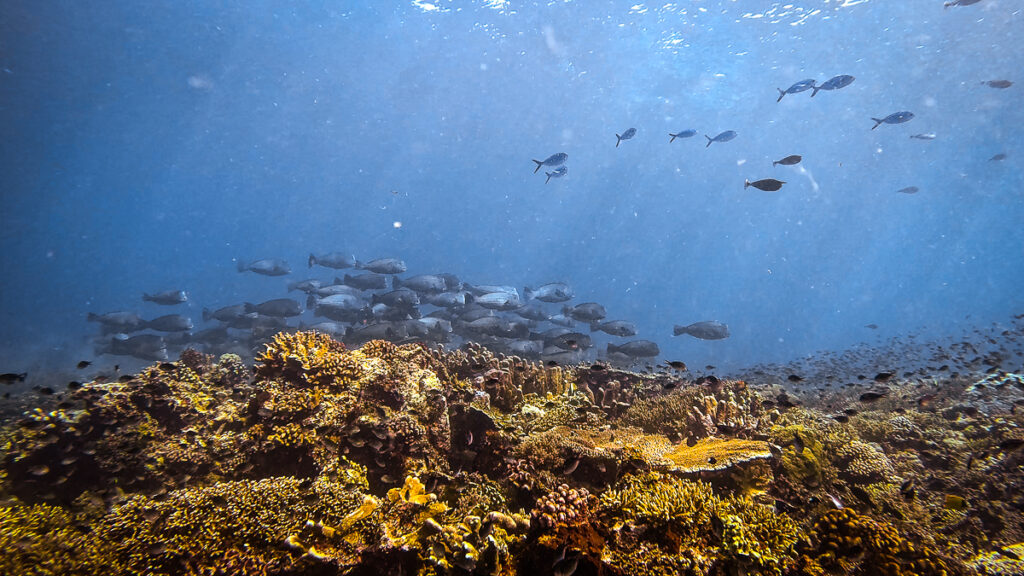
A night dive was offered, but I didn’t join it as I don’t usually like night dives.
The boat gracefully anchored through the channel in the heart of the atoll, revealing a breathtaking view of the shallow reef and a stunning sunset. The myriad shades of blue in the water perfectly encapsulate the essence of a tropical paradise island. It’s no wonder some people call this area the “Maldives of Indonesia.”
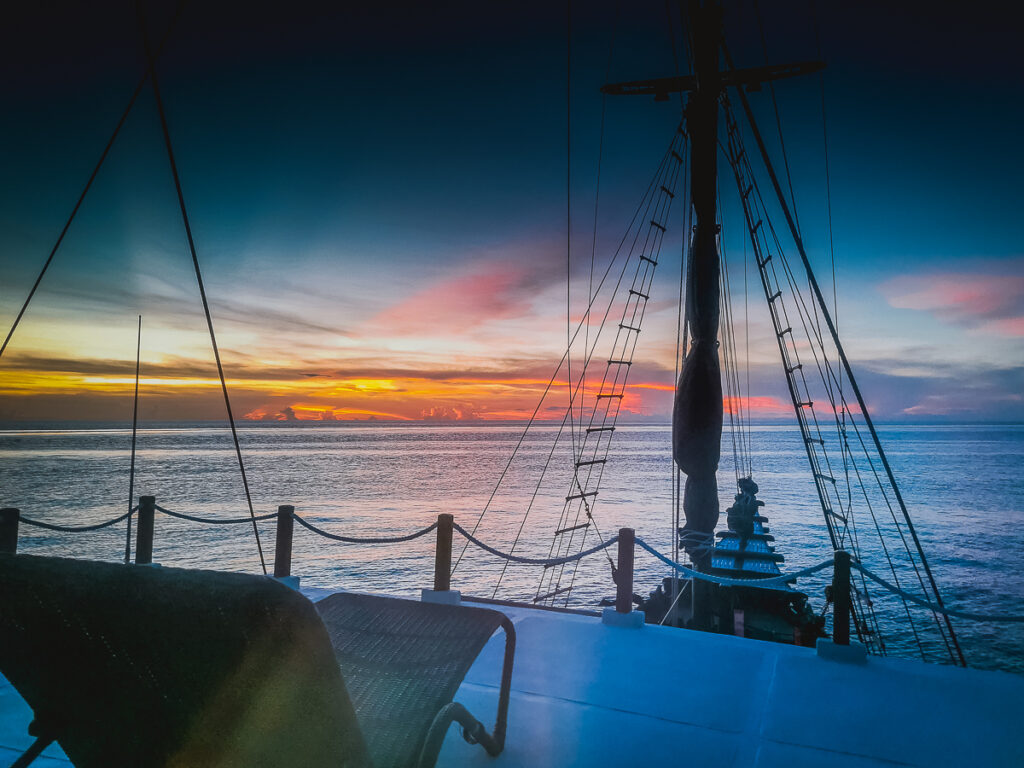
Day 6- Diving Maratua walls and hammerhead shark!
Maratua Gorgonzola dive site
I dived at Maratua Gorgonzola, a deep wall dive similar to the ones we did the previous day. Although there weren’t many fish, the highlight was seeing a hammerhead shark passing by in the blue! It was a reminder that you never know what might swim past with the ocean.
We spotted a stunning mantis shrimp and a few turtles in the shallows. The top reef was also lovely.
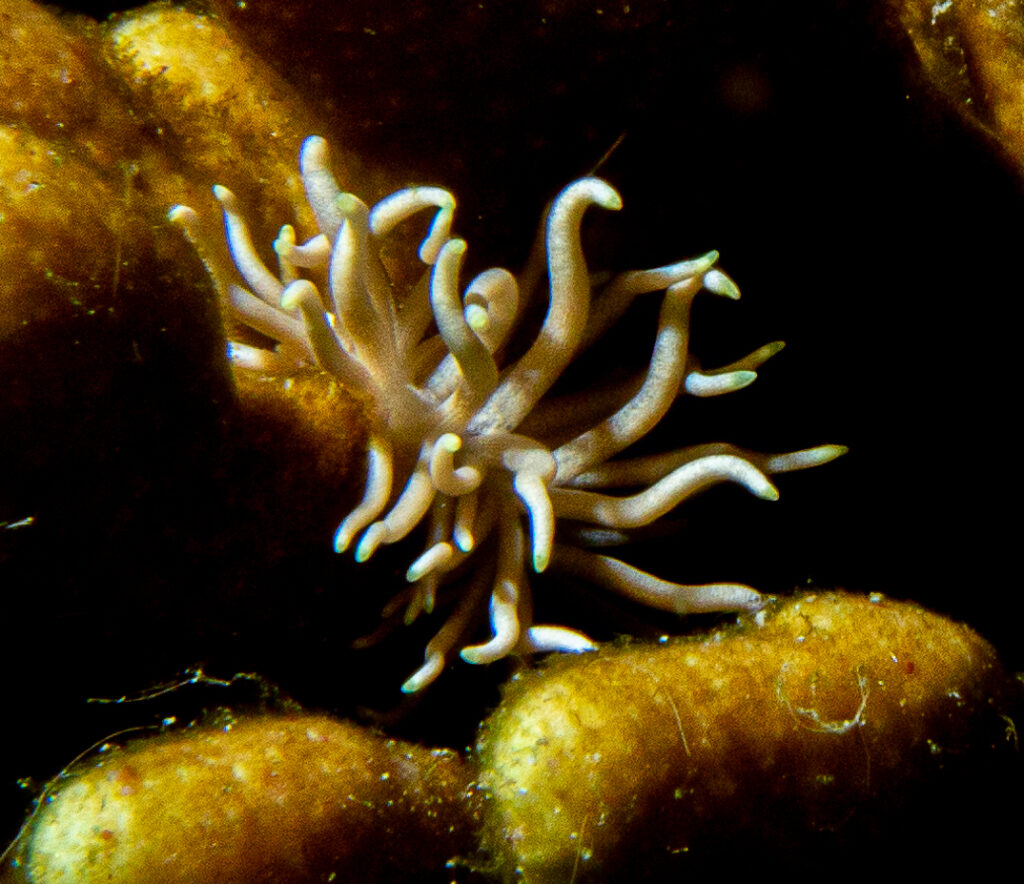
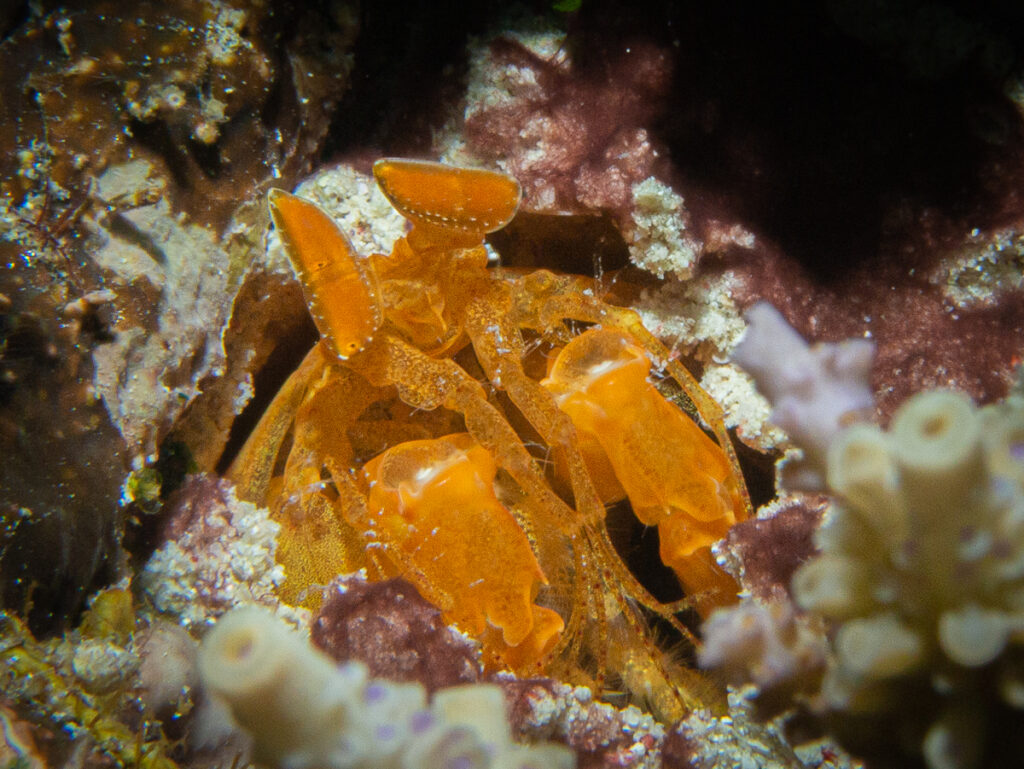
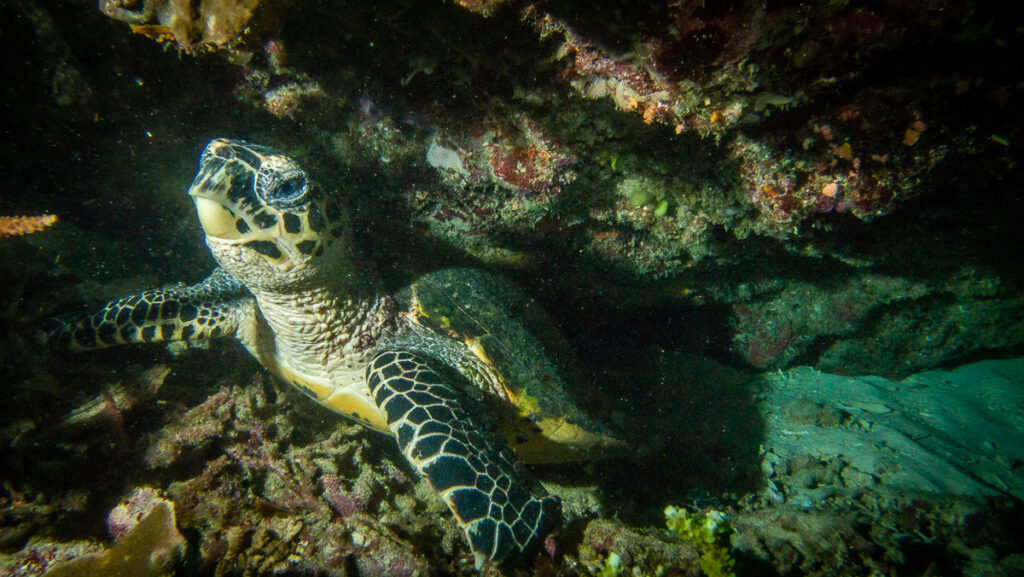
Maratua Lighthouse dive site
Our dive at Maratua Lighthouse, situated on the northern corner of the island, was not as enjoyable. This site has a steep slope with a few ridges. Unfortunately, the reef was damaged in many places, likely due to dynamite fishing. The slope made it easier for fishermen to target, leaving much of the coral in a sad and broken condition.
Combined with rainy weather above the water, this was not the best dive of the trip. The overall atmosphere was a bit gloomy, and the damaged reef was disappointing.
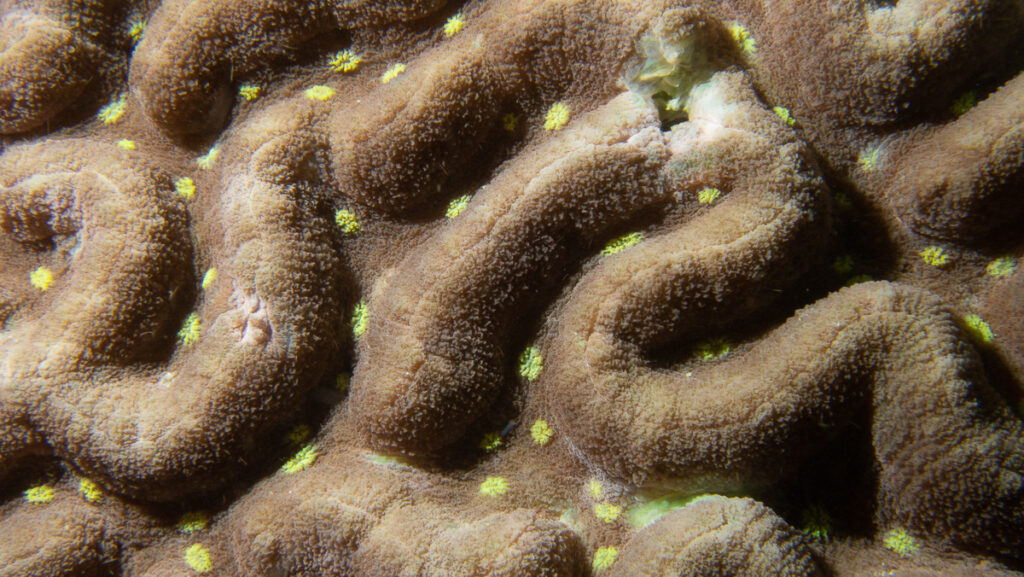
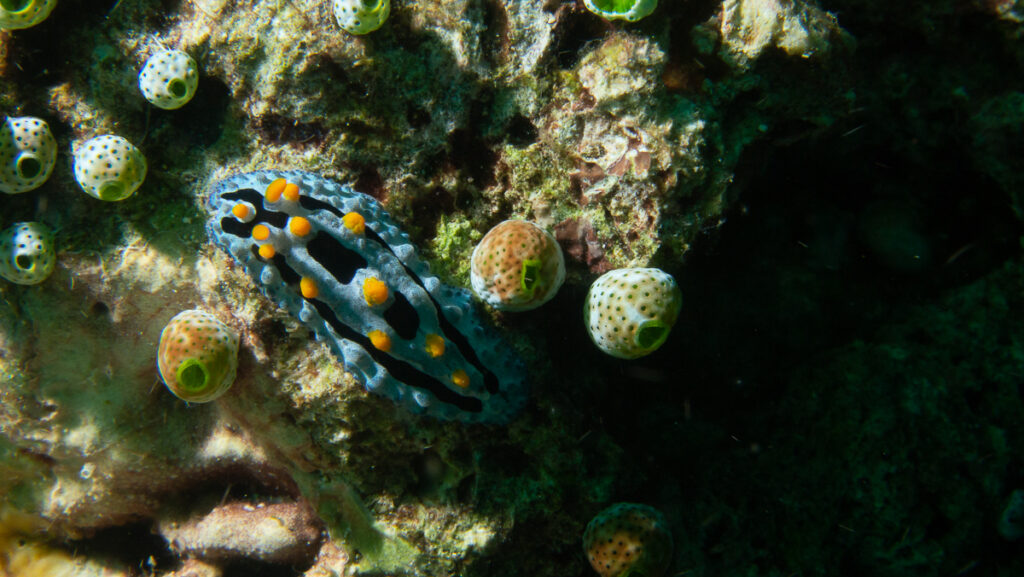
Fantasy Wall dive site
Fantasy Wall, located west of the lighthouse, offered a much more beautiful dive. This deep wall is adorned with incredible sponges of various shapes, black corals, and tunicates, creating an ethereal feel. The natural formations were amazing, showcasing the crazy shapes that nature can create.
The reef was teeming with small fish and creatures, although we didn’t see any big fish. Despite that, it was a beautiful dive. The shallow reef above the wall is in good condition and very pretty. Perhaps being near a few resorts has protected it from extensive dynamite fishing.
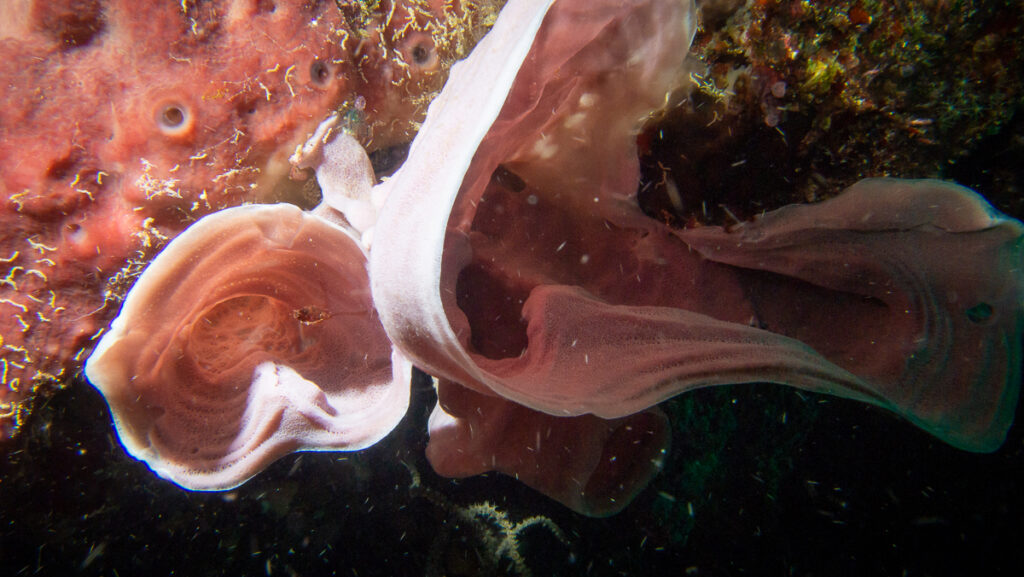
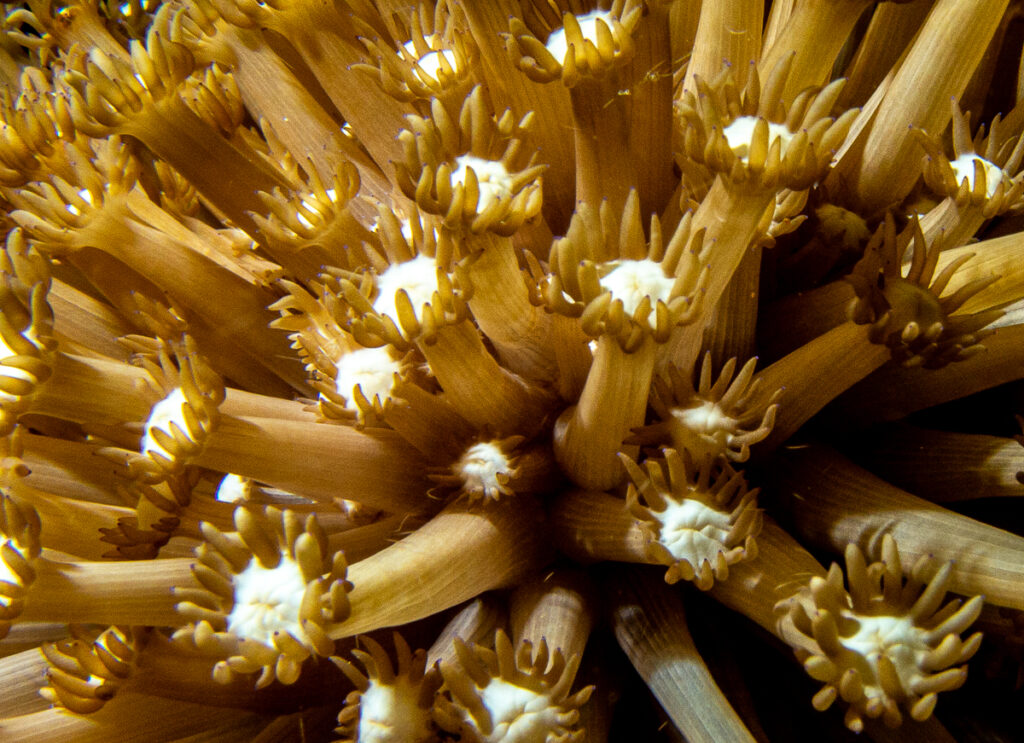
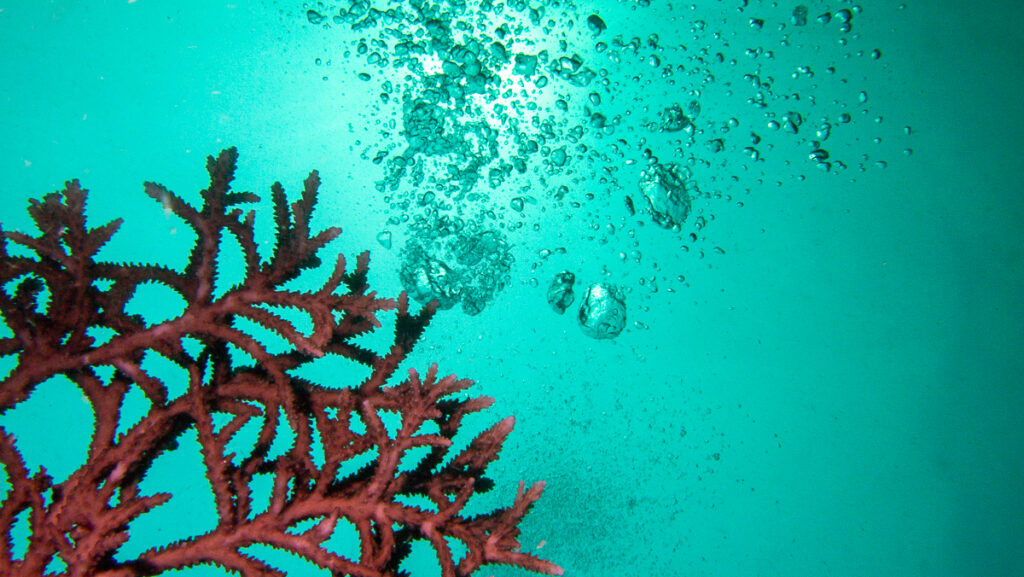
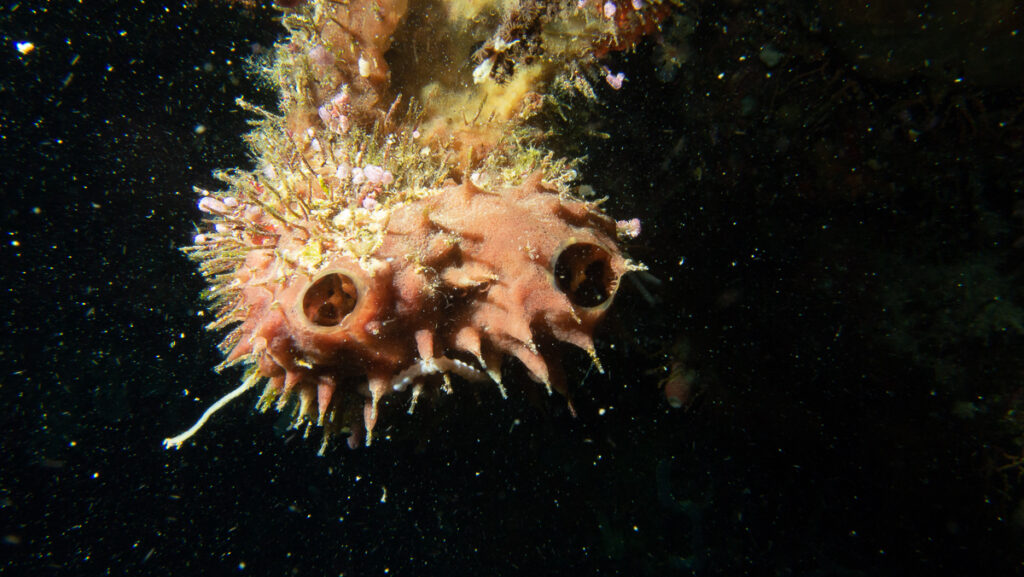
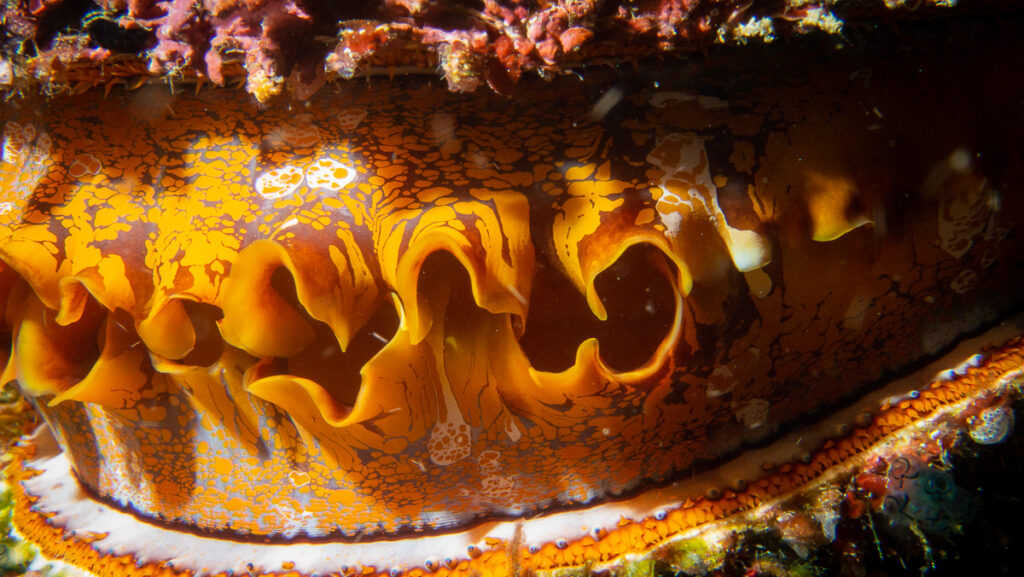
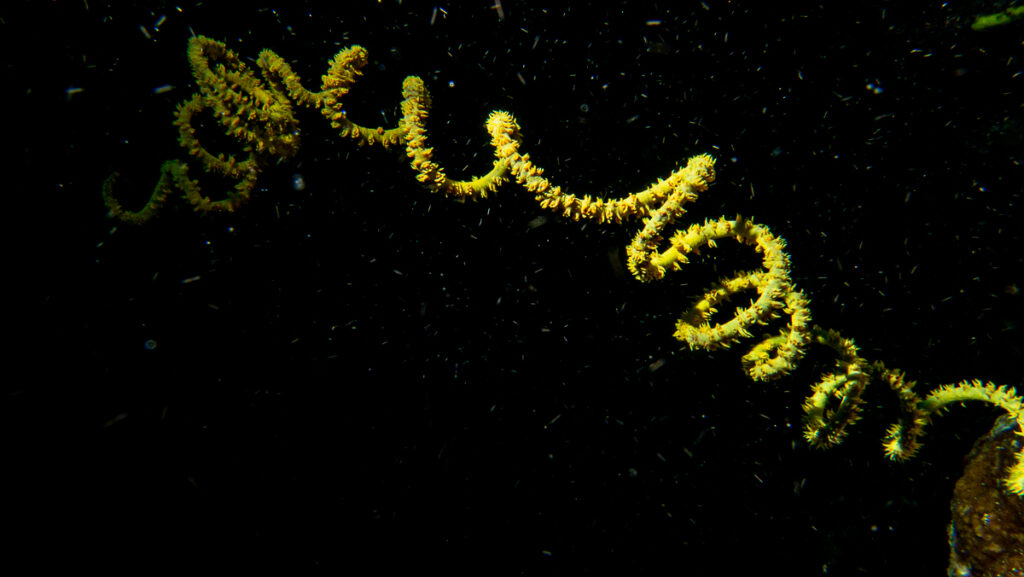
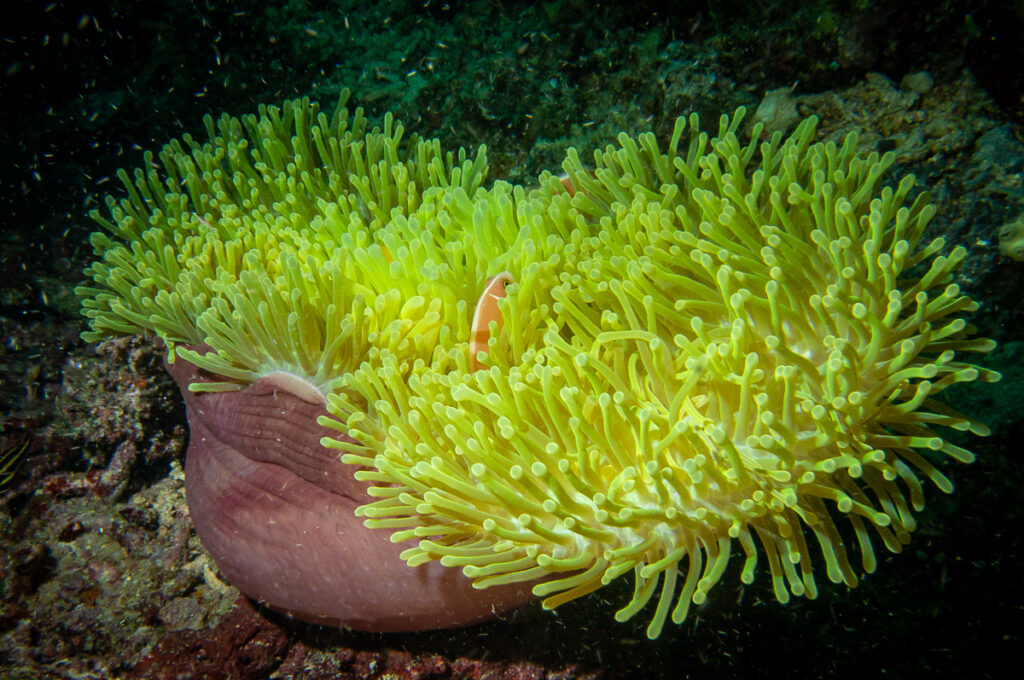
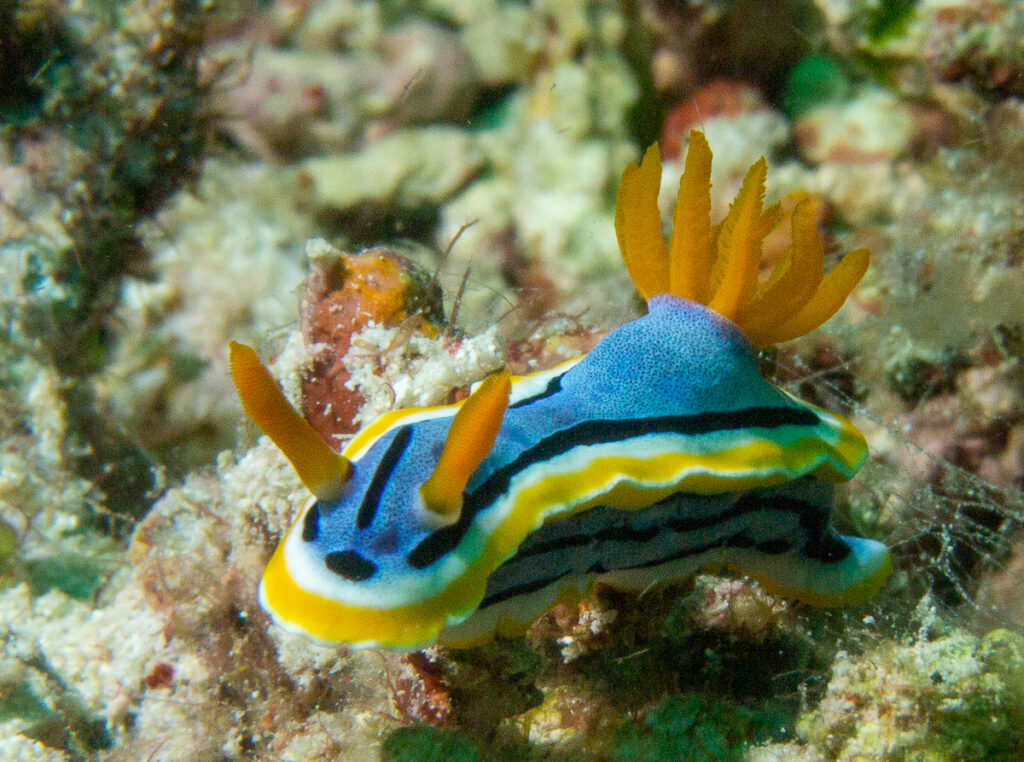
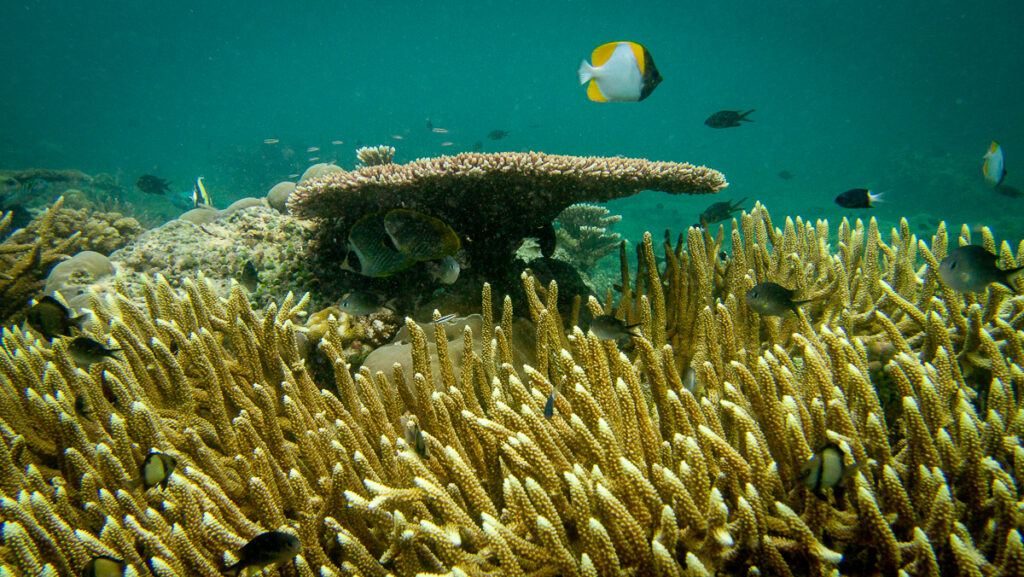
Day 7: Looking for whale sharks and missing out on the chance to dive with them
We navigated overnight to reach the bagans, which are fishing platforms where whale sharks often linger, hoping to catch leftover fish. The Ilike team woke up very early to visit these bagans in search of whale sharks.
At one bagan, they found two whale sharks, and everyone onboard was excited about the chance to dive with them. However, by the time we geared up and reached the bagan, another dive group from Maratua was leaving the water. We saw one of their divers trying to grab or ride the whale shark, which the whale shark clearly didn’t enjoy. By the time we got in the water, the whale sharks were gone. We were all very disappointed by the other divers’ behavior.
After the whale shark dive was canceled, the Ilike liveaboard made its way towards Karang Malungu for two more dives. Karang Malungu is a vast atoll wholly submerged, so you can’t see anything from above. It is a sloping sandy area interspersed with reef bommies. The area is relatively shallow, with many coral patches between 5 and 25 meters deep.
Devil Slope Dive Site
The area is a sloping, sandy expanse dotted with reef bommies ranging in depth from 5 to 25 meters. The visibility at Devil Slope wasn’t excellent, but it was interesting from a macro point of view. The site is teeming with mushroom corals that host crabs and mushroom coral pipefish. I even spotted a leaf fish. The shallow reef, adorned with both hard and soft corals, was incredibly colorful and turned out to be my favorite part of the dive.
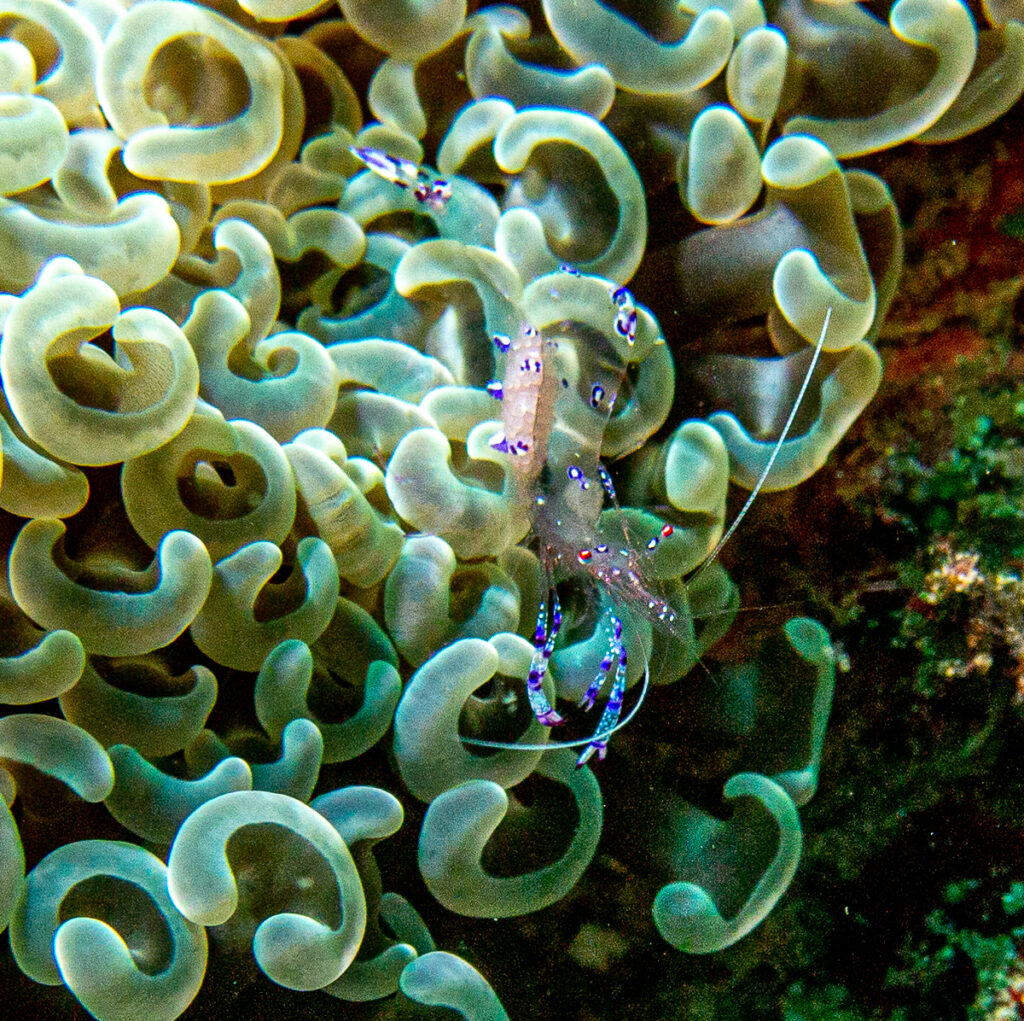
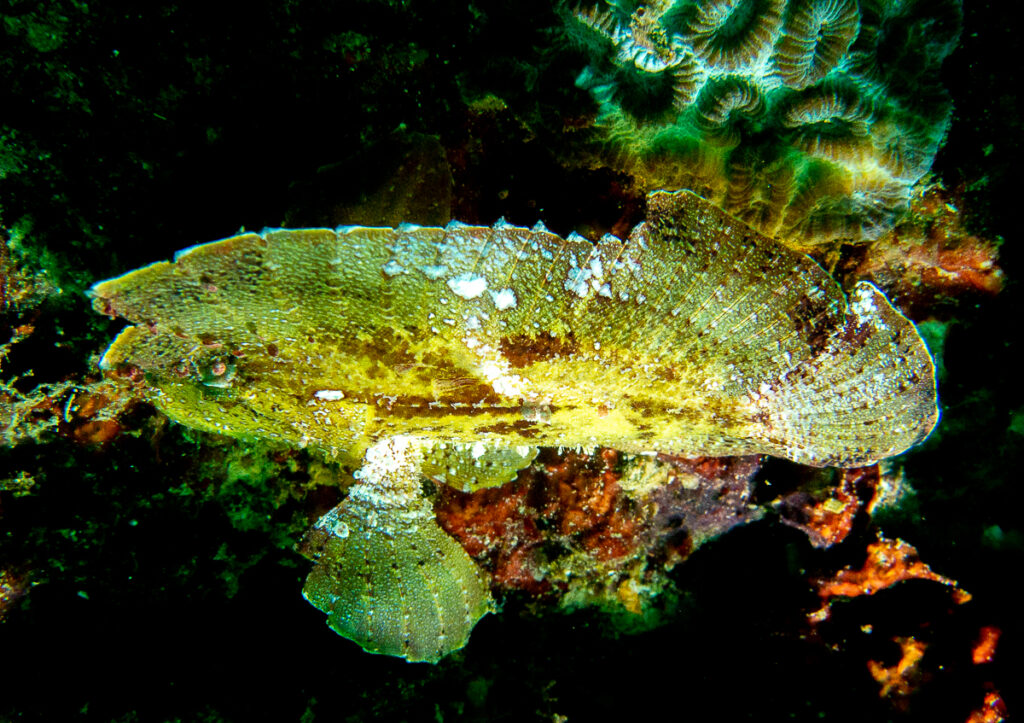
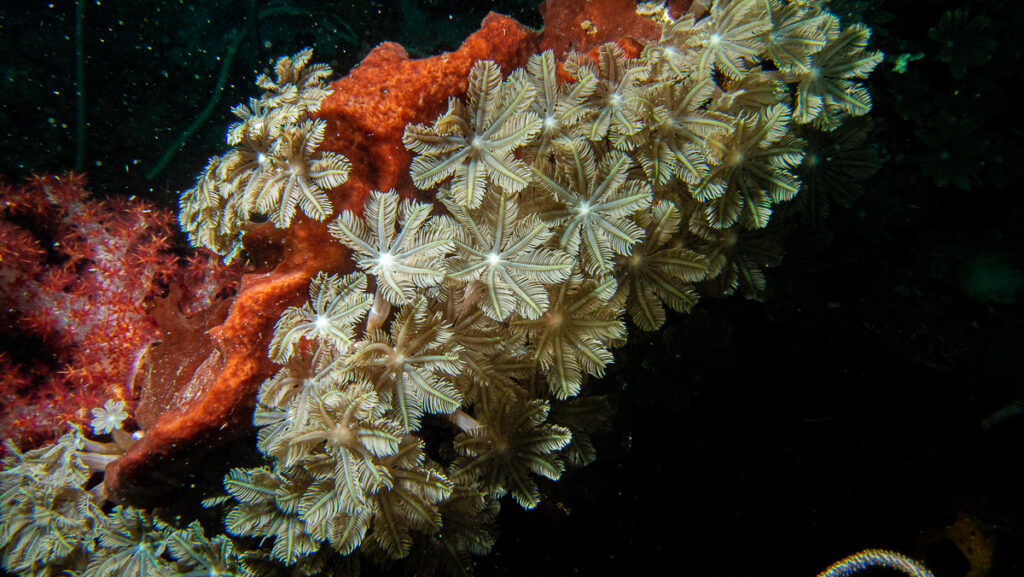
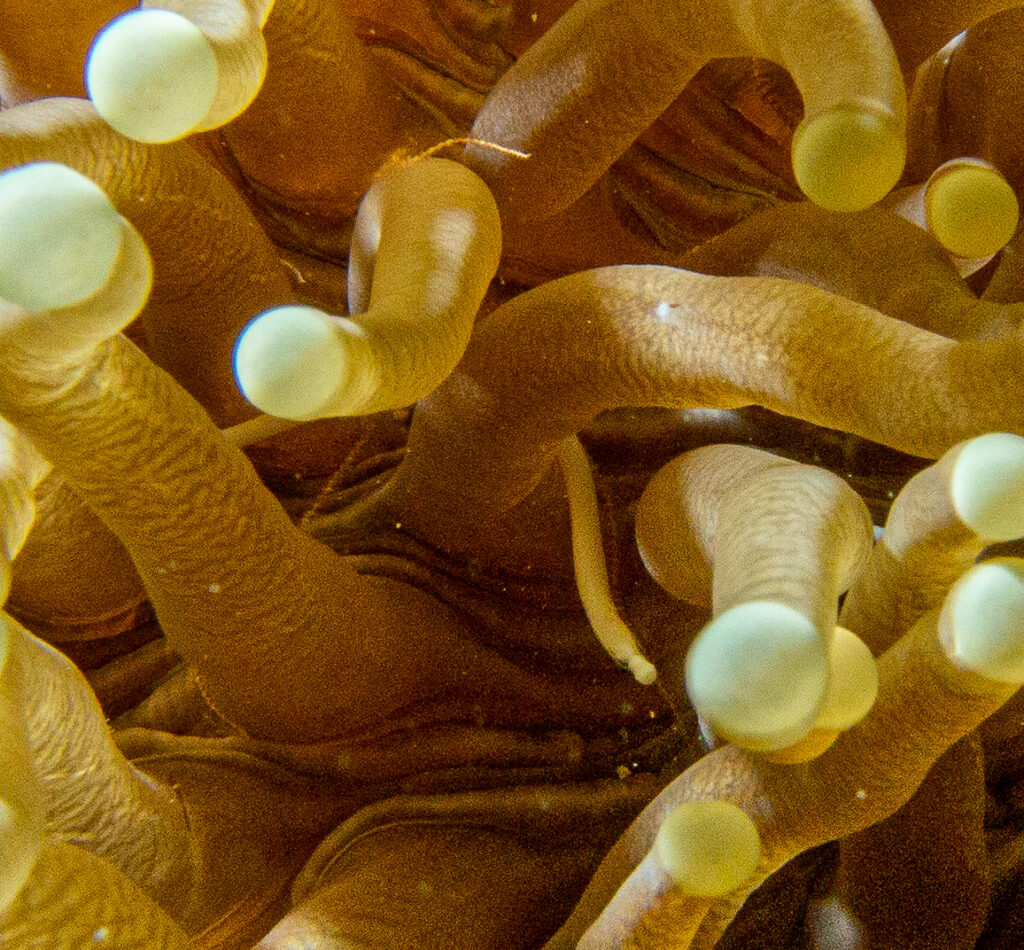
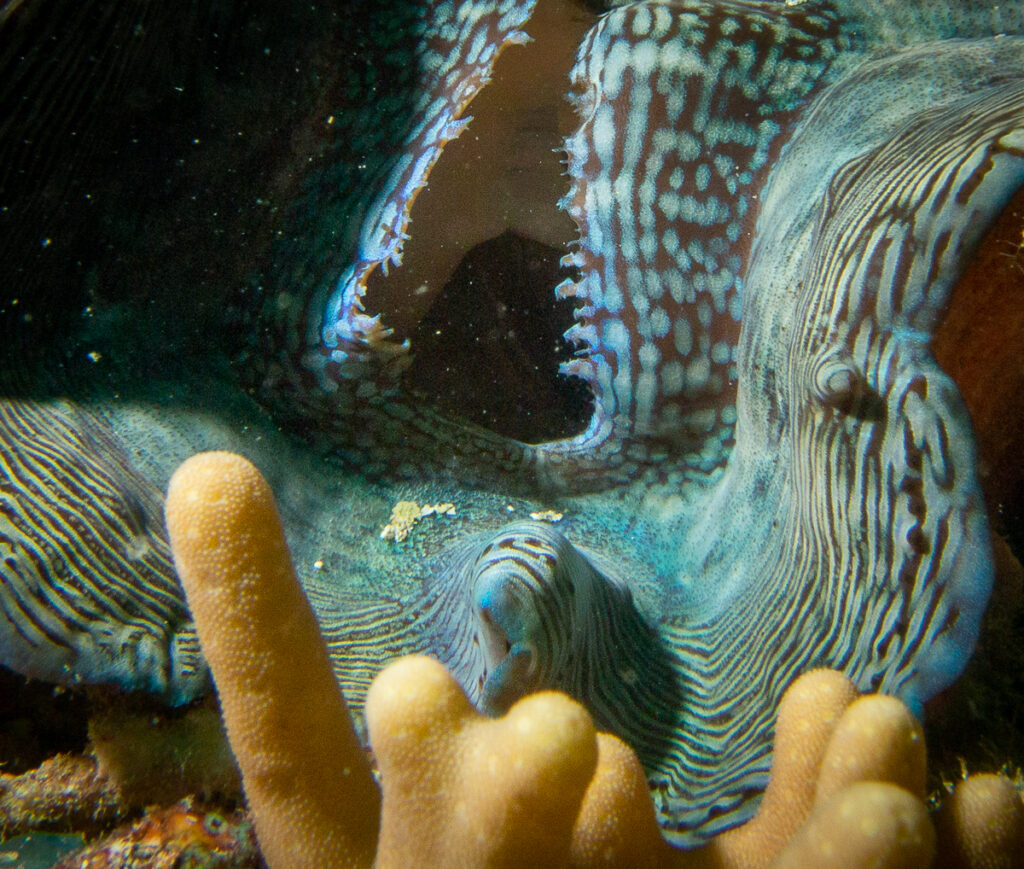
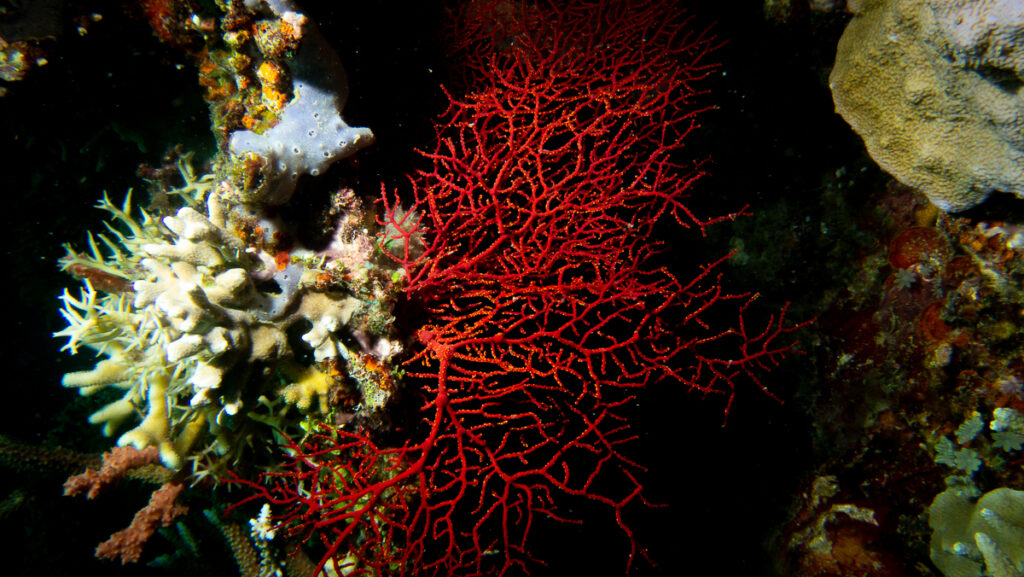
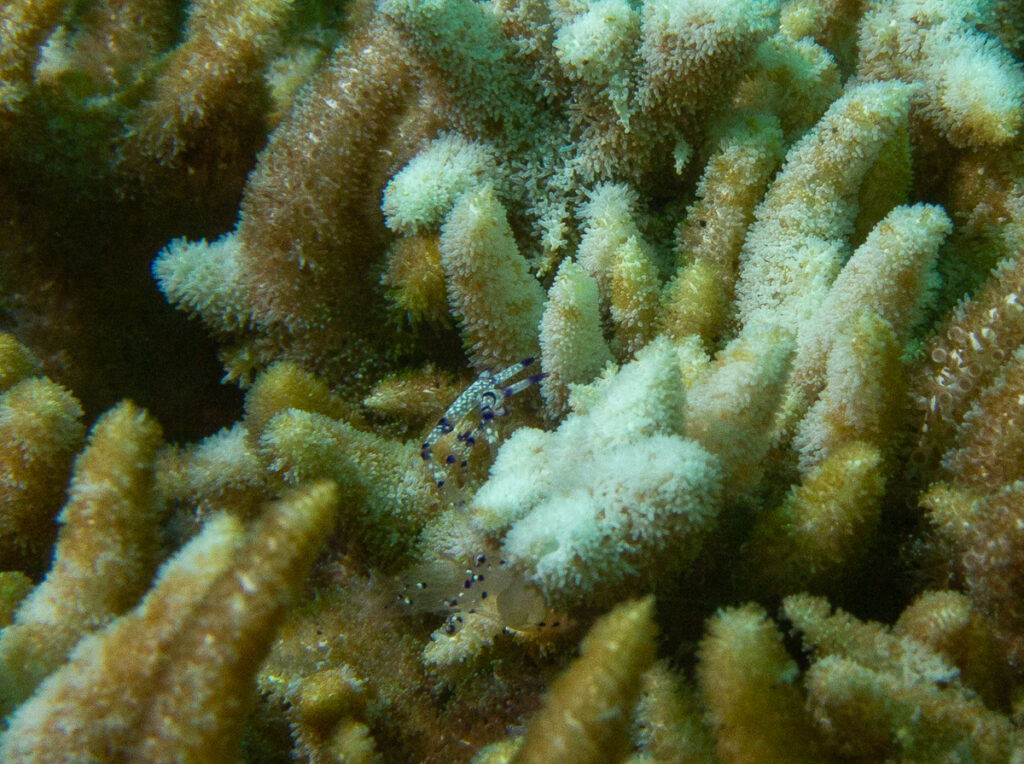
Kapal Dive Site
Kapal means ship in Indonesian and is located within the same atoll as Devil Slope but slightly deeper. The site is home to a shipwreck, although we could not locate it. Among the coral bommies, we found numerous nudibranchs and flatworms. A cuttlefish took a particular interest in my camera and stayed with me for about five minutes. The most astonishing sight was the large number of titan triggerfish building their nests. At one point during the dive, there were over 20 of them! I had never heard of titan triggerfish schooling before, but luckily, they weren’t aggressive.
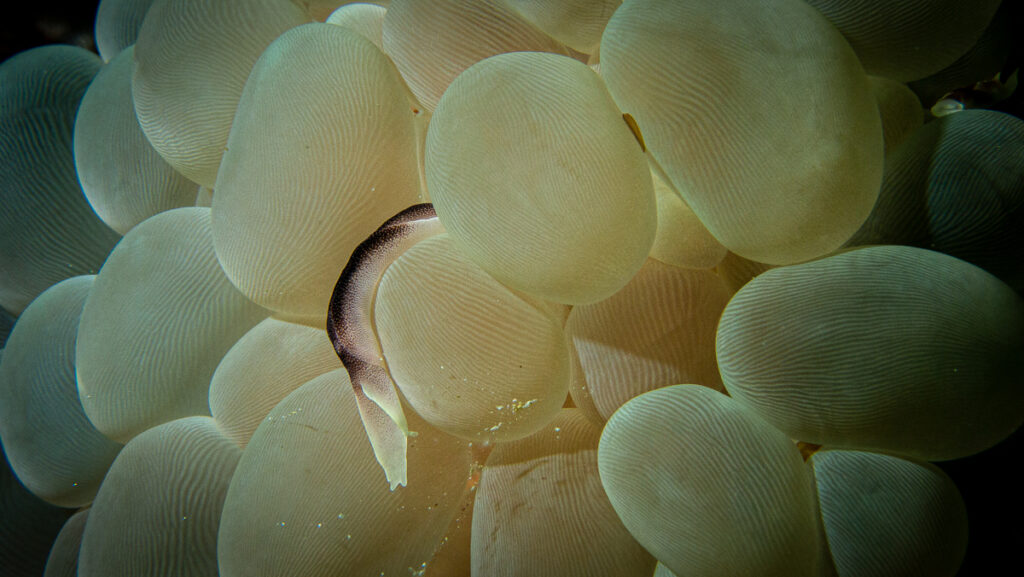
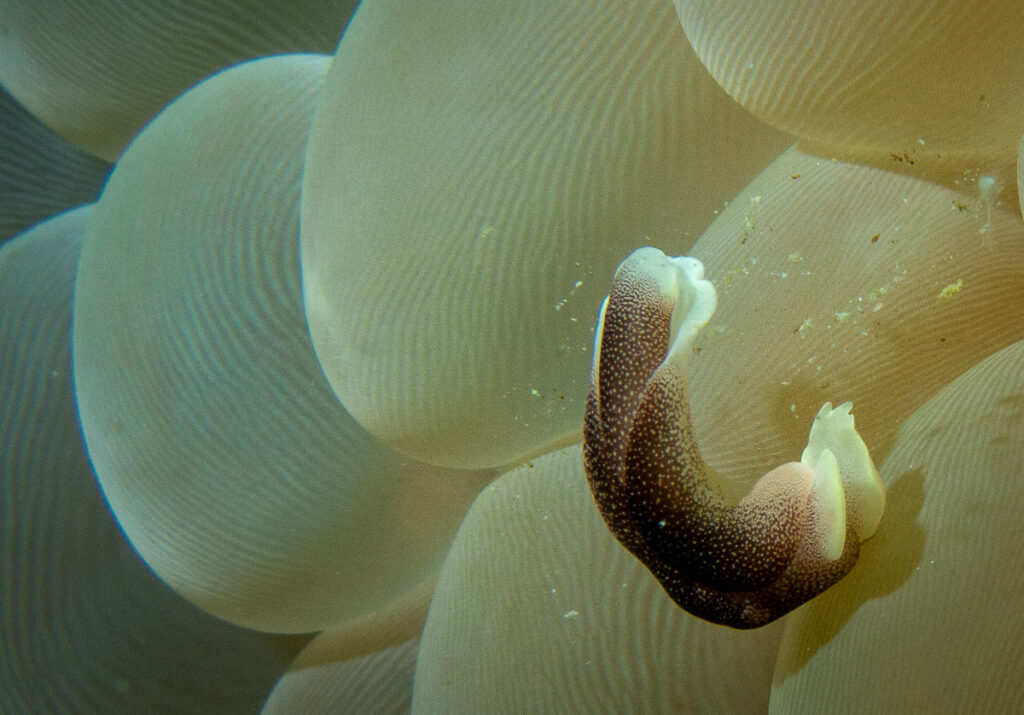
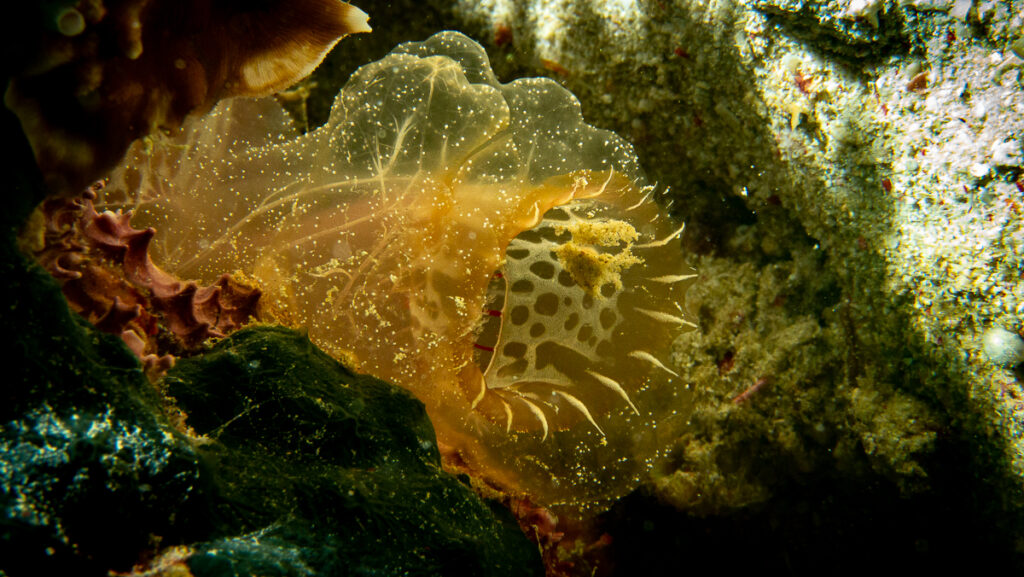
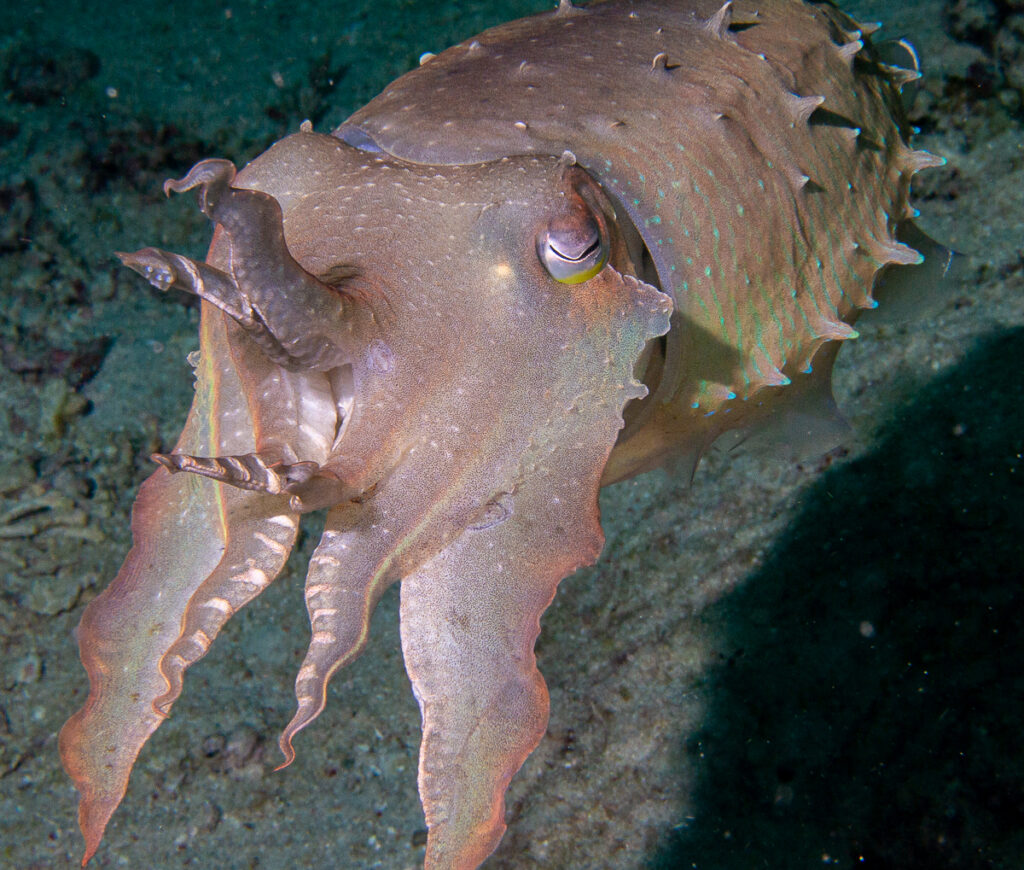
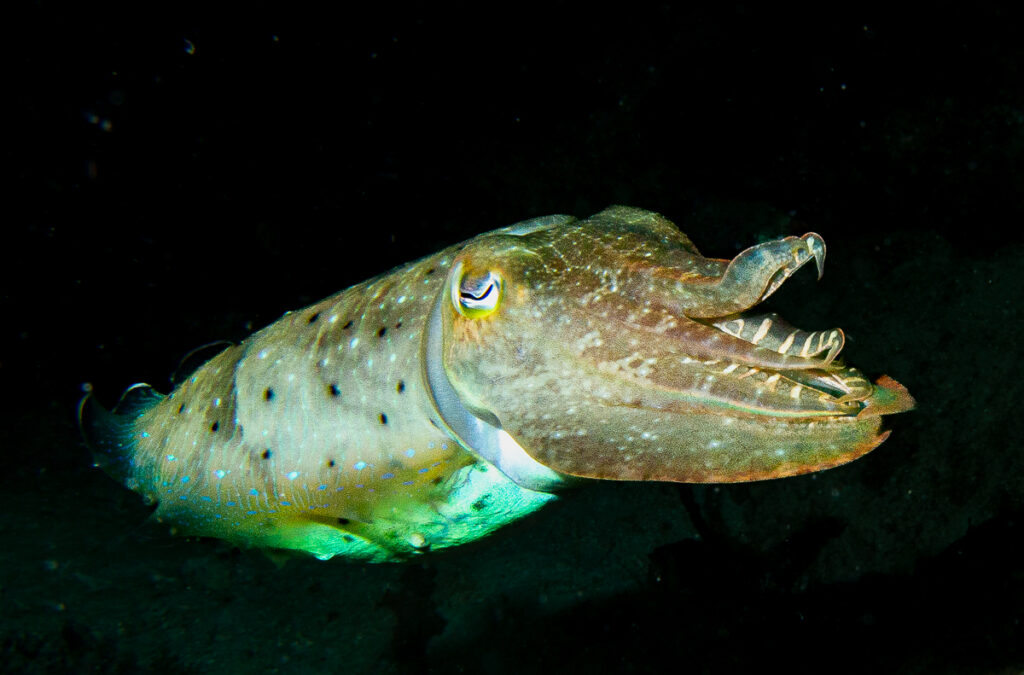
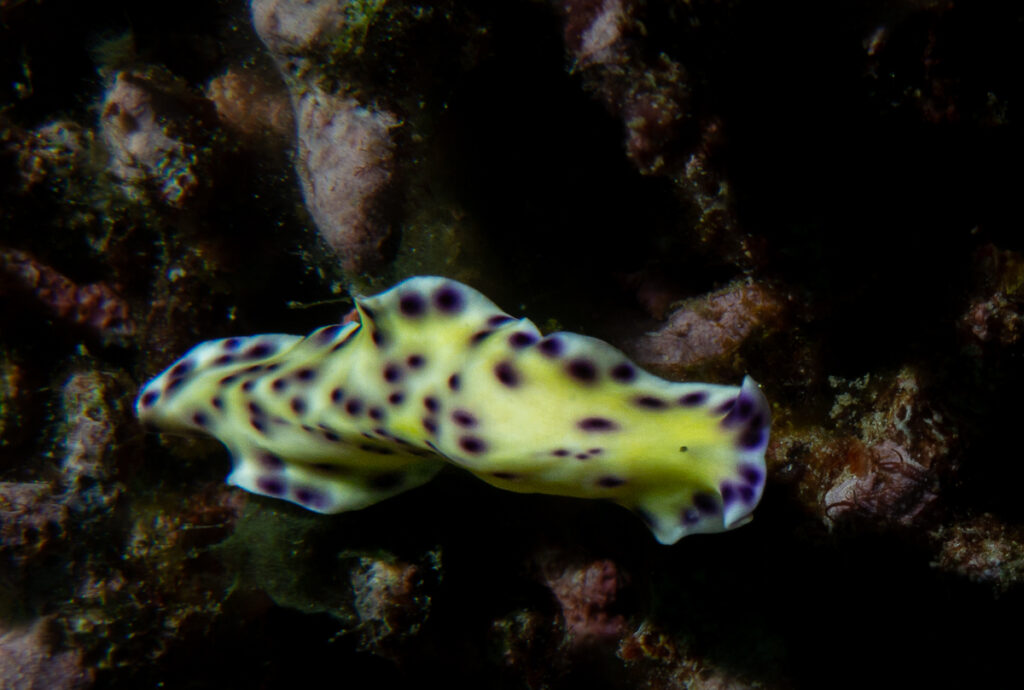
Day 8: Back to Derawan for the last dives of the trip
We returned to Derawan for more macro dives. Since it was too soon after my last dive and I wanted to maintain a 24-hour surface interval, I chose to snorkel instead. It turned out to be a fantastic snorkeling experience. I started under the pier, where I swam among schooling snappers, rabbit fishes, and bat fishes. Then, I explored the shallow sandy area and found many critters. However, the most fantastic part of the snorkeling trip was encountering turtles. I saw about 20 of them in the shallow waters. One turtle, in particular, took a keen interest in me, and we swam together for about 20 minutes. It was absolutely incredible. The turtle would watch me as we swam alongside each other. If I stopped swimming, it would also stop and turn back to wait for me. I felt like I had made a new turtle buddy!
After a delightful lunch, we commenced our journey back to Tarakan. The sea was tranquil, resembling a serene lake, and the sun illuminated the sky. Standing on the top deck, gazing at the horizon, I found the journey truly beautiful. The sunset was, once again, a sight to behold.
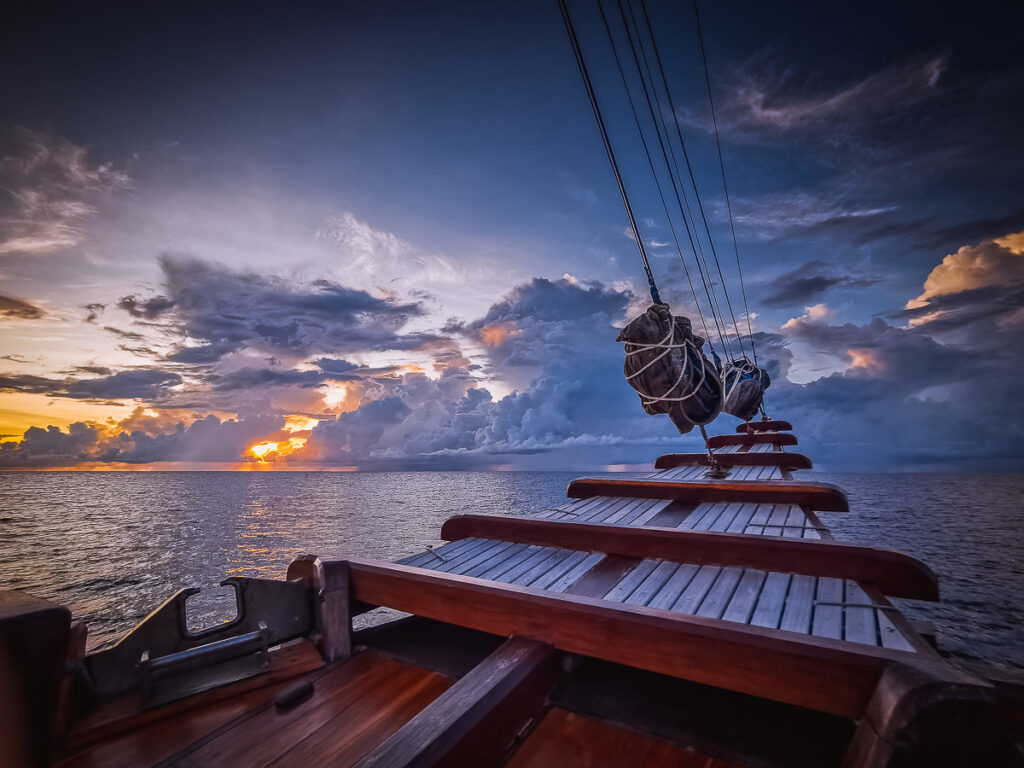
As we gathered for our final dinner, the shrimp burgers were enjoyed by all. Following dinner, the crew turned into a live band! They graced us with their talent, performing a few traditional Indonesian songs.
Internet and phone connection in the Derawan archipelago
There is no internet available on the Ilike liveaboard. If you wish to connect during the trip, you can purchase a Telekomsel card for your mobile phone, which costs about 150,000 Indonesian rupees (approximately 10 USD) with a monthly data plan. Telkomsel has the best coverage in the remote regions of Indonesia.
The internet connection was generally good in most areas. We usually had a 3G or 4G signal for a few hours a day, and the boat typically anchored at places with internet signals for the night. In Tarakan and Derawan, the signal was good enough for video calls. In Sangalaki and Maratua, we had a weak signal from the top deck, sufficient for sending messages and emails. However, there was no signal in Kakaban, and the whale shark bagans were nearby.
Tip: The internet signal improves the higher you are on the boat. It often does not work in the cabin, but it does on the sun deck. Don’t expect the connection to be good enough to download movies, but it is often strong enough for emails and even WhatsApp calls, so you can plan to stay in touch with your friends and family.
What About Non-Diving Passengers?
Based on my experience, this cruise may be more suitable for individuals interested in diving, as it predominantly focuses on this activity. However, for those who may not be as inclined towards diving, there are still opportunities to enjoy snorkeling and other offered activities while on the Ilike Liveaboard. Kalimantan features numerous stunning shallow reefs that are ideal for snorkeling.
In Conclusion of my review of the Ilike Liveaboard
The Ilike liveaboard offers outstanding value for money when diving in Indonesia and compares very well to more expensive boats. The cabins are on the small side, but the rest of the boat is spacious. The food is good, and the service is outstanding. It is an excellent option for advanced divers and photographers.
Kalimantan and the Derawan archipelago are beautiful and offer some good diving. But the dynamite fishing is worrying and could explain why there were fewer big fish than when I dived in the same area six years ago. We had some beautiful wall dives and saw lots of turtles. However, the trip felt short as we didn’t see any manta rays or whale sharks, and very few sharks. Even the jellyfish made a very timid appearance.
This could be why Ilike decided not to offer trips to Kalimantan next year, going instead to Sulawesi. Sulawesi is a great region in Indonesia that is still relatively unexplored. It offers amazing diving with very few divers. To know more about Sulawesi diving, read my review of the Sulawesi trips on the Jakare liveaboard and Ambai liveaboard.
I had a great trip on the Ilike Liveaboard and look forward to cruising with them again. To check availability and book your trip on Ilike Liveaboard, check their website here.

